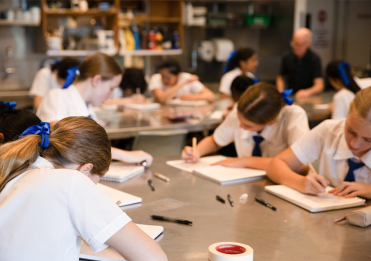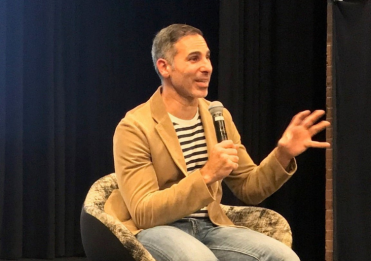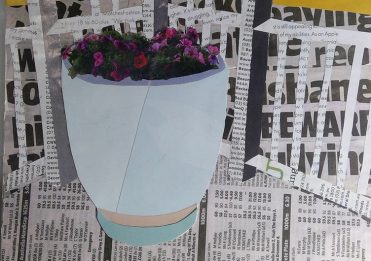2024

This week’s Artwork of the Week is Self Portrait, by Scout Sommerfeld (12L).
‘In order to explore the concept “art as knowledge”, I have investigated my focus of ‘my perception of my life’ through art to create new knowledge within myself and the viewer. Through my personal context of struggling with the concretization of my identity, I have used the symbol of a human form—rendered metaphorically empty from my use of negative space inside the work and identity-less from my monotonous repetition of line and colour—as a blank slate for the audience to project identity upon. The symbolically and physically contrasting industrial-style leather jacket carries its own strong political and social connotations, encouraging viewers to consider the relationship between fashion’s statement of identity and ‘true’ identity. Do we, like the mannequin, look into the mirror which shows us ourselves and questions whether we are hollow?’

This week’s Artwork of the Week is Rhythms of Reflection, by Mycah Hernandez (12R).
‘The concept of Art as Knowledge guided the exploration of my focus, “mindfulness”. I created a visual open-ended narrative juxtaposing two five-day weeks: one with no routine changes and another integrating a daily mindfulness exercise. This manifested in five monoprints representing each day of the “unmindful” week and five vibrantly coloured braided objects symbolising the “mindful” week.
By recording my heartbeat and scaling each braided object’s length to match my heart rate at 6 pm daily (e.g. 100 bpm = 100 cm braid), I effectively conveyed the tangible effect of mindfulness on wellbeing. Through exploring the formal context, I used various new media to distinguish the weeks and create contrast in colour (B&W prints vs colourful braided objects) and form (two dimensions vs three dimensions).
As you mindfully engage with the installation’s intricate details, ask yourself: how could implementing mindfulness into your everyday routine impact your own life?’

This week’s Artwork of the Week is Envy’s Evolution, by Siri Chadalavada (12W).
‘This unit’s topic of Art as Knowledge, combined with my personal focus of memories and their impact on identity have guided and inspired the formation of my artwork Envy’s Evolution.
Calling upon my knowledge of my personal and contemporary contexts of growing up in a predominantly white country as a South Asian girl in the 21st century and my difficulties in balancing the stark contrast in beauty standards, cultural norms, and racism, this artwork successfully navigates my fractured relationship with my cultural identity through formal elements of colour, positioning, and symbols. A progressive story of reluctant acceptance of my cultural identity is evident throughout the series of photographs, reinforced by the reduction of cracks in the mirrors as the series progresses.
Do we all view ourselves through a fractured perception or do we really all remain in a closeted fantasy?’

Isabella Patten (11W)
Our final artwork of the week for Term 2 is a beautiful image by Isabella Patten (11W). Choosing a close-up composition has highlighted the face and expression of the model. The movement of the lighting has successfully led our eye into the middle of the composition where the distorted face is placed. Maintaining a monochromatic colour scheme has also created a strong visual impact.

Summer Khoo (11W)
Summer Khoo’s (11W) symmetrical composition has created a sense of stillness and formality. The vertical placement of the figure contrasts with the asymmetrical arrangement of the mask. The sideways movements of the model’s head create a linear contrast with the wave-like rhythms of the lights behind and around the subject.

Eve Smith (11E)
In this photograph, the model’s facial expression has been clearly captured by the camera. The audience is confronted by the gaze of the subject, outlined by the simple but highly effective mask constructed by Eve Smith (11E) from found objects.

Scarlett Prior (11O)
In our sixth work, Scarlett Prior (11O) has used a monochromatic colour scheme to great effect. The dual image of the face creates some mystery and magic for the audience. The movement across the composition is facilitated by the rippling use of lines caused by the pulsing of the torch employed by the student assisting the photoshoot.

Orli Wachtel (11B)
Every student brings their own personal context to the creation of their work. Orli Wachtel’s (11B) photograph highlights her model projecting an introverted mood. The framing of the face using two different colours leads the viewer’s eye to that face and to the gesture of the outstretched hand which balances the composition. The juxtaposition of stillness and dynamism is the key to the impact of the work and invites the viewer to look deeper into the meaning of the work. Why is this person so still while turbulence is all around them?

Vivienne Gamer (11G)
Our fourth Artwork of the Week for Term 2 showcases Vivienne Gamer’s (11G) striking image. Complementary colours create a strong visual contrast. The linear effect of the orange shapes was generated by the slow movement of a ‘flashing’ torch. The overlaid effect of the face of the model occurred because of the camera’s slow shutter speed.

Madison Huntley (11L)
In our third work, Madison Huntley (11L) has created a feeling of horizon tension with jagged shapes created by torches, held by other students, moving rhythmically around the model. The limited choice of colour also contributes to the success of the work.
The first unit of Year 11 Visual Art is entitled ‘Art as Lens’. Students respond to the material world through a variety of viewpoints expressed in a wide range of experimental works connected with artists who are mentors to process and ideas. Light photography is a marvellous technique involving advanced camera skills. The basis of the experiment is a constructed mask which a model wears while the artist directs the shoot and the taking of photographs.
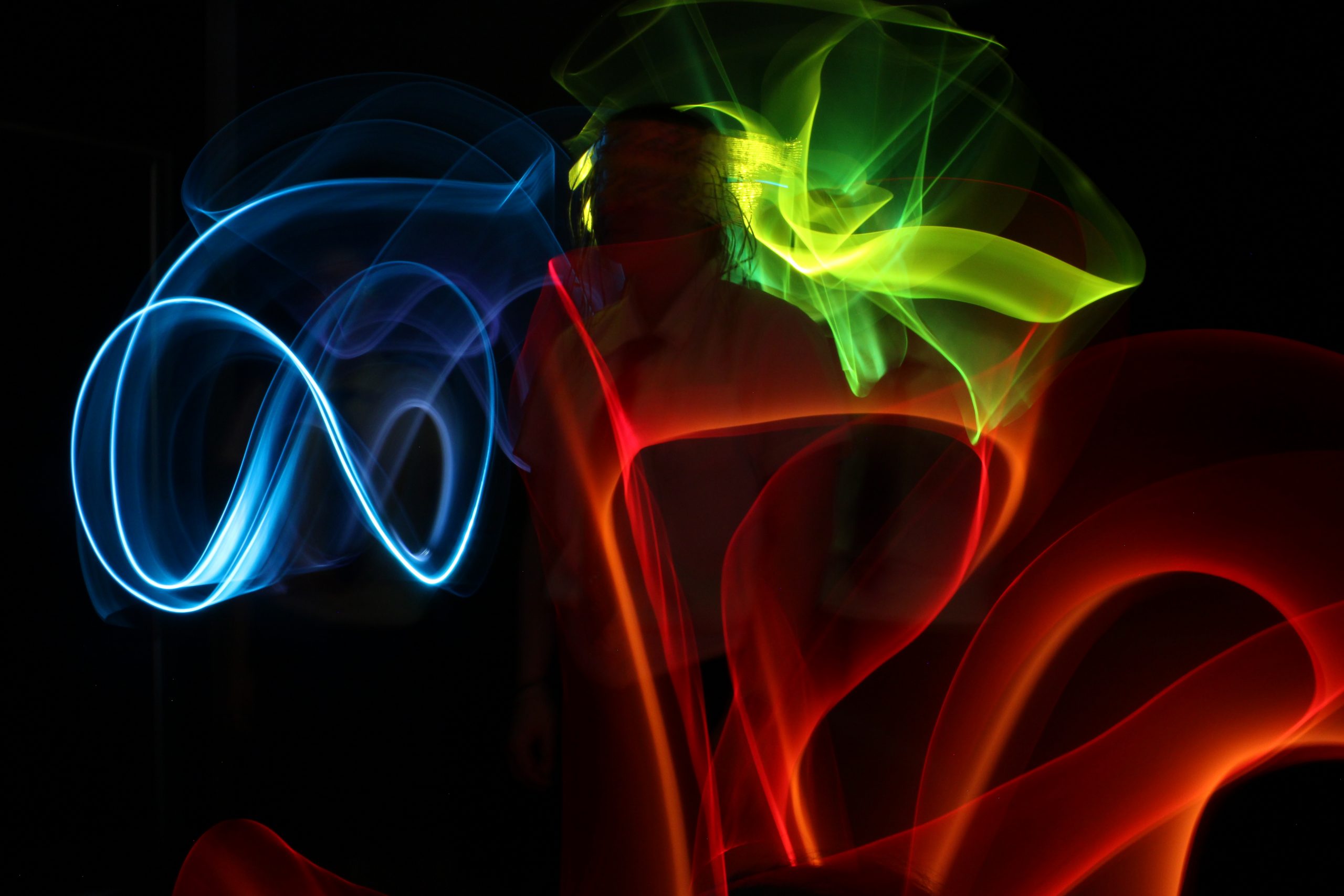
Zoe Freeman (11E)
This is the second in our showcase of Light Photography. The first Unit of Year 11 Visual Art is entitled ‘Art as Lens’.
Students respond to the material world through a variety of viewpoints expressed in a wide range of experimental works connected with artists who are mentors to process and ideas. Light photography is a marvellous technique involving advanced camera skills. The basis of the experiment is a constructed mask which a model wears while the artist directs the shoot and the taking of photographs.
Zoe Freeman (11E) has captured an amazing sense of rhythm with the dazzling line effects caused by a moving torch. The face is obscured but sits centre as a focal point.
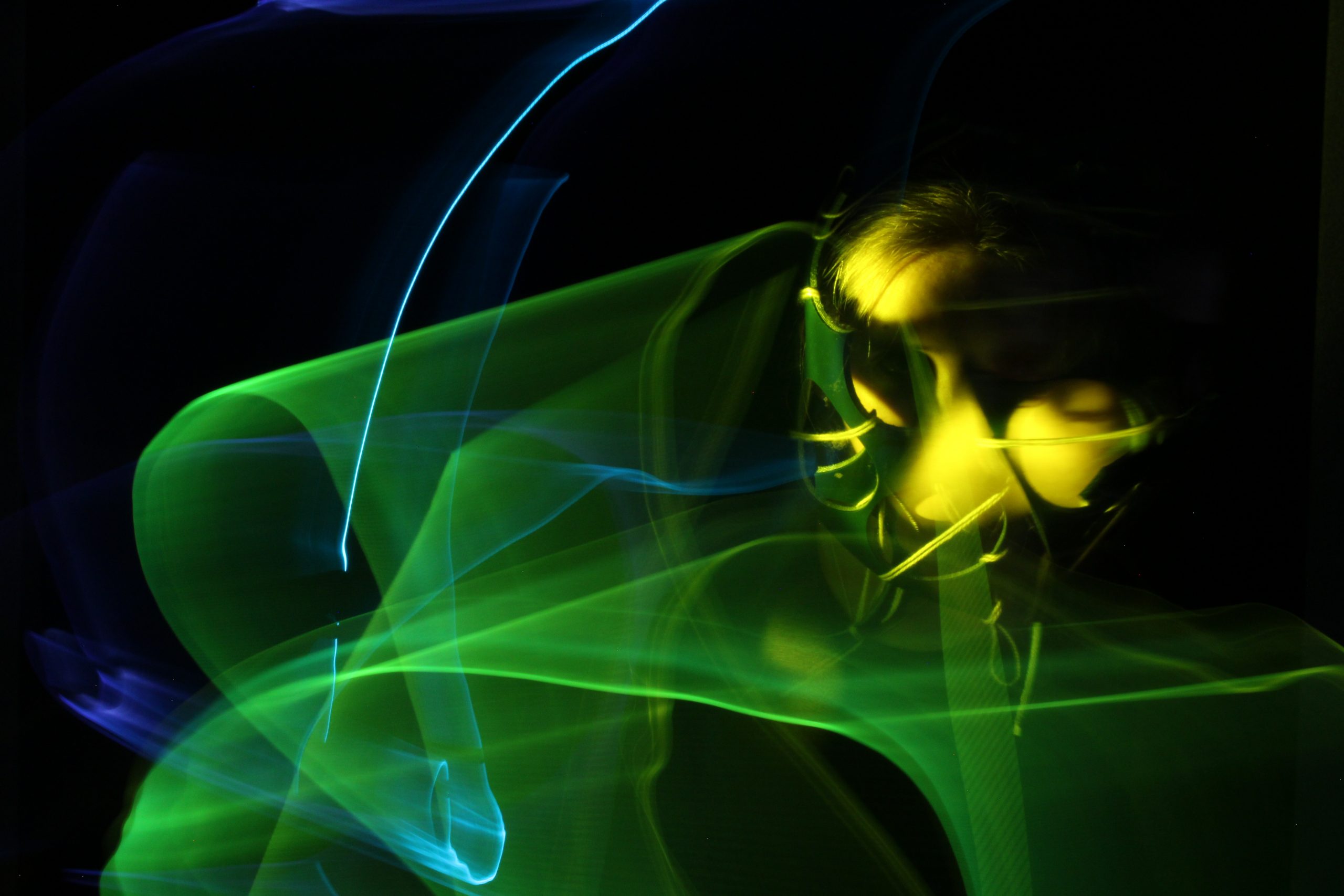
Isabella Feltham (11W) Light Photography
The first Unit of Year 11 Visual Art is entitled ‘Art as Lens’.
Students respond to the material world through a variety of viewpoints expressed in a wide range of experimental works connected with artists who are mentors to process and develop ideas. Light photography is a marvellous technique involving advanced camera skills. The basis of the experiment is a constructed mask which a model wears while the artist directs the shoot and the taking of photographs.
Bella has created an arresting image of colour and careful model placement. The rhythmic lines and contrasting planes of colour create a visual feast!

Emily Gardner (10E), Glazed Ceramics
This week’s Artwork of the Week is by Emily Gardner (10E).
Emily’s pair of forms, modelled in Year 9, skilfully employ negative space to create visual contrast and interest.
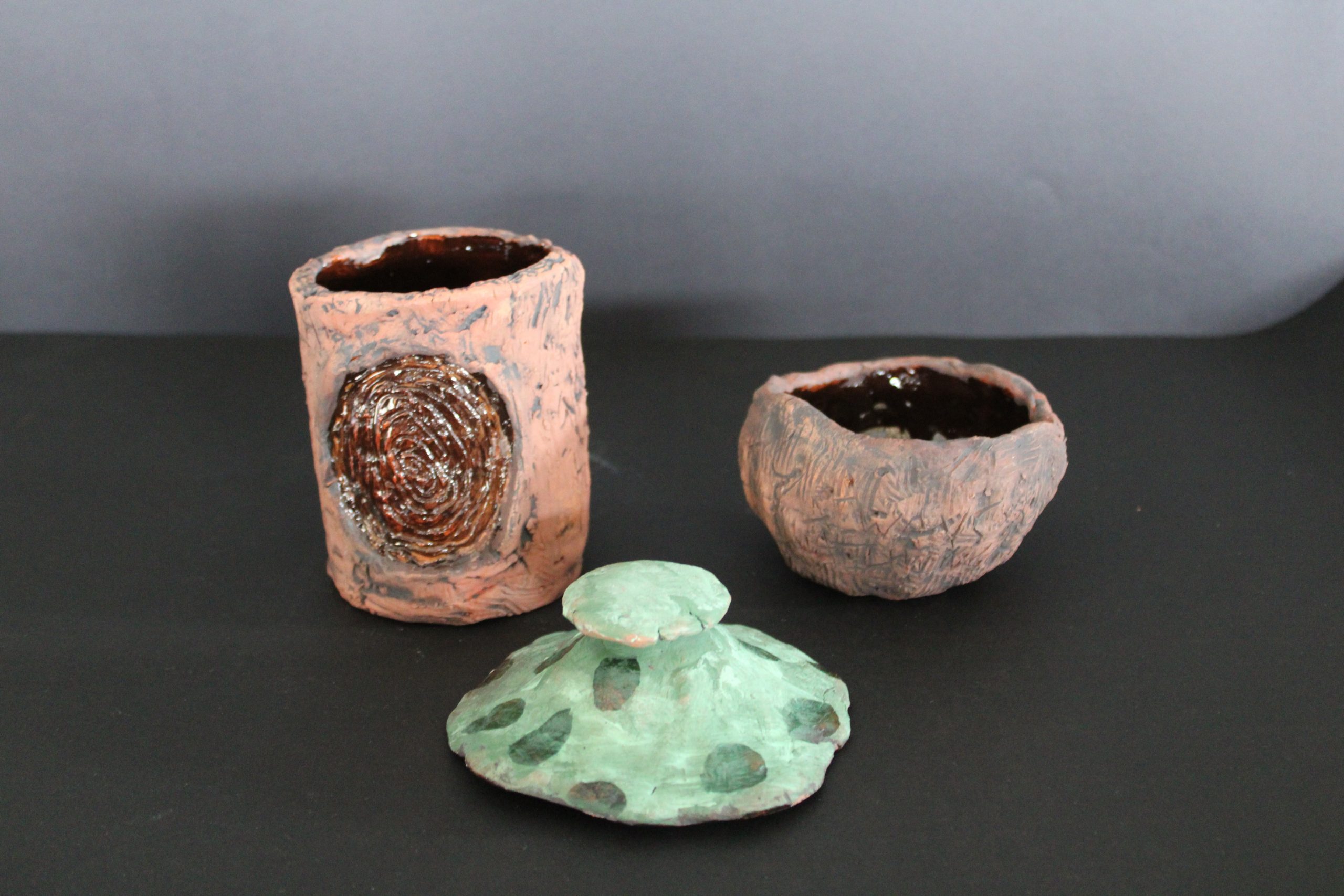
Lucy Bongers (10L), Glazed Ceramics
This week’s Artwork of the Week is by Lucy Bongers (10L).
Lucy’s robust use of clay in Year 9 led to a series of contrasting forms. The unglazed exteriors contrast successfully with the smoothly glazed interiors.
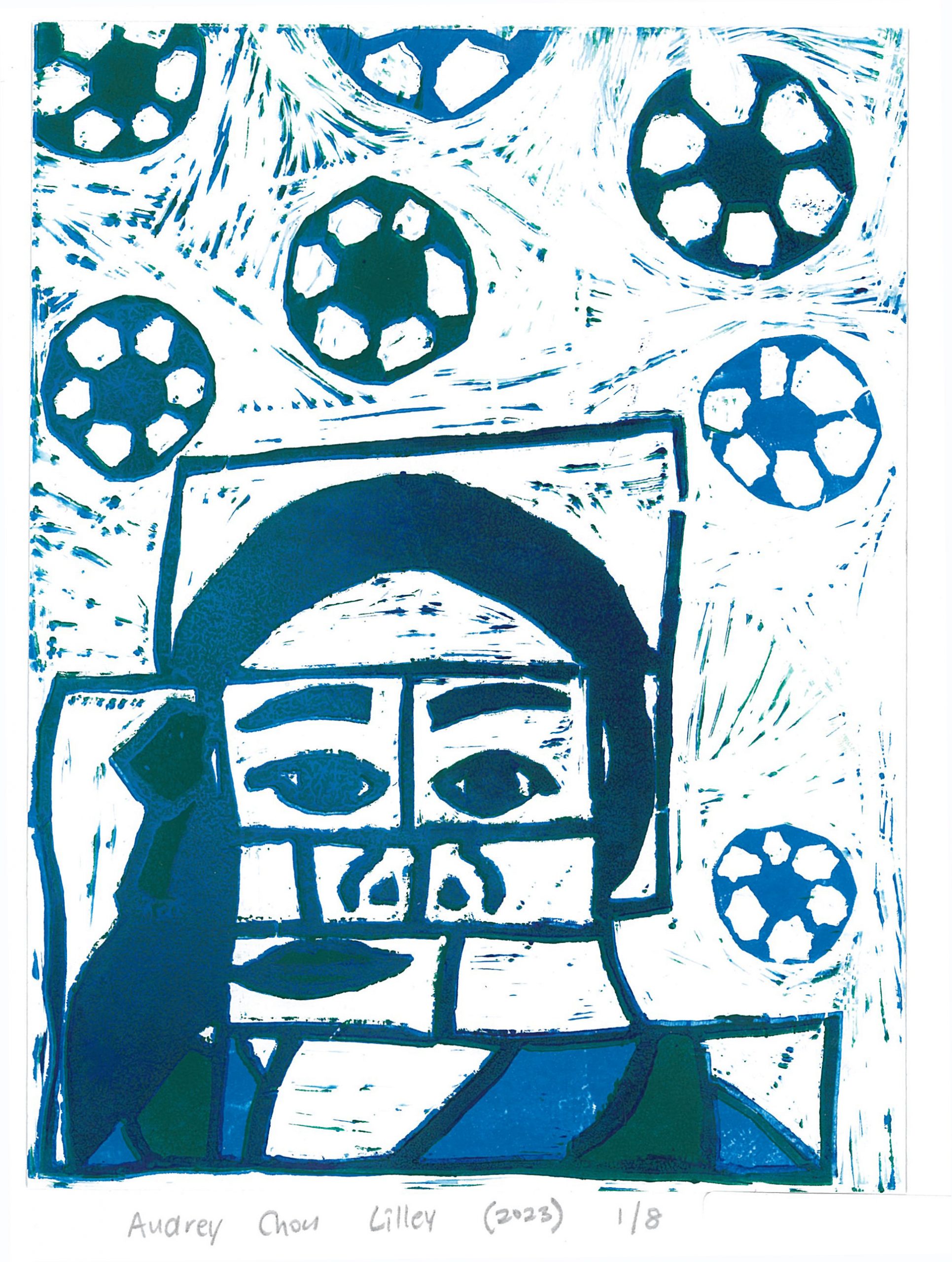
Audrey Chou (9L), Lino Printing
This week’s Artwork of the Week is by Audrey Chou (9L).
Audrey’s Year 8 reduction lino block print features a lively design full of shape contrast but skilfully employs a harmonious colour to draw us. The influence of Cubism is clearly seen in the work.
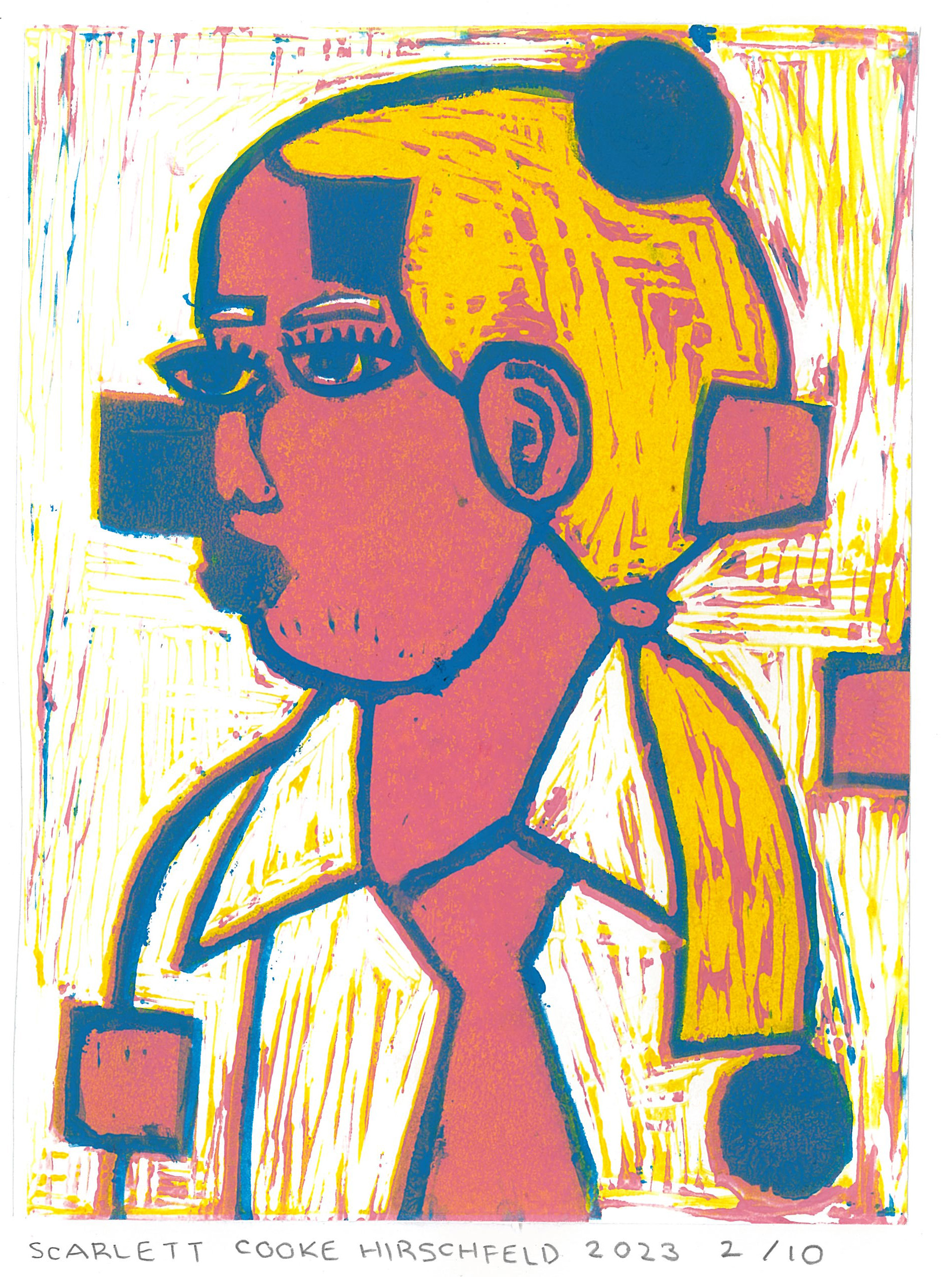
This week’s Artwork of the Week is by Scarlett Cooke (9H).
Scarlett’s Year 8 reduction lino block print gives us a new visual perspective through her cubist design of a Grammar girl.
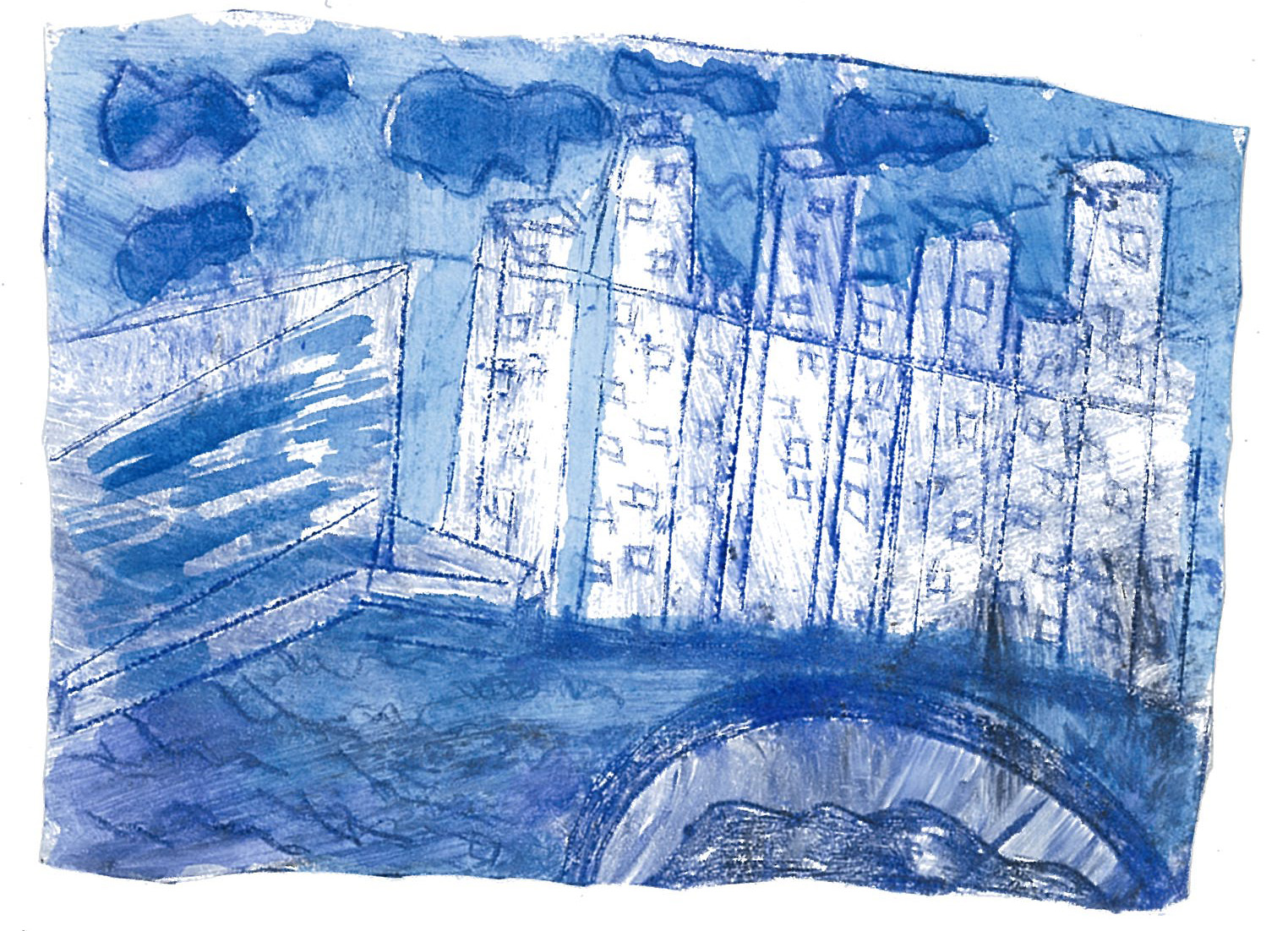
Siena Maher (10B), Printing, Ink on paper
This week’s Artwork of the Week is by Siena Maher (10B).
Siena executed this expressive monochromatic during her Year 9 Art studies capturing a moody view of the city.
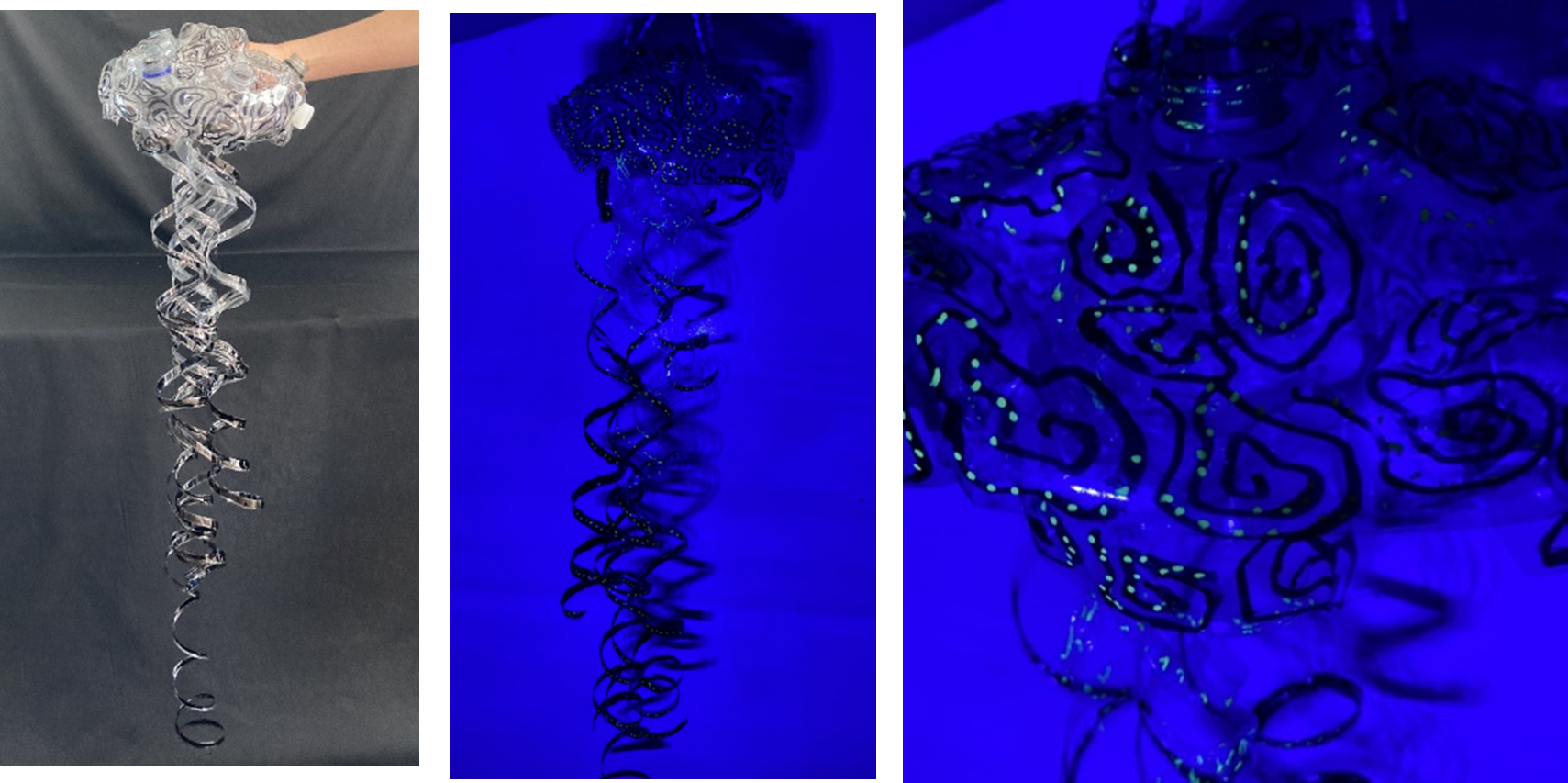
Alien Jellyfish, 2023, plastic bottles, installation
This week’s Artwork of the Week is by Evie Kolff van Oosterwijk (12M).
A1 is the first task of Year 12 Visual Art. Students experiment and research widely to develop a focus which underpins the rest of their Year 12 Art studies. This is one of Evie’s experiments. All students are allowed to follow their own inquiry path to produce an individualised outcome.
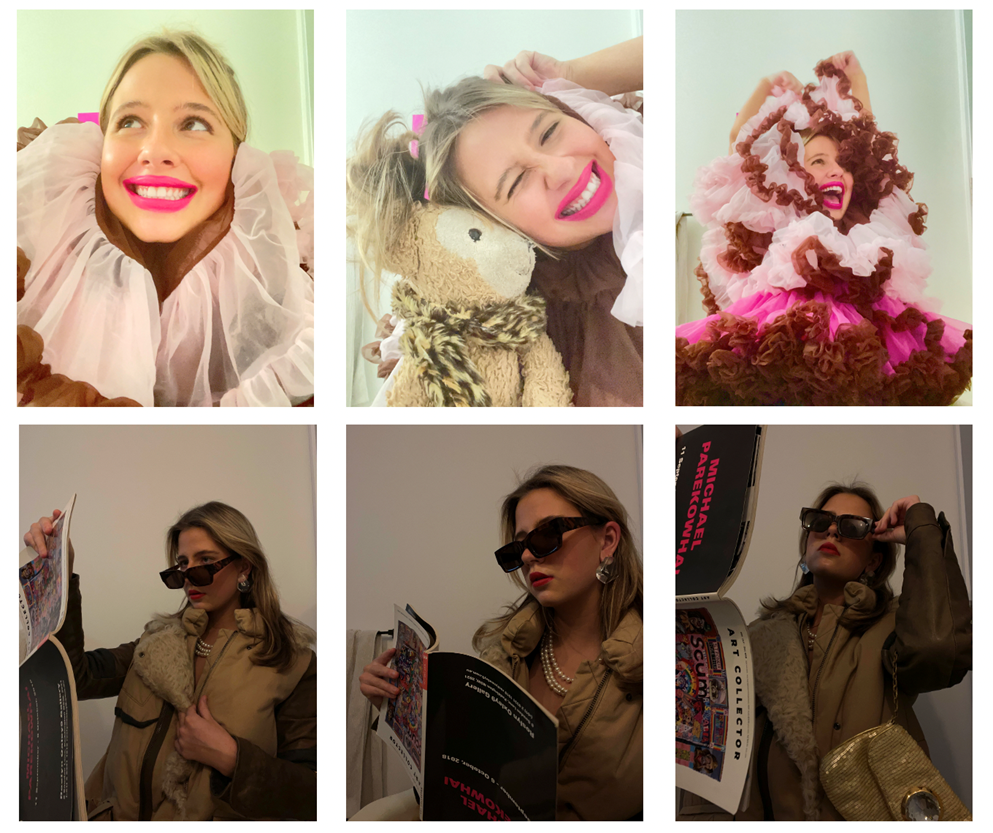
Futuristic Thinkers, Experiment THREE (Inspired by Cindy Sherman)
This week’s Artwork of the Week is by Peggy Noble (12M).
A1 is the first task of Year 12 Visual Art. Students experiment and research widely to develop a focus which underpins the rest of their Year 12 Art studies. This is one of Peggy’s experiments. All students are allowed to follow their own inquiry path to produce an individualised outcome.
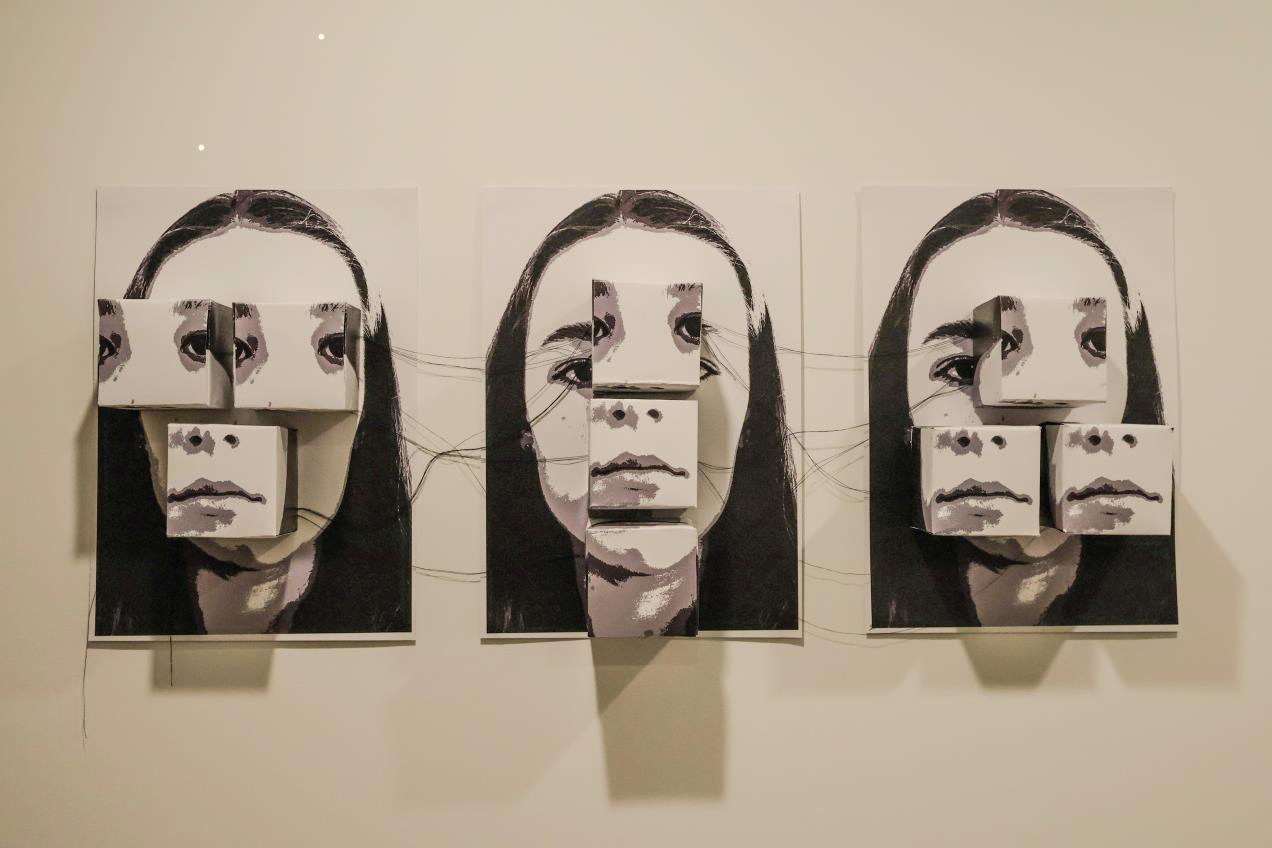
Many Faces, 2023, photography, thread, size (1.2 x 0.5 m)
This week’s Artwork of the Week is by Amelia Perry (12E).
A1 is the first task of Year 12 Visual Art. Students experiment and research widely to develop a focus which underpins the rest of their Year 12 Art studies. This is one of Amelia’s experiments. All students are allowed to follow their own inquiry path to produce an individualised outcome.

This week’s Artwork of the Week is by Poppy McGuire (10E).
Glazed Ceramics
Poppy’s skilful manipulation of clay has produced a delightful complementary pair of forms. Clever use of colour and repeat pattern creates an eye-catching and precious artwork.
2023
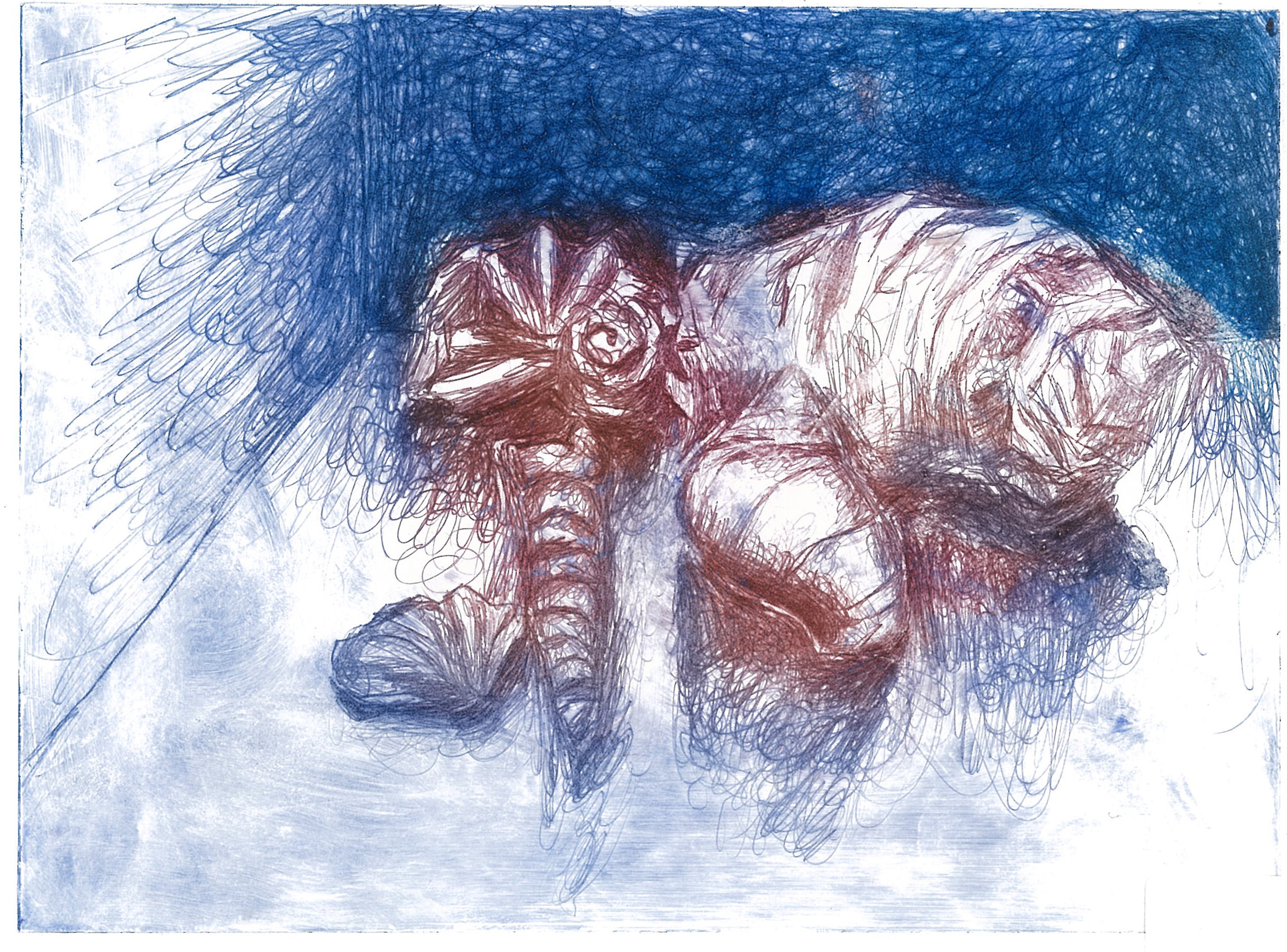
Scarlett Baker (9W)
This week’s Artwork of the Week is by Scarlett Baker (9W).
Through a series of teacher and student-directed drawing and printmaking activities, students developed, created and resolved an edition of drypoint etchings that demonstrated the concept ‘Interiors and Exteriors’ through the Inquiry Question, ‘how can tone communicate mood in drypoint etching?’
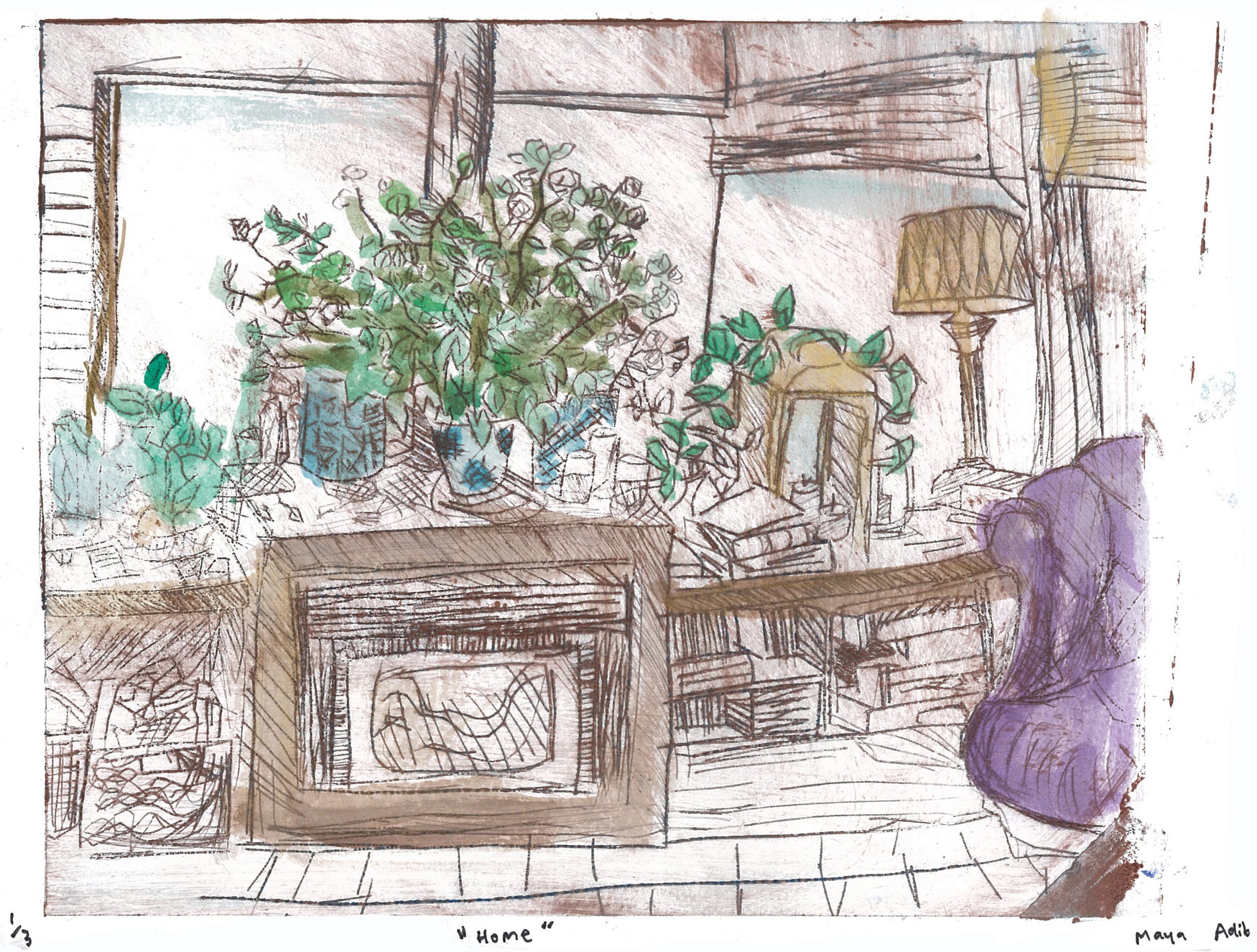
Maya Adib (9G)
This week’s Artwork of the Week is by Maya Adib (9G).
Through a series of teacher and student-directed drawing and printmaking activities, students developed, created and resolved an edition of drypoint etchings that demonstrated the concept ‘Interiors and Exteriors’ through the Inquiry Question, ‘how can tone communicate mood in drypoint etching?’
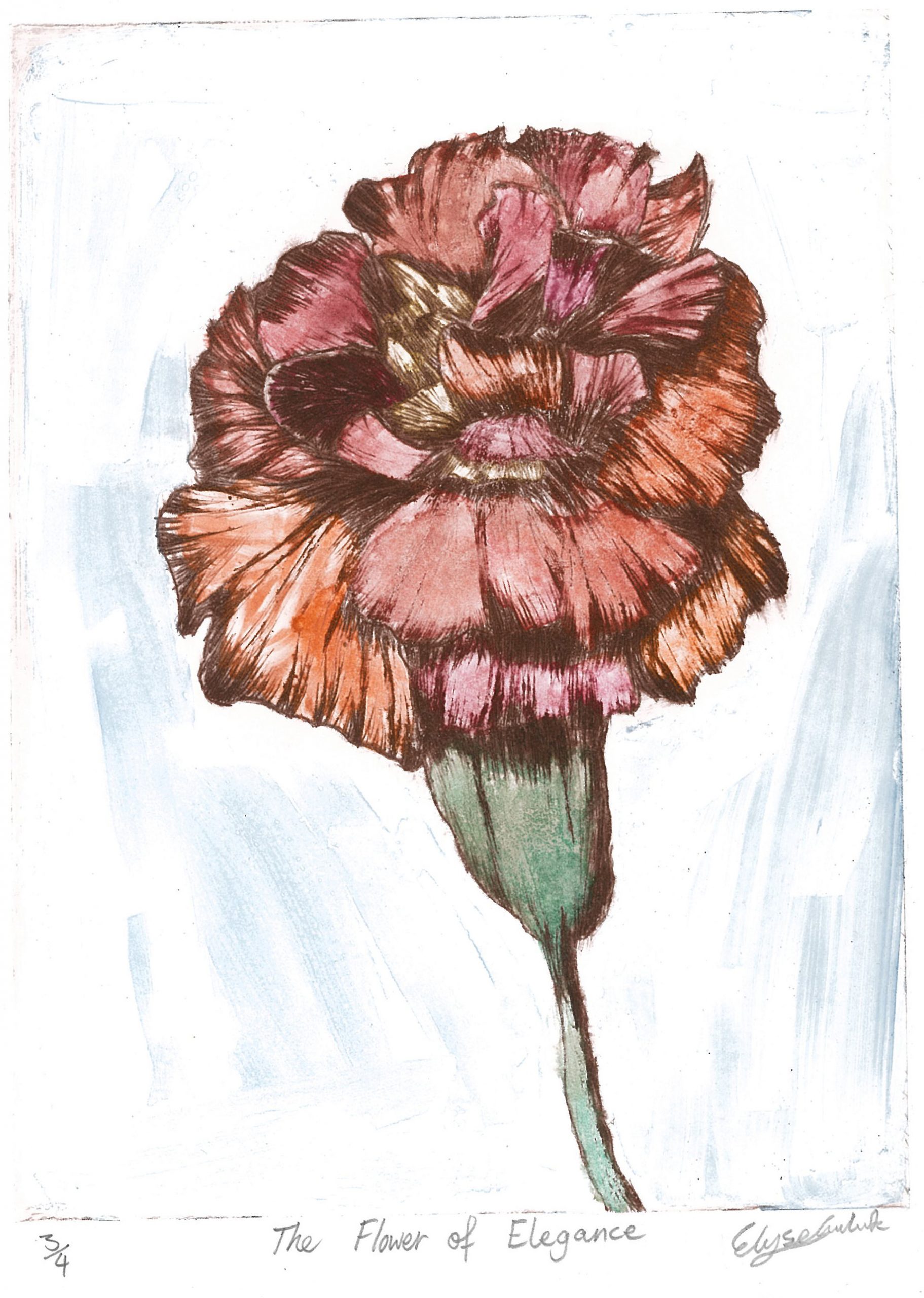
Elyse Gunluk (9O)
This week’s Artwork of the Week is by Elyse Gunluk (9O).
Through a series of teacher and student-directed drawing and printmaking activities, students developed, created and resolved an edition of drypoint etchings that demonstrated the concept ‘Interiors and exteriors’ through the Inquiry Question—’How can tone communicate mood in drypoint etching?’
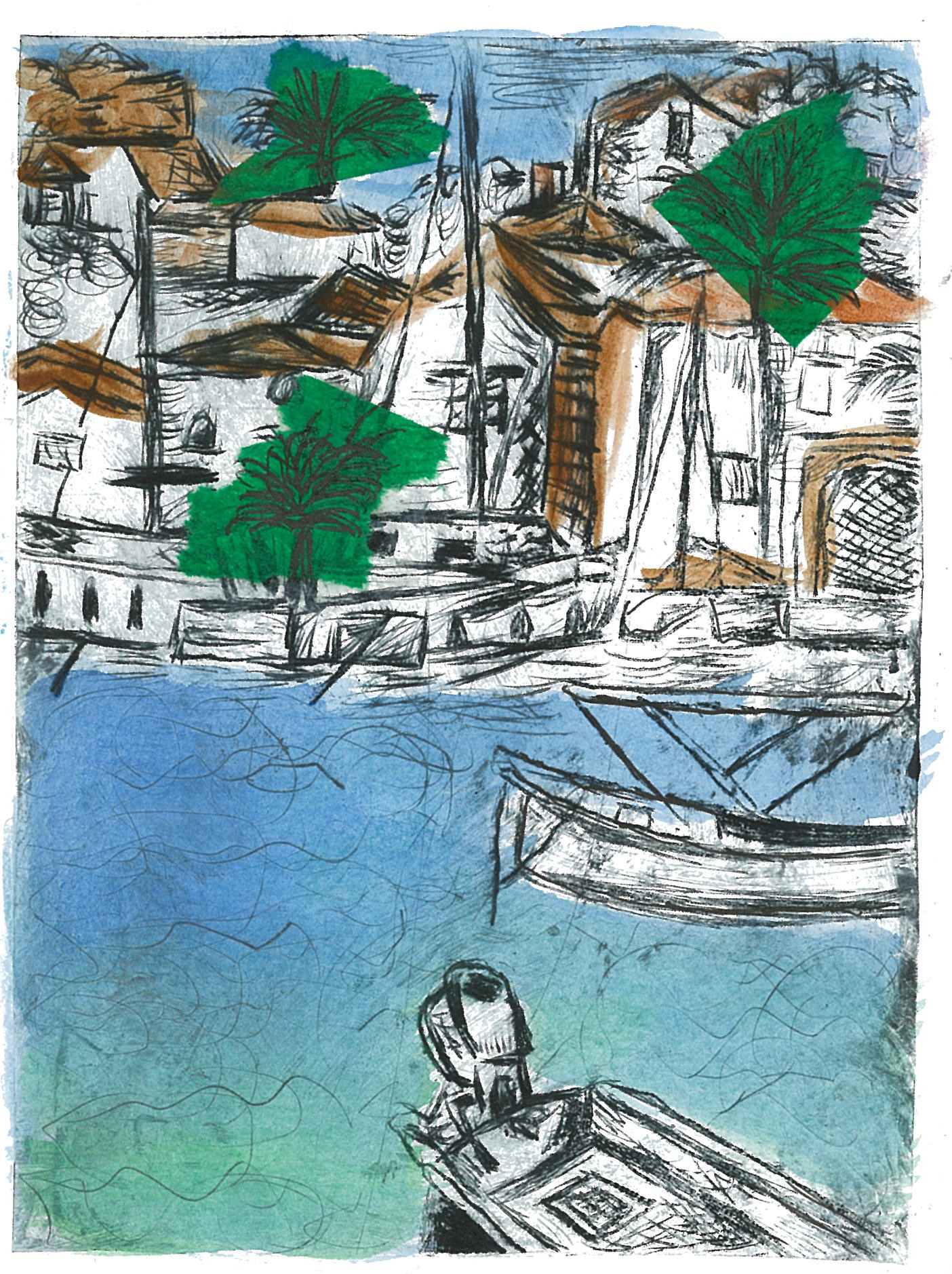
Heidi Stariha (9W)
This week’s Artwork of the Week is by Heidi Stariha (9W).
Through a series of teacher and student-directed drawing and printmaking activities, students developed, created and resolved an edition of drypoint etchings that demonstrated the concept ‘Interiors and exteriors’ through the Inquiry Question—’How can tone communicate mood in drypoint etching?’
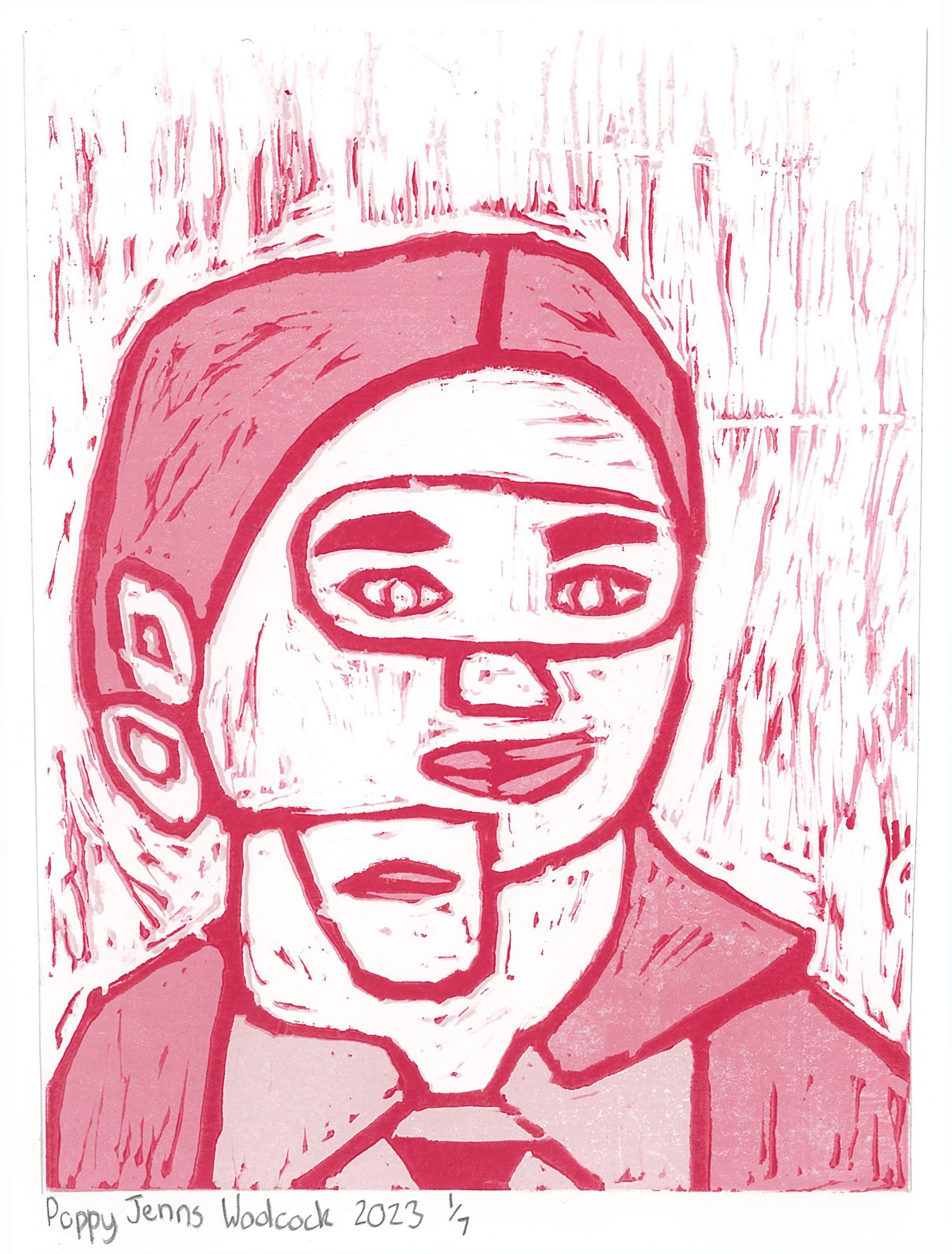
Poppy Jenns (8W)
This week’s Artwork of the Week is by Poppy Jenns (8W).
Students developed, created and resolved an edition of three reduction lino cut prints that demonstrate their personal expression, the concept Multiple Perspectives and answered the inquiry question, ‘How can colour communicate self-identity?’
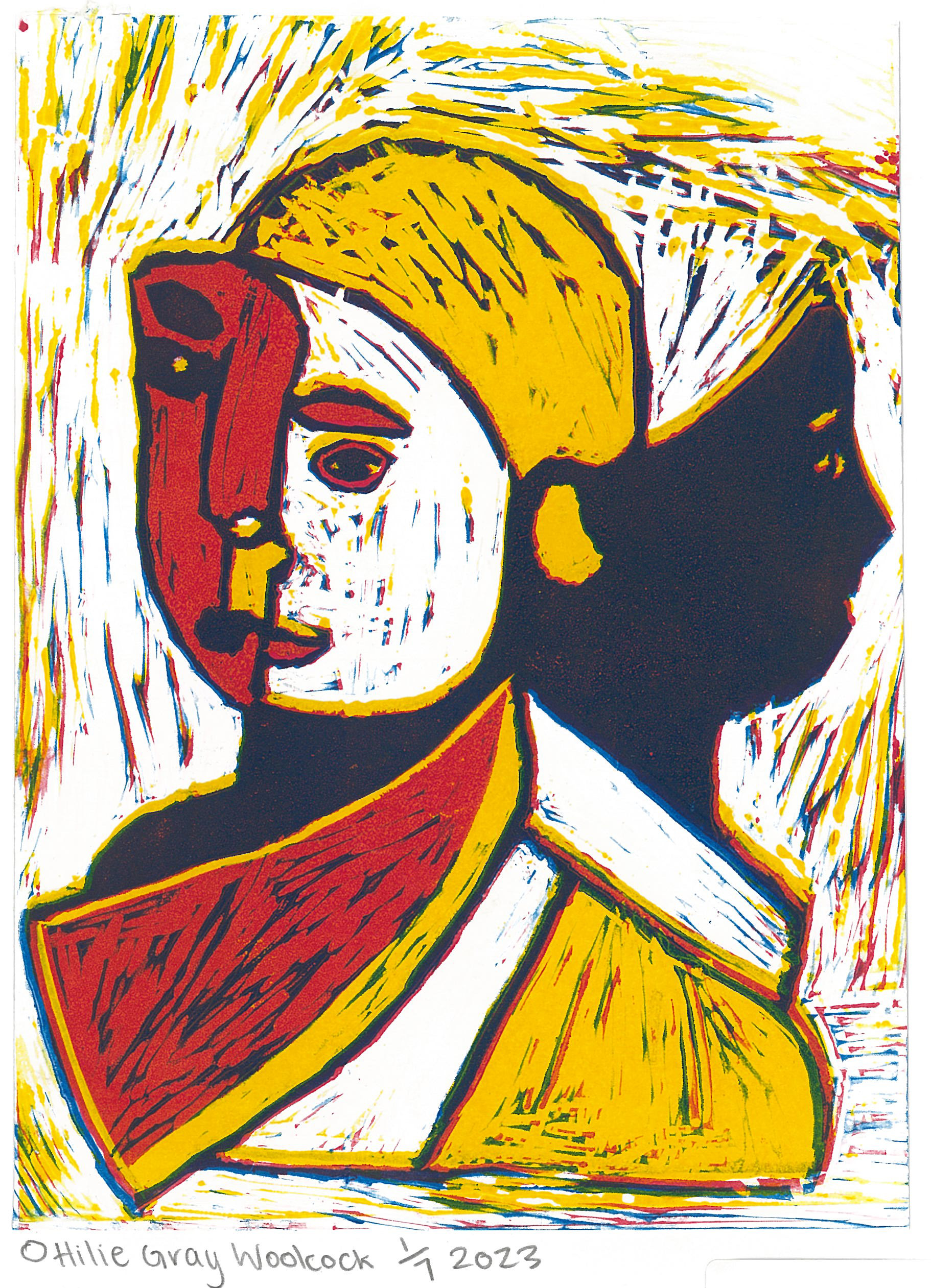
Ottilie Gray (8W)
This week’s Artwork of the Week is by Ottilie Gray (8W).
Students developed, created and resolved an edition of three reduction lino cut prints that demonstrate their personal expression, the concept Multiple Perspectives and answered the inquiry question, ‘How can colour communicate self-identity?’
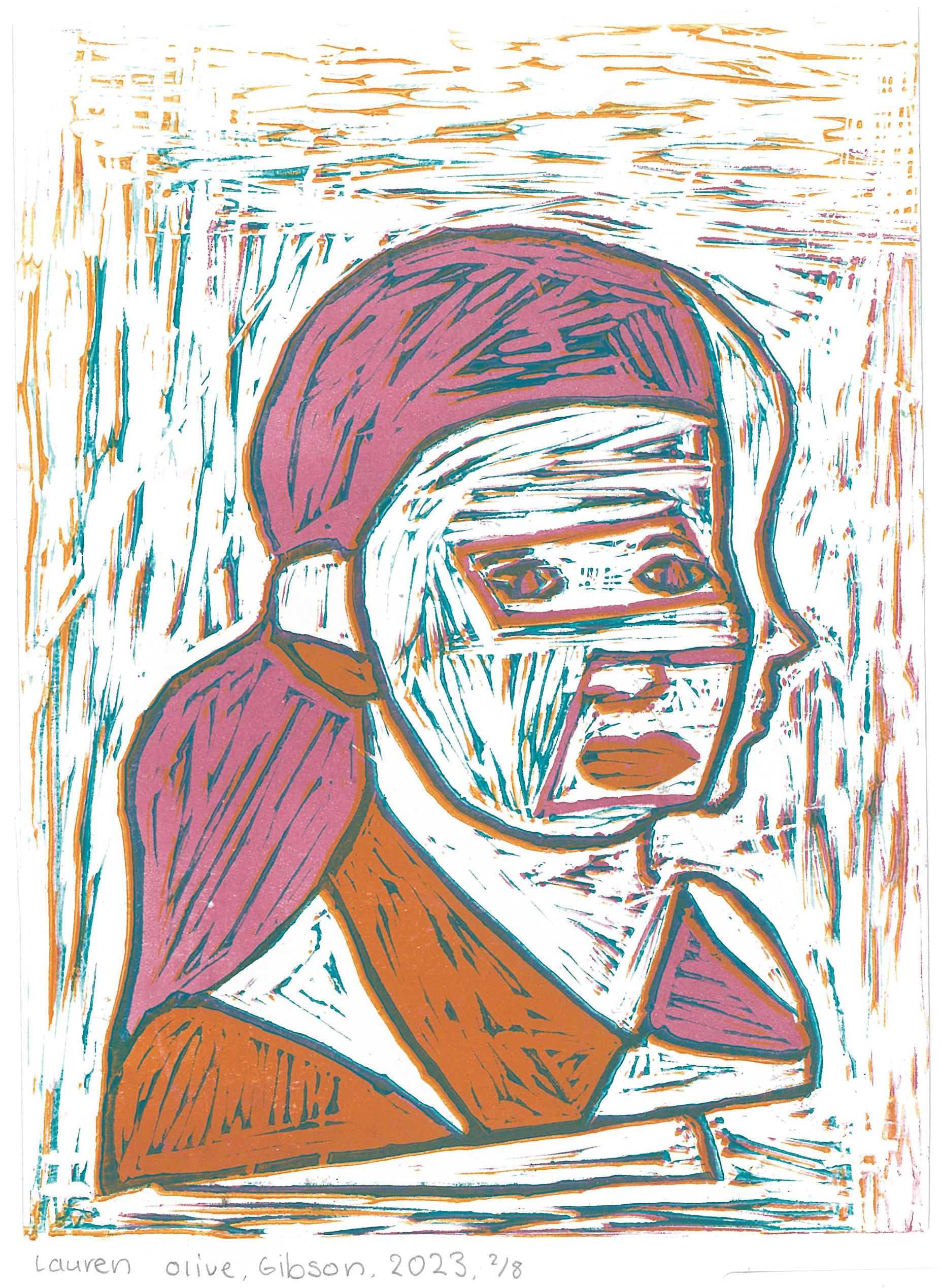
Lauren Olive (8G)
This week’s Artwork of the Week is by Lauren Olive (8G).
Students developed, created and resolved an edition of three reduction lino cut prints that demonstrate their personal expression, the concept Multiple Perspectives and answered the inquiry question, ‘How can colour communicate self-identity?’
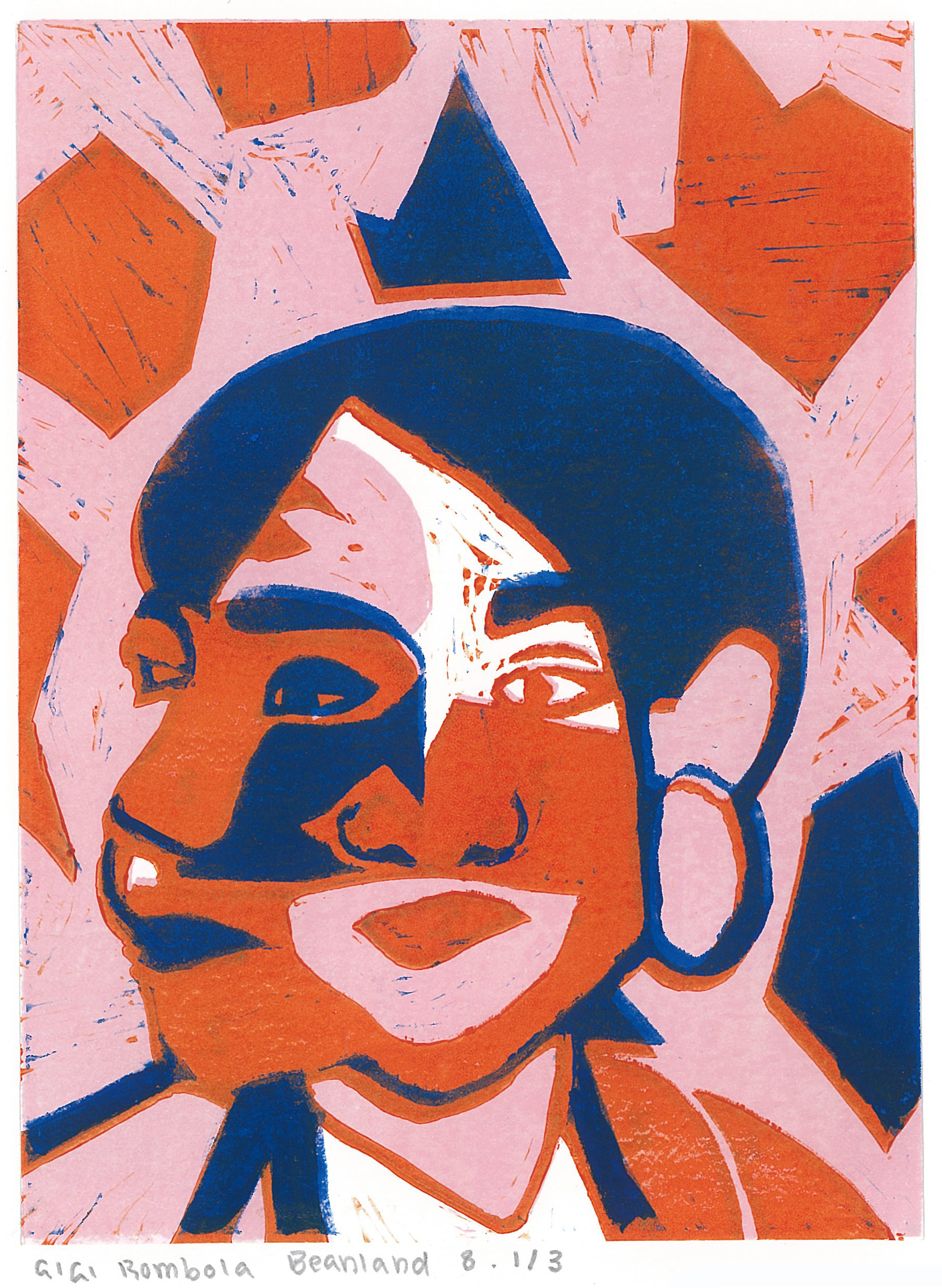
Gigi Rombola (8B)
This week’s Artwork of the Week is by Gigi Rombola (8B).
Students developed, created and resolved an edition of three reduction lino cut prints that demonstrate their personal expression, the concept Multiple Perspectives and answered the inquiry question, ‘How can colour communicate self-identity?’
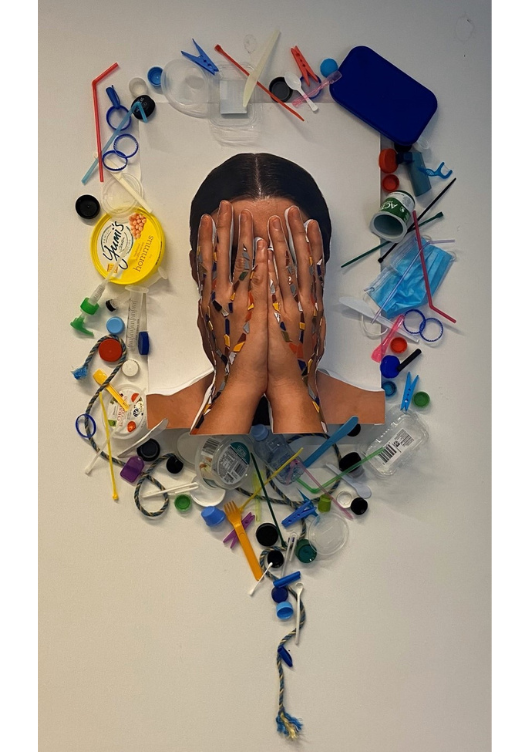
Synthetics Invasion, by Emma Spork (12W)
This week’s Artwork of the Week is Synthetics Invasion, by Emma Spork (12W).
‘My work was formed in response to the concept, “Art as Knowledge”. My focus, “beautiful decay”, was adapted into “environmental decay”, as I explored the severity of plastic pollution in our society.
My work was informed by the contemporary context of environmental destruction and plastic pollution, particularly through an article that detailed how microplastics were found in human blood. The knowledge from this article, as well as the works of Chris Jordan and his mosaic-like technique, and Helen Pynor’s use of the human body as a motif, inspired my use of the symbolism of plastics flowing through veins.
With the knowledge gained from experimentation with different aspects of environmental decay, my final work compels audiences to reflect on modern-day environmental destruction. The multitude of single-use, everyday plastics invites audiences to reflect on their personal contribution to environmental decay, while the plastic mosaic imagery provokes thought about the all-too-real consequences of pollution.’

Heading Home for the Holidays, by Marley Seipel-Hong (12L)
This week’s Artwork of the Week is Heading Home for the Holidays, by Marley Seipel-Hong (12L).
‘This work responds to the concept “Art as Knowledge” by prompting a reflection on personal heritage and cultural displacement. Heading Home for the Holidays develops the focus “The Never-Ending Holiday” by conceptualising a “holiday” from one’s culture, thus interrogating the relationship between self-understanding and acceptance. Knowledge gained from the practices of James Gulliver Hancock and Louise Bourgeois inspired the incorporation of clay, drawings and found objects. The various handmade elements and found components of the installation were informed by meditating on my personal context of a biracial upbringing. The incorporation of souvenirs and kitchen elements, and the monochromatic colour pallet, presents a blank slate designed to allow the viewer to project their own understandings of home onto the combination of found household items and handmade elements, to understand the multilayered nature of individual cultural identity.’
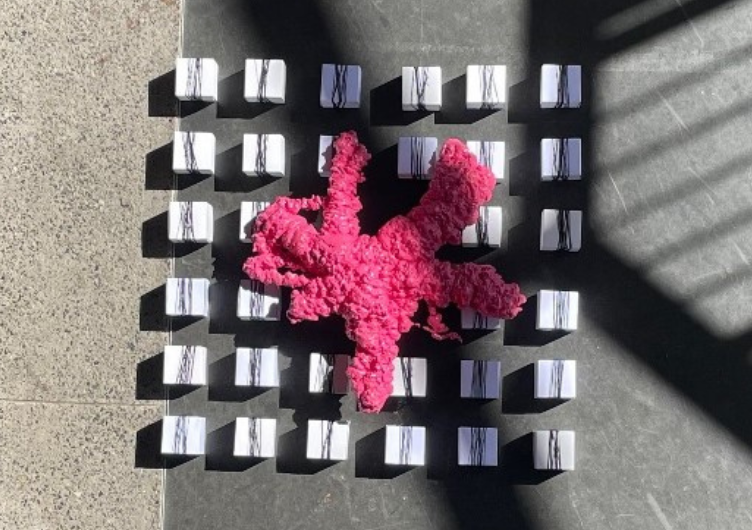
Break Free, by Luella Prenzler (12E)
This week’s Artwork of the Week is Break Free, by Luella Prenzler (12E).
‘Guided by the concept “Art as Knowledge”, my work generates an understanding of the contemporary contexts of mental health and the strain of society. Break Free develops the focus “trapped world” by proposing ideas of one feeling trapped and as if they are meant to be the same as others, but in fact they feel completely different—almost as if they’re “trapped”. Research was utilised through Gerwyn Davies’ mixed media works and Keilly Whittaker’s detailed painting. The contrast between the stark-white boxes wrapped with black thread, and the bright-colored expanding foam creates the symbol of “trapped”. The audience engages in thought about what the artwork means and how it relates to the focus, and they are able to engage with the artwork’s touch and look.’
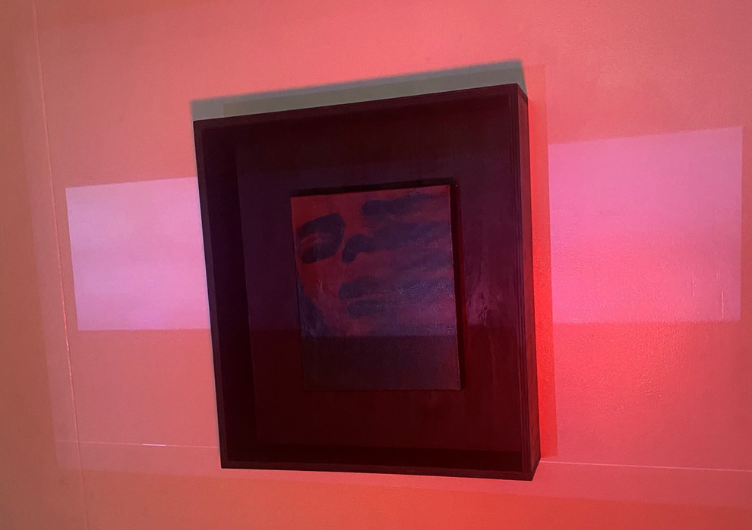
Mind Games, by Siena Knobloch (12G)
This week’s Artwork of the Week is Mind Games, by Siena Knobloch (12G).
‘Guided by the concept, “Art as Knowledge”, this work explores the contemporary context of rapid technological advancement and the subsequent manipulation of the human conscience that informs the personal context. The work Mind Games develops the theme “Manipulative Mind” by employing the use of dark, moody colour as well as bold red to evoke distress and is reminiscent of mentor artist, Andrew Cadima’s work. The image of a distressed and distorted face centered in a black box frames the work, specifically linking to my personal context, exploring the harrowing effects of technology on the mind. Use of light in Crystal Palace, by Ken and Julia Yonetani, prompted the exploration of technology in the contemporary context. Similarly, my use of light with the interactive glitching video projection engages audiences in the contemporary conversation of how dependence on technology manipulates and deteriorates the human mental condition.’

Purgatory, by Kate Redmond (12L)
This week’s Artwork of the Week is Purgatory, by Kate Redmond (12L).
‘I discussed the concept of “Art as Knowledge”, and shared my personal context of struggling to enter adulthood, through my artwork. I used impasto techniques, unrealistic colours, and powerful symbolism to convey these emotions. My inspiration came from artists such as Daniel Pêsta, Hironemous Bosch, Winston Chmienski, and Seungeya Park. By incorporating sculpture and repetition, I created distorted human forms that represented the restriction and fear I feel about entering the next stage of life. I also used hands as a symbol of restriction to imbue my work in another layer of meaning. The audience is invited to experience the layers and depth of the artwork and reflect on the symbolism of the hands and their malicious presentation, prompting them to feel the fear and limitations the central character experiences.’

Build-a-bear, by Esther McDade (12H)
This week’s Artwork of the Week is Build-a-Bear, by Esther McDade (12H).
‘Using the concept “Art as Knowledge”, this work explores the personal context and experience between childhood and adulthood. The focus, ‘delusional reality’, was developed into the artwork Build-a-Bear, which reveals the universally personal transition. Using the technique of plaster wrapping, and research from Kelley’s use of discarded children’s toys, a symbol of innocence and childhood, the teddy-bear was created. The juxtaposition between the colourful and fluffy pom poms, and intimidatingly dark inside, emulates the different stages of life. The title itself encourages audiences to reflect on their individual experiences, as some are privileged enough to build their own bear, whilst others cannot. For some people the transition is smooth, whilst for some it can sudden, jarring, or traumatic. The mirror invites the audience to peer closer, allowing them to see themselves and the hidden “adulthood” that sits within the bear. This prompts the viewers to question: how has your bear been built?’

Little Golden Memories, by Melody Khoo (12W)
This week’s Artwork of the Week is Little Golden Memories, by Melody Khoo (12W).
‘Through the concept “Art as Knowledge”, I investigated the focus “Memories that last a lifetime”, and developed an understanding of the gradual fading of memories over time. My focus was developed because I wanted to gain a better understanding of how people interact with memories once time becomes a limiting factor. I wanted this to be translated into my work through the use of clear paper, to give the illusion that the memory is still there, but not clear. Behind the paper is a page from a children’s book, with family photos printed on it. This knowledge of memories was translated into my personal context, as my own family photos and memories were used.’

Stories of Shadows, by Eliza Horsley (12G)
This week’s Artwork of the Week is Stories of Shadows, by Eliza Horsley (12G).
‘My work responds to the unit concept, “Art as Knowledge”, as I share my understanding of my contemporary context: today’s promotion of materialistic values causes our understanding of happiness to be obscured. This concept is reflected in my piece, Stories of Shadows, because I share what goes unaddressed within our everyday lives. I exposed how consumer culture impacts our understanding of what holds value or meaning. Like artist Joseph Egan, I used anamorphic typography to encourage audience engagement, as they literally find the letters’ meanings by changing their viewpoint to decode the work. The symbol of consumer culture is represented in the varying scale receipts. As they fall onto the floor—like they are reaching out to the audience—a sense of discomfort is evoked as the audience is reminded of their consumerist habits.’
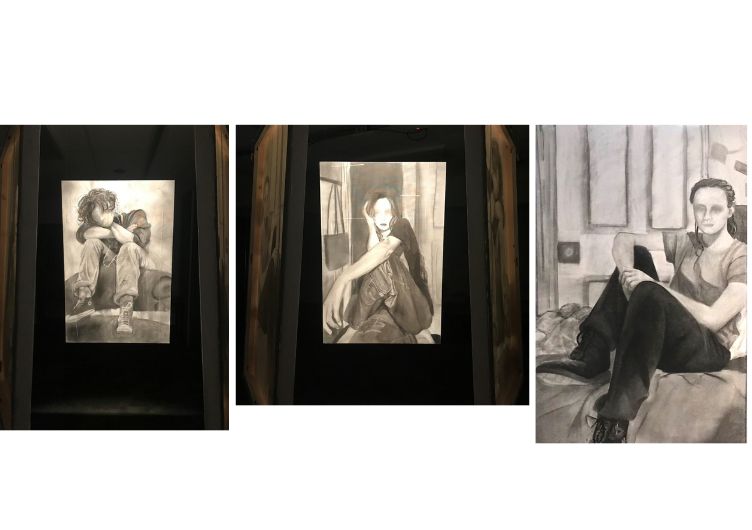
Hypophrenia, by Zoe Harding-Smith (12M)
This week’s Artwork of the Week is Hypophrenia, by Zoe Harding-Smith (12M).
‘Inspired by the concept “Art as Knowledge”, my work creates a link to the contemporary context of memories, both past and present. Hypophrenia was developed from my focus, “memories as art” by recreating images of past friendships. I gathered inspiration from Rineke Dijkstra’s photography skills, and Vija Celmins’ soft night sky, but was heavily influenced by Adrian Piper’s absence of colour, and contrast between harsh black and soft scratchy grey areas. From their influence I chose to express my personal context by creating three charcoal drawings. Depicting three past friends of mine, their faces and background are blurred, which represents my deteriorating memory of them. The interactive display and lighting allows the audience to view the images from both sides, and to ponder the absence of identity in the figures and how memory can be distorted.’
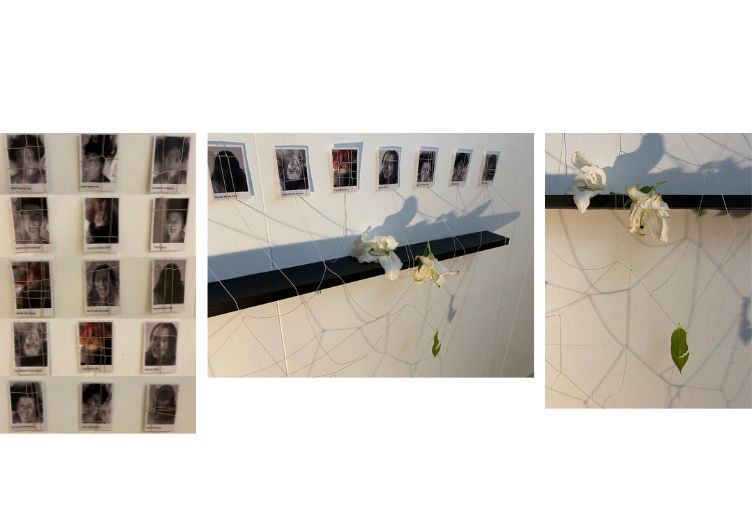
Fragile Femininity, by Melissa Bucknill (12W)
This week’s Artwork of the Week is Fragile Femininity, by Melissa Bucknill (12W).
‘Fragile Femininity came from my personal context of an interest in the female experience, and contemporary context of being a teenage girl in the 21st century. This work responds to the unit concept “Art as Knowledge“ through the investigation of personal growth and transformation which developed my focus “Precarious Life Progression”. I developed the meaning of my work by furthering my focus into the Precarious Life Progression of women specifically. I successfully draw on Man Ray and Glen Skien’s works which use photos, colour, and text to create effective artworks. The string-wrapped polaroids effectively symbolises entrapment of women caused by the comments of others, and the Lily flowers successfully symbolise destruction of purity that comes with this. The audience is invited to walk along the work, where they can read the words on the polaroids and decode it as a representation of harmful things said to women throughout their lives.’
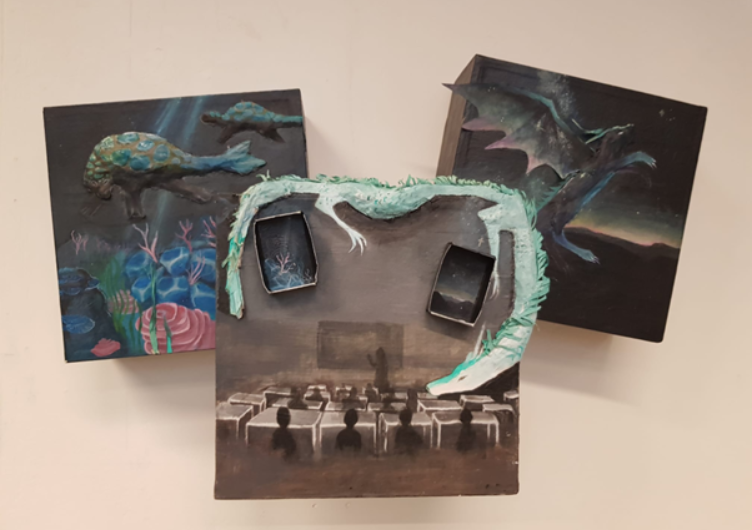
Reverie, by Shreeya Patel (12M)
This week’s Artwork of the Week is Reverie, by Shreeya Patel (12M).
‘The concept “Art as Knowledge” guided my exploration of my focus, “alternate reality”, by reflecting my personal context of getting lost in daydreams during class. Reverie develops this focus by illustrating a different reality where dragons live within my imagination, and come to life during class. Through the juxtaposition of reality and fantasy worlds, the audience is positioned to recall their own experiences with imagination and stories from childhood.’
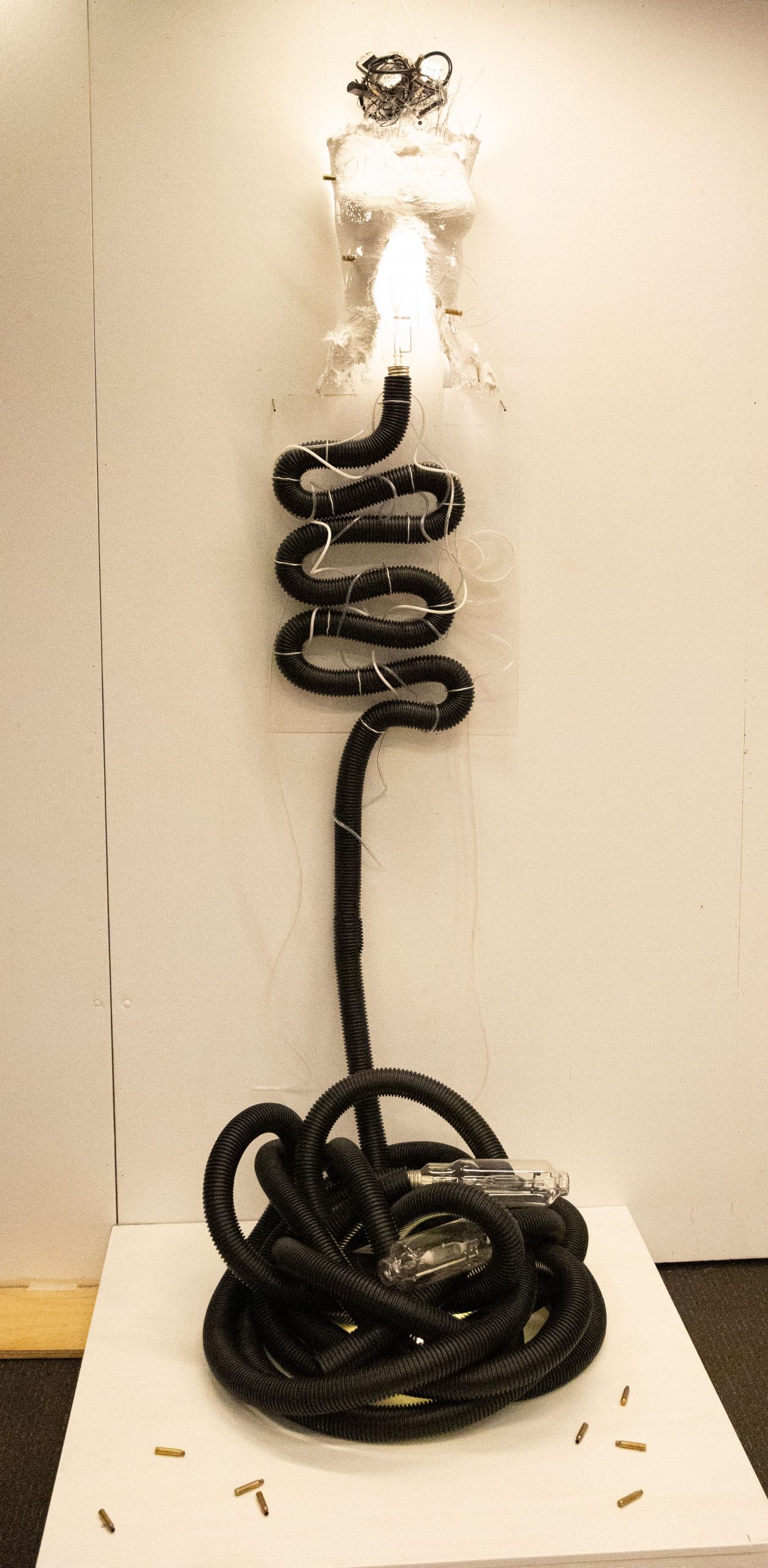
Machine Gun, by Zoe Paton (12R)
This week’s Artwork of the Week is Machine Gun, by Zoe Paton (12R).
‘Directed by the concept “Art as Knowledge”, my work explores the contemporary context of social media and its negative effects on people. Machine Gun develops the focus “Connecting the Unconnected”, by portraying connections between mind and body. The dull, monochromatic colour scheme and extensive use of symbols criticises social media’s negative portrayal of body image and the destruction this has on the mind and body. Audiences are encouraged to engage in a personal reflection of how social media affects their own mind, and realise the connection between how body image is presented on social media, and their own mind and body.’

Wake Up, by Elise Ridoutt (12E)
This week’s Artwork of the Week is Wake Up, by Elise Ridoutt (12E).
‘”Art as Knowledge” encompasses the individual interpretation of knowledge displayed within artworks, that can be transformed within different environments for different people. The exploration of my focus, “conscious reality”, manipulates household objects in unusual ways and and investigates the co-existing versions of reality that intertwine. Similar to artist Tracey Emin, my work explores Personal and Formal Contexts. Emin explores heightened human emotions and deconstructs the “perfect life” idyll, which I have mimicked in my portrayal of a perturbing bedroom scene with contrasting elements of familiarity and impossibility.
‘My work is successful as the repetitive worm motif invites an existential upheaval that draws meaning referring to the never-ending battle between conscious and unconscious reality. Audiences are invited to reflect upon their own grip on reality by the impossible nature of the everyday objects. They are forced to confront themselves: How much of my lived reality is a construction?’

The Reality, by Alice Zhu (12G)
The Reality, by Alice Zhu (12G)
‘Through the concept, “Art as Knowledge”, I explored the focus “perceptions” by investigating the kinds of perceptions that exist within my world. Informed by my personal context, I explored the perception of me versus my personal experience, through juxtaposing the symbols of my hands gripping the bar with the series of miniature figures of myself. This work reveals the tension created between two groups that exist within my cultural context: school and gymnastics.
Mentor artist Mr Michael Moccia influenced my decision to use the late slips from when I arrive late and leave early from school. The large proportions of the work accentuate the scope of the concept, drawing viewers to the large hands covered with guards, centred in the work. The miniature figures of myself flipping across the bar represent my repetitive routine of gym, school, gym. The varying colours represent the exuberant highs, and frequent lows in my life.’

Poppy McGuire (9E)
Year 9 Art students responded to the concept, Interiors and Exteriors, through the inquiry question; ‘How can tone communicate mood in dry point etching?’
Poppy McGuire (9E) has successfully used perspective to capture the form of our magical Science Learning Center.
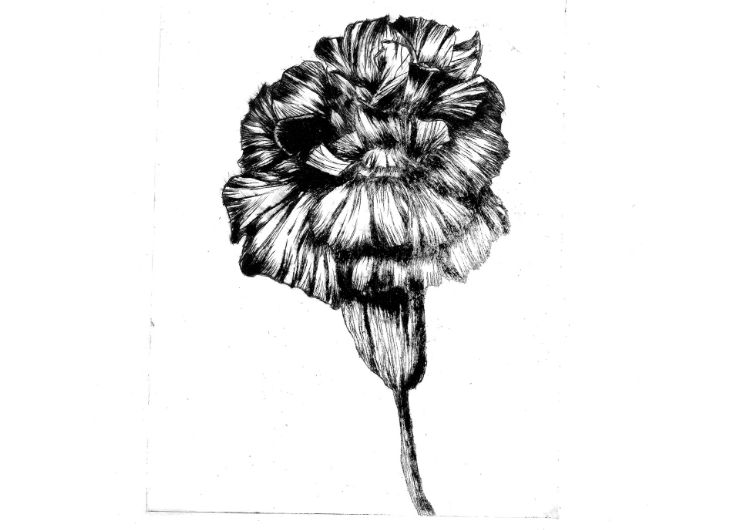
Year 9 Art students responded to the concept, Interiors and Exteriors, through the inquiry question; ‘How can tone communicate mood in dry point etching?’
Elyse Gunluk’s (9E) skillful drawing of a flower has translated into a highly detailed and very well printed image.

Year 9 Art students responded to the concept, Interiors and Exteriors, through the inquiry question; ‘How can tone communicate mood in dry point etching?’
Megan Baek’s (9E) clever composition juxtaposes a variety of perspectives to create this arresting image.
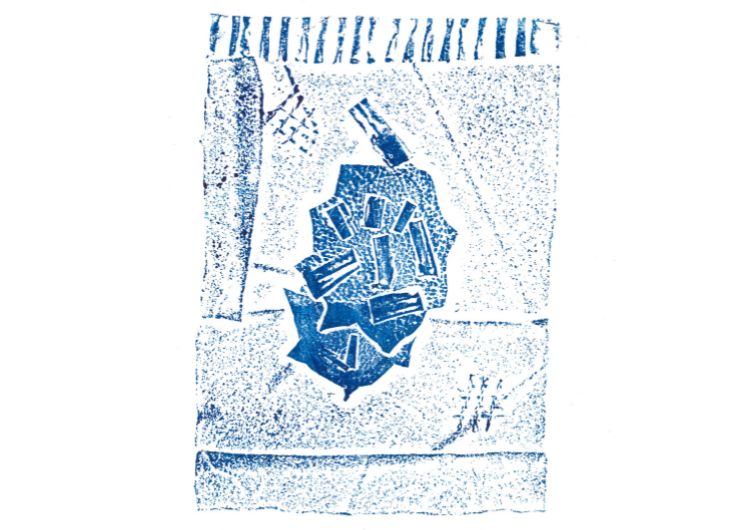
Chloe Hosking’s (7G) exceptionally well-printed collagraph draws the viewer’s eye to examine the abstracted seed form.
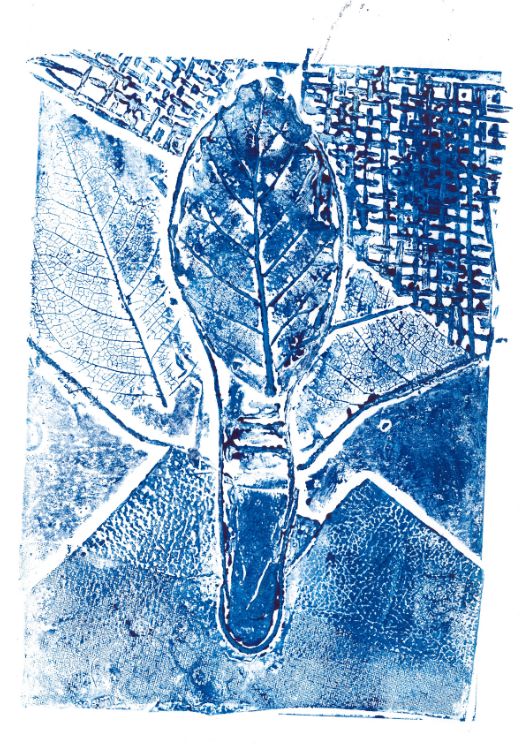
Vera Blumhardt’s (7G) combination of natural and artificial textures has created a clear and striking print.

Our last Artwork of the Week for Term 1 again showcases one of our beautiful Still Life Drawings from 2022. Orli Wachtel’s (9B) carefully balanced composition creates a satisfying juxtaposition of organic and manufactured objects to portray the notion of ‘momento mori’.
We hope you have enjoyed our weekly exhibition of student works.
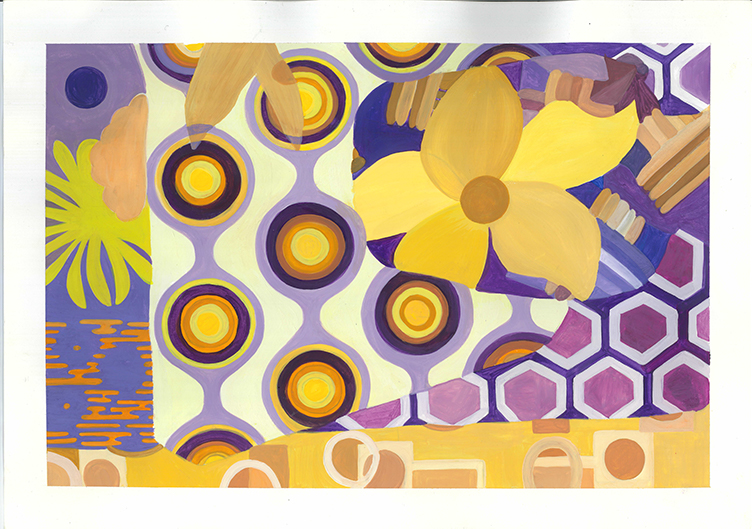
Erica Shin’s (8W) dramatic use of complementary colours creates an arresting image made using gouache on paper.
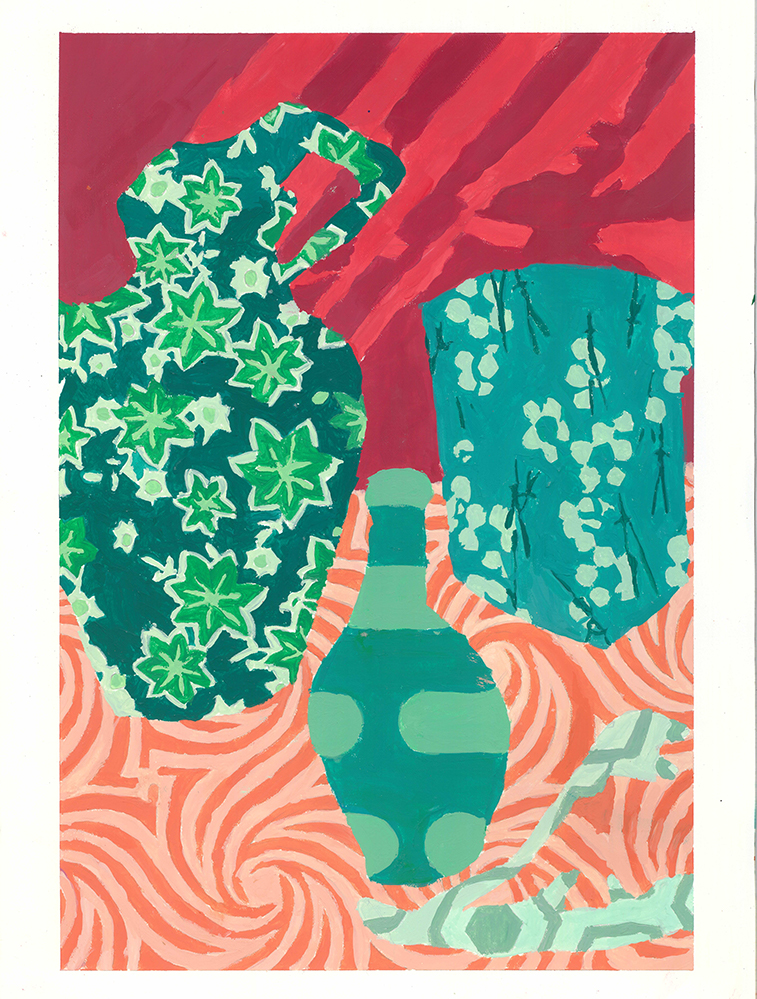
Claire Ross’s (9E) use of strong colour contrast, together with abstracted form, has created a vibrant contemporary painting.
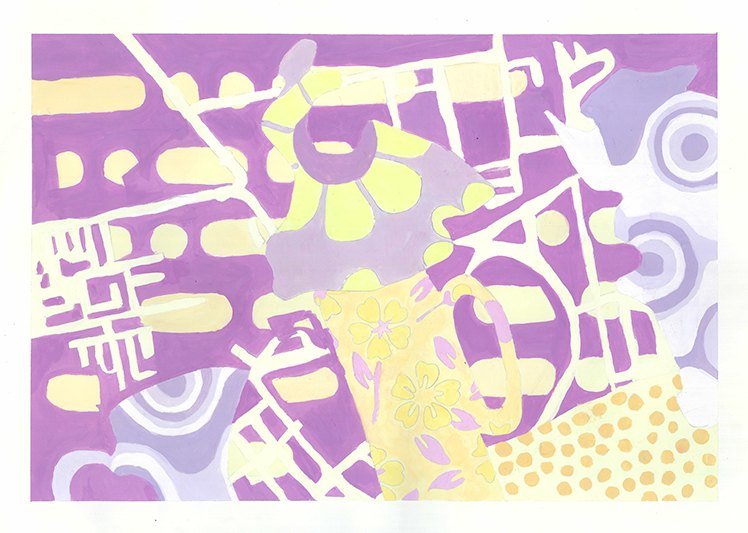
Using a soft palette of complementary colours, Sophia Collins (9G), has created a delicate painting.
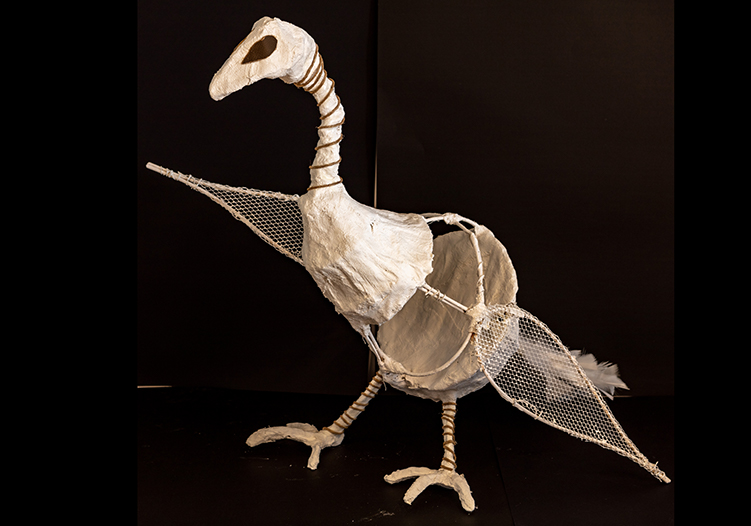
Sienna Santoro’s (8W) contrasting use of heavy plaster and fine wire creates a feeling of flight as she responds to the concept ‘Animalgams’.
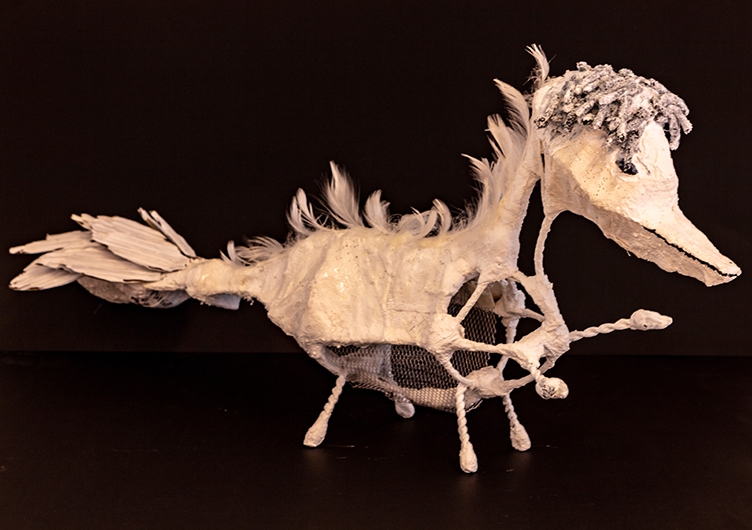
Millie Bender’s (9H) use of space has created a delicate floating work of art as she responds to the concept ‘Animalgams’.
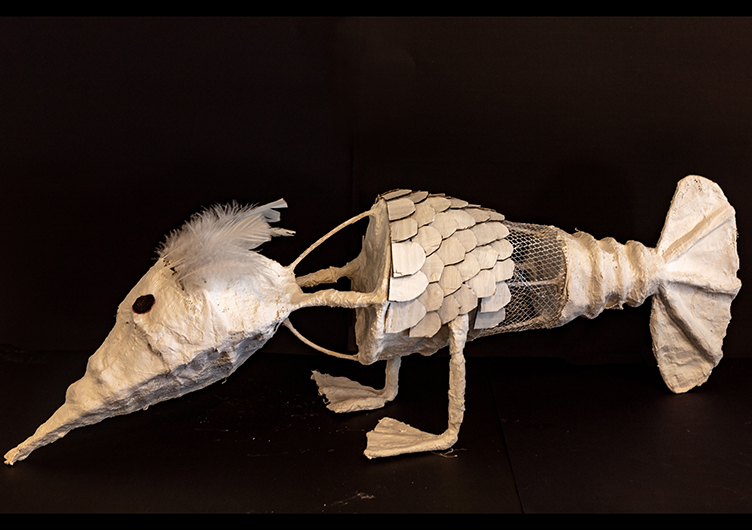
Emma Bond (9L) has demonstrated clever use of negative space to create an evocative form, responding to the inquiry ‘Nature and Fable’.
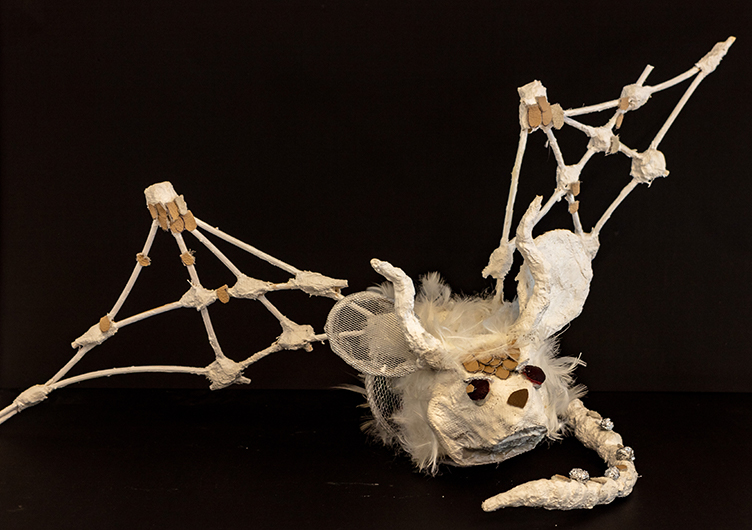
Chelsea Yan (9M) has crafted a fantastic hybrid animal plaster/mixed media sculpture as part of the concept, ‘Animalgams’.
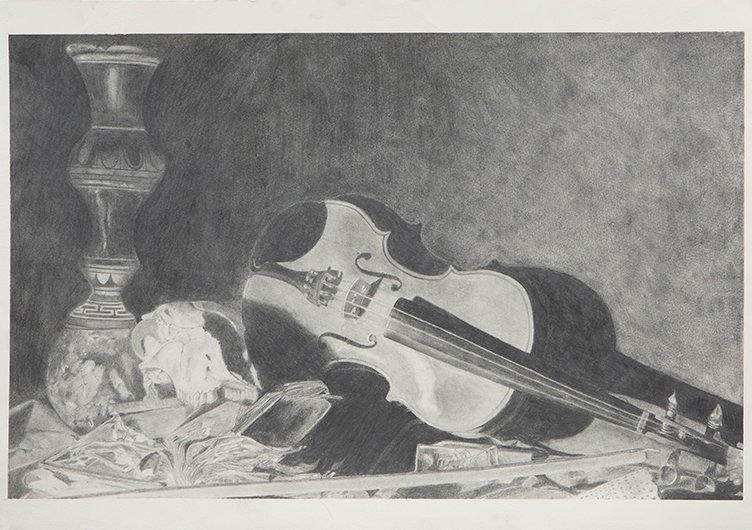
Mia Xiao’s (9H) ‘Still Life’ drawing captures a moment in time—revealing the nature of our existence—the definition of ‘memento mori’.
2022
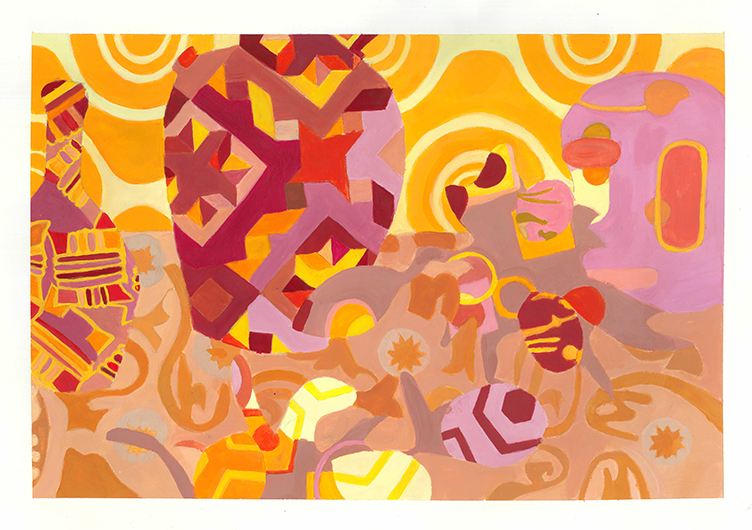
Mona Lin’s (8H) playful sense of pattern and colour has created a varied and vibrant work as part of the ‘Still Life’ unit.
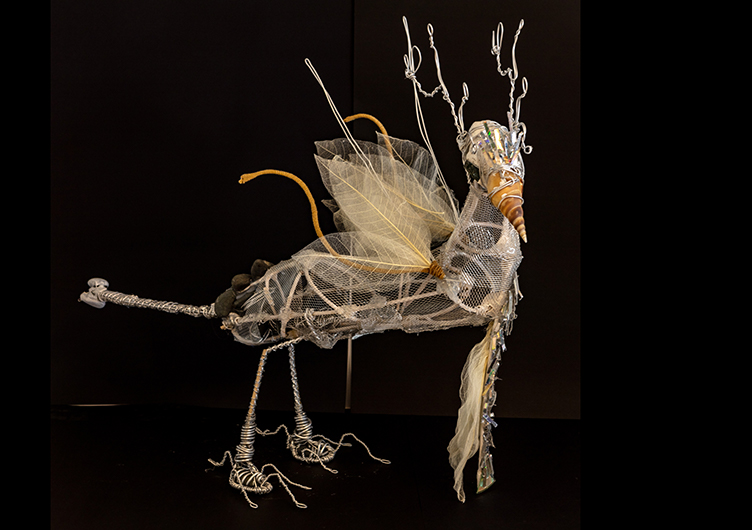
Lucy Dobinson’s (8H) clever and intentional choice of media creates a delicate sculpture as part of the concept, ‘Animalgams’.
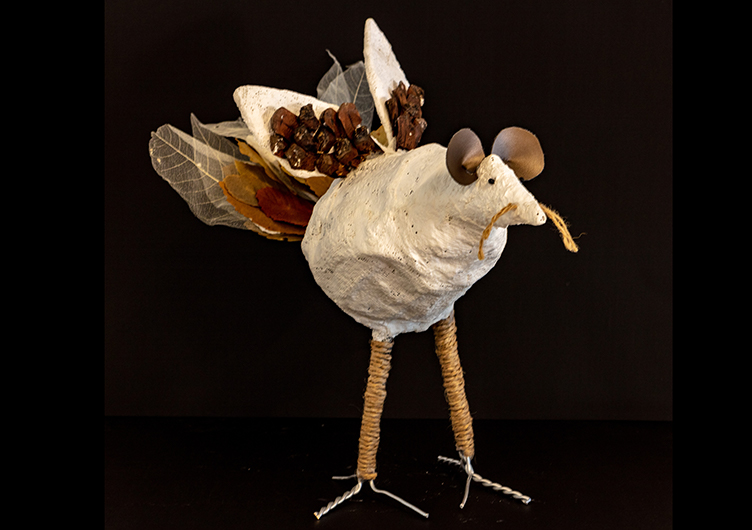
Isabelle Kolff van Oosterwijk (8M) has created an imaginative and well-constructed creature as part of the concept, ‘Animalgams’.
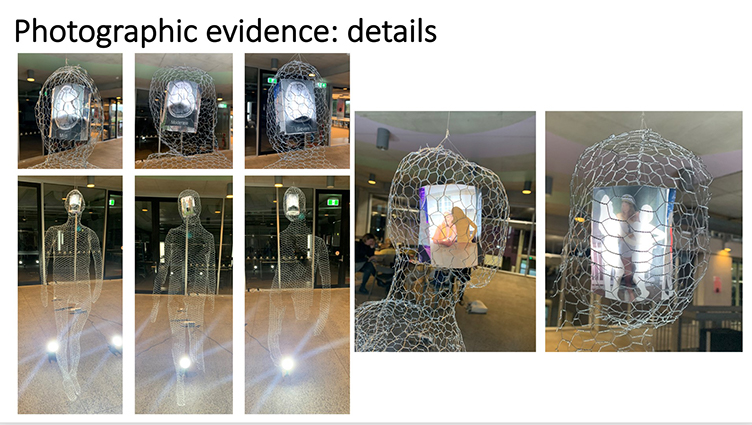
Emma-Rose Neil’s (12M) work responds to the concept ‘Art as Alternate’ through an evolved exploration of the ways in which humans experience memory loss. In this installation, she emphasises the transiency of life, depicting the natural deterioration of mind and body during ageing.
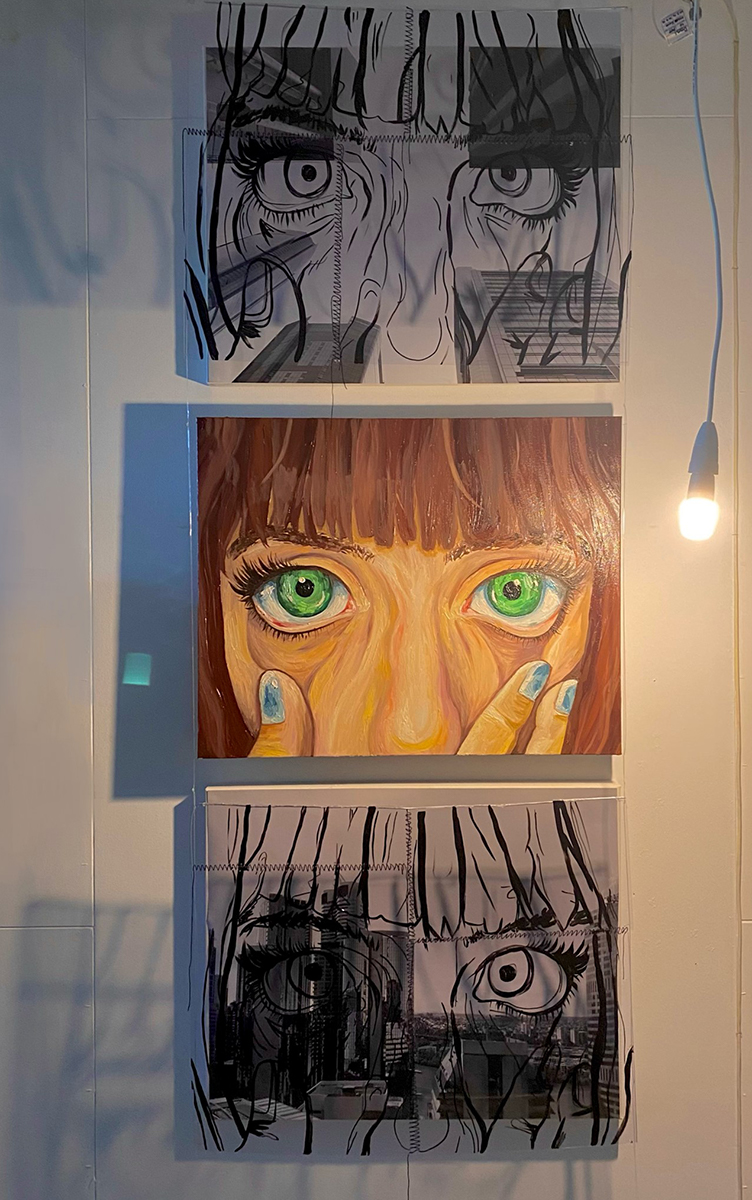
Through the concept of ‘Art as alternate’, Ella Hore (12R), evolved her focus into an urban-based response reflecting on the contemporary context of urbanisation and globalisation during the 21st century.

Halle Batchelor’s (12G) ‘Art as knowledge’ piece responds to the Focus of Technology within society—humans have a slippery grip on their natural selves as we have become reliant on technology.

Simran Mackrani’s (12H) work, She Remains, evolves the focus We-are-able art through the concept Art as Alternate. In her installation, visual progression of a burning flame, followed by confronting self-portraits, then a burnt cotton ball, convey a story of struggle and oppression.
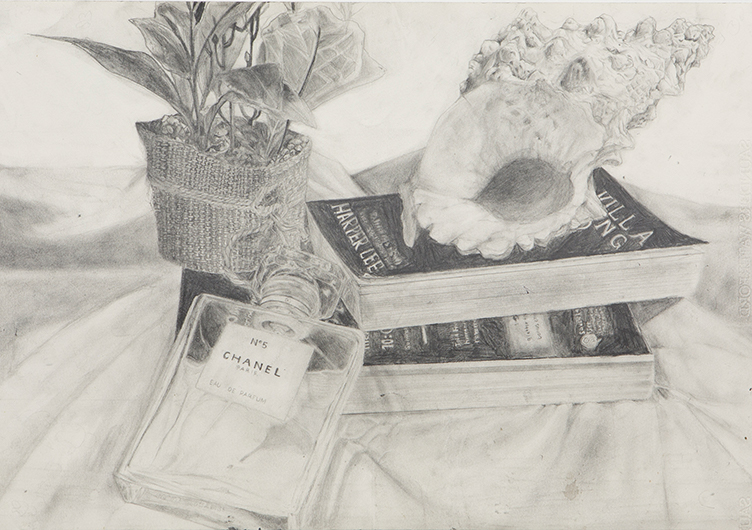
Farrah Gresham’s (9W) graphite piece is another beautiful example of ‘still life’ in the tradition of Momento Mori.
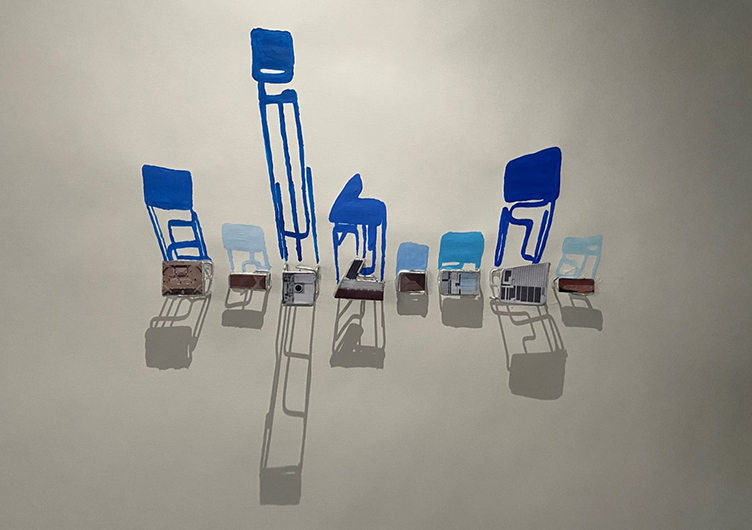
Emma Spork’s (11W) artwork, Blue prints, was inspired by the change in her confidence throughout her time at the School. Her work invites the audience to reflect on their experience at school, and how it shaped their values, beliefs, and confidence.

Kate Redmond (11L) responded to Art as Code by incorporating a contrast from human to AI. Her approach to technique derived from Anh Do, and the comparison of AI and human was developed from David Szauder.
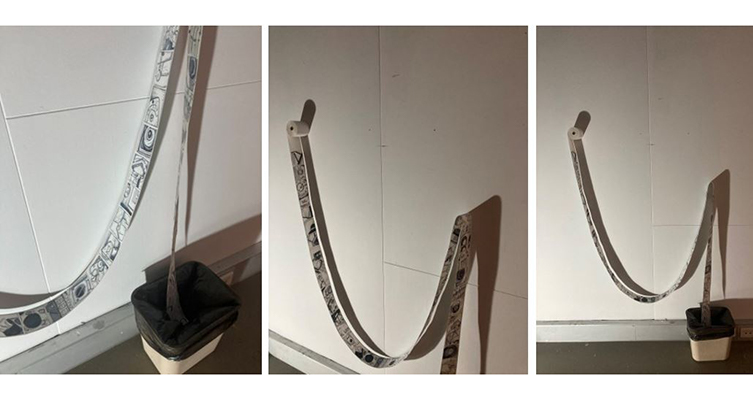
Esther McDade (11H) has developed the artwork ‘Fleeting Receipts’, which incorporates both formal and cultural contexts apparent in her previous experimental works—a universal symbol of consumerism, the receipt. The artwork suggests that students’ time spent at school is nothing but a brief transaction, in which memories and existence are to be like receipts—to be glanced at and discarded. The empty, untouched receipt roll is a symbol of the future; memories yet to be made.
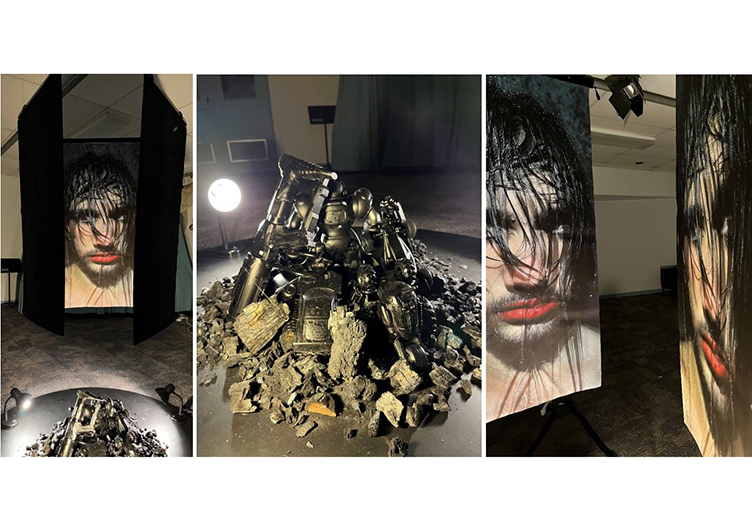
In Audrey Kirk’s (12M) response to the concept ‘Art as Alternate’, she investigates the reflection of ‘toxic masculinity’. Her work successfully engages the audience through the scent of a burnt-out fire and the confrontation on the man’s face.
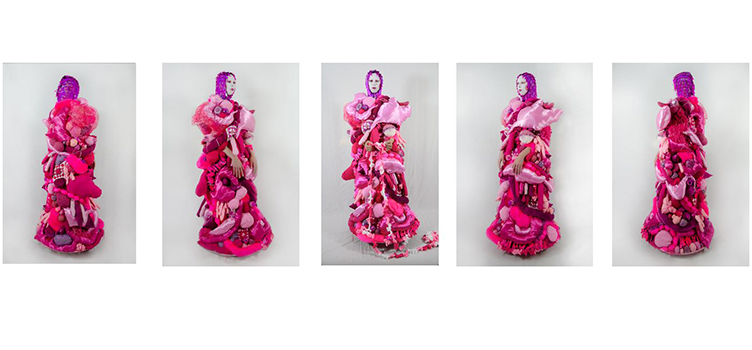
Holly Eddington’s (12B) work develops the concept ‘Art as Alternate’ through an evolution of the focus ‘Material Masquerade’, from exploring solely personal identity, to investigating an alternate context of broader contemporary female identity.

Through the concept ‘Art as Alternate’, Mink Godfrey-Asseraf’s (12M) work adopts an alternate approach to the present-day issue of environmental destruction in IA2 by uncovering the actions that have led to humanity’s current state. Through the making of Seven, the focus Into the unknown evolved from the ‘unknown’ encompassing the future, to it representing the past through the unique selection of sand for its archaeological ties.
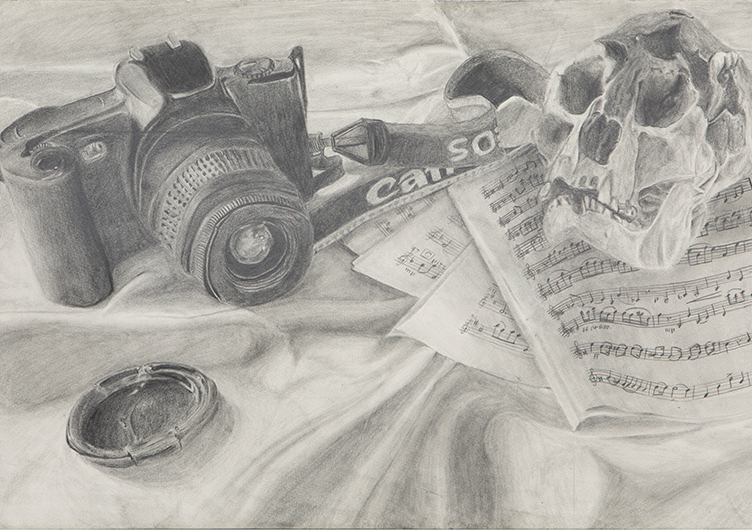
Emily Jiang (9B) uses the concept ‘Memento’ through the focus of juxtaposition. Emily’s combination of contemporary and timeless symbols invites the viewer to reflect on the passage of time.
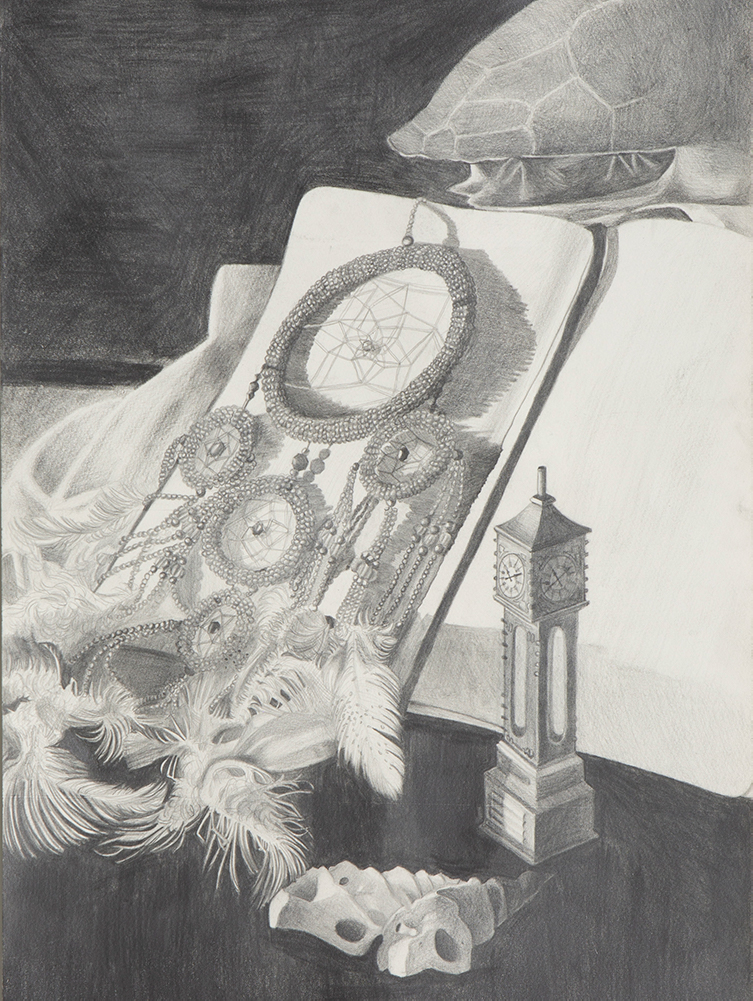
Shanae Sirimana’s (9L) delicate Still Life drawing, using fine techniques, successfully projects a feeling of the passage of time through her carefully chosen objects and symbols.
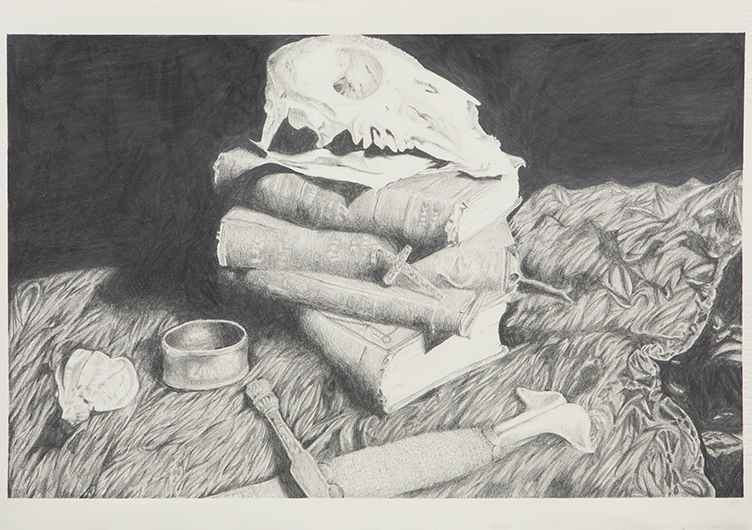
Using the concept Memento through the focus of Juxtaposition, Lauren von Hoyer-Davies (9W), has created a beautifully detailed drawing of a still life arrangement. Through her creation of the original arrangement, we are reminded of the transience of life and celebrate the tactile qualities of symbolic objects.
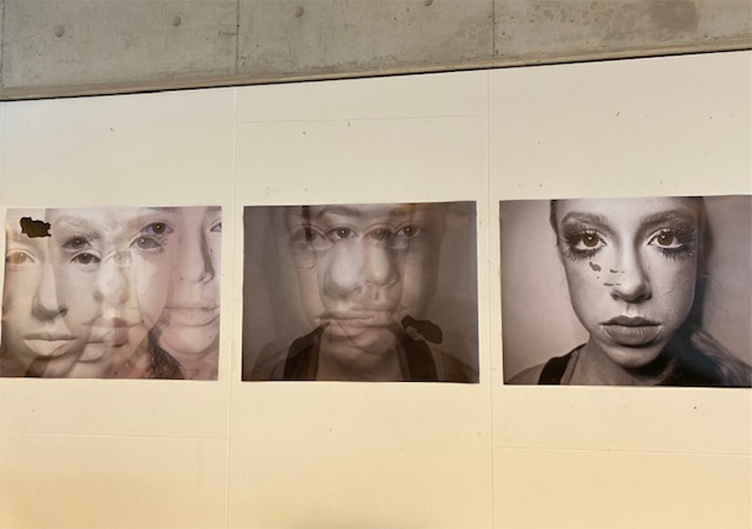
Harper Crocombe’s (12G) artwork ‘Beauty Mark’ responds to the unit concept, Art as Knowledge, by reflecting on the contemporary context of harsh beauty standards for women in the past, present and future. Beauty Mark develops the focus of Harbinger by displaying a linear progression of images, which acts as a warning for the potential erasure of individuality that conforming to these standards may cause.
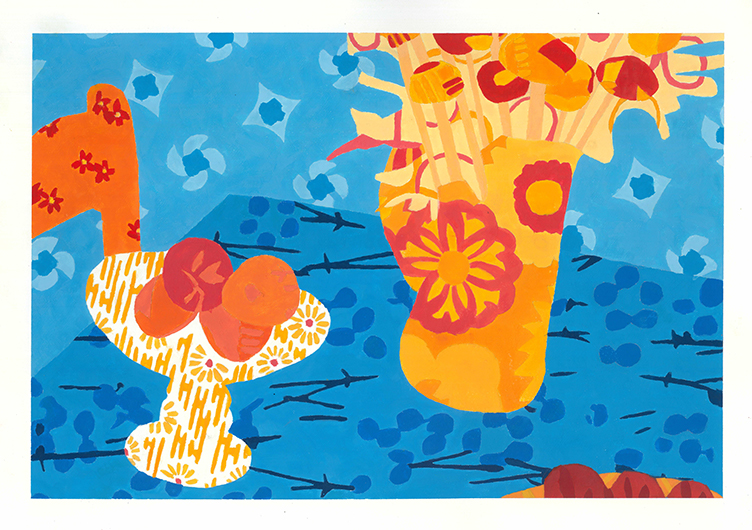
Amy Jiang’s (8M) sensitive choice of colour creates a contemporary take on the ‘Still Life’ genre.
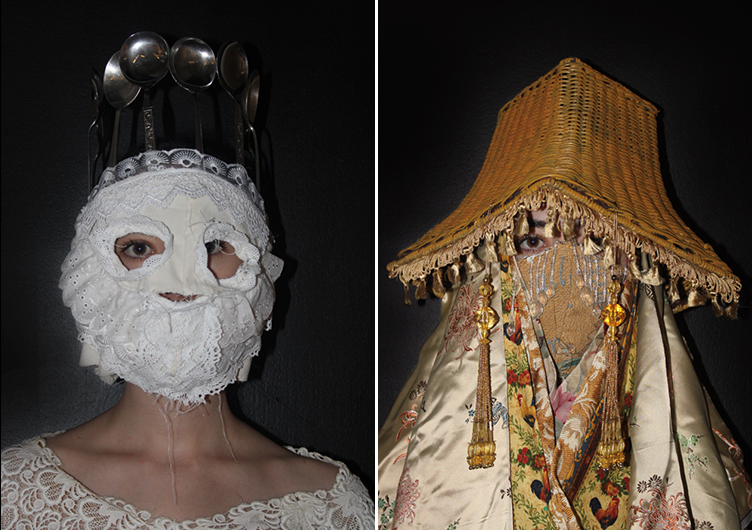
The concept Art as Knowledge guided Holly Eddington’s (12B) understanding of identity. The focus of Material Masquerade was translated into her work, Mementos of Me, in which she explored how ‘material’ memories shape identity through a wearable art medium.
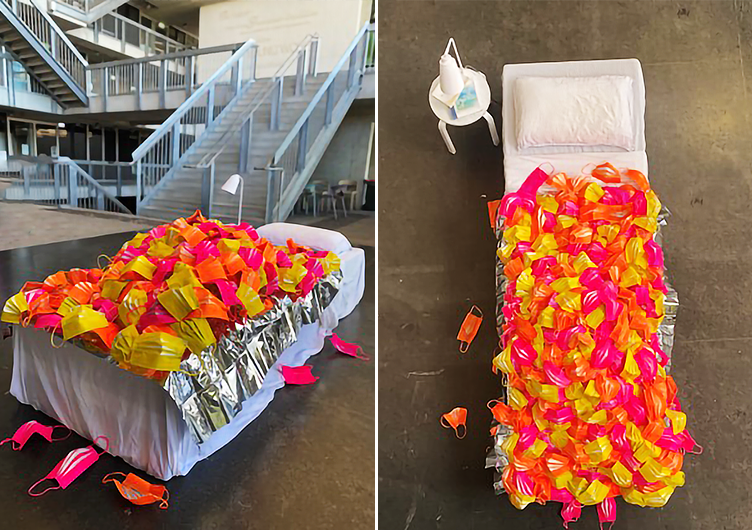
Amara Ranchigoda (12L) responded to the concept, Art as Knowledge, through the contemporary context of the pandemic and the notion of oppression and uncertainty associated with change in the world. A Million Masks develops the focus of ‘human experience’ through exploring society’s experience.
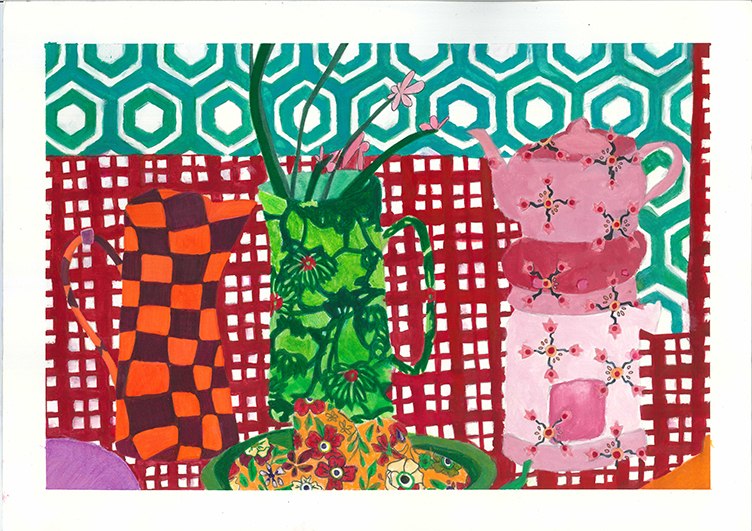
Jennifer Chinnappa-Siddham’s (8G) expert colour mixing has produced a varied and vibrant work as part of the Year 8 Still Life Paintings unit.
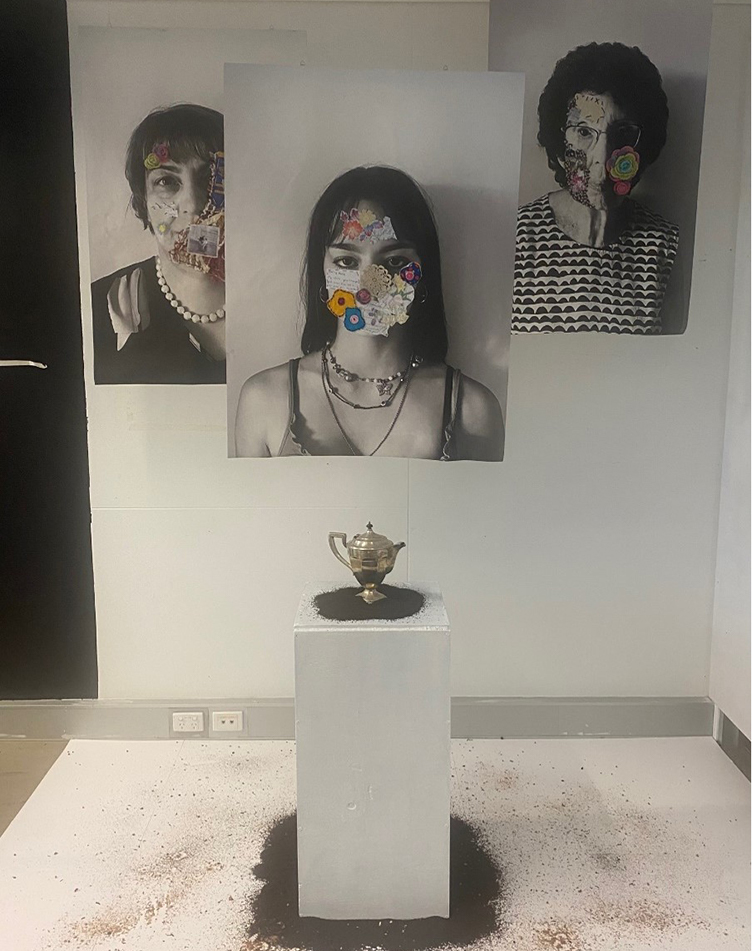
Responding to the concept ‘Art as Knowledge’, Hadley Perrie’s (12R) work portrays a personal context of pain through genetic relations, specifically through her grandmother’s experience immigrating to Australia from Sri Lanka.
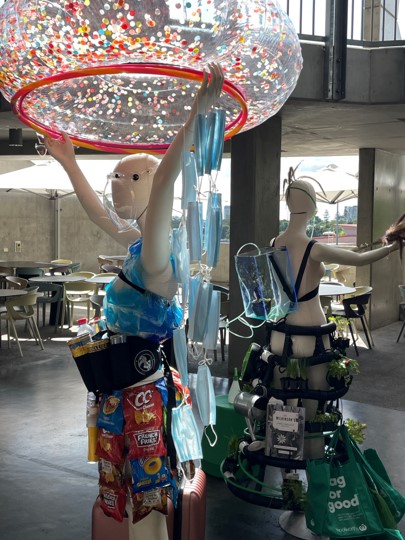
Mink Godfrey-Asseraf’s (12M) life-sized mannequin display, Exit strategy, generates a new understanding of the contemporary context of climate destruction and doomsday speculations.
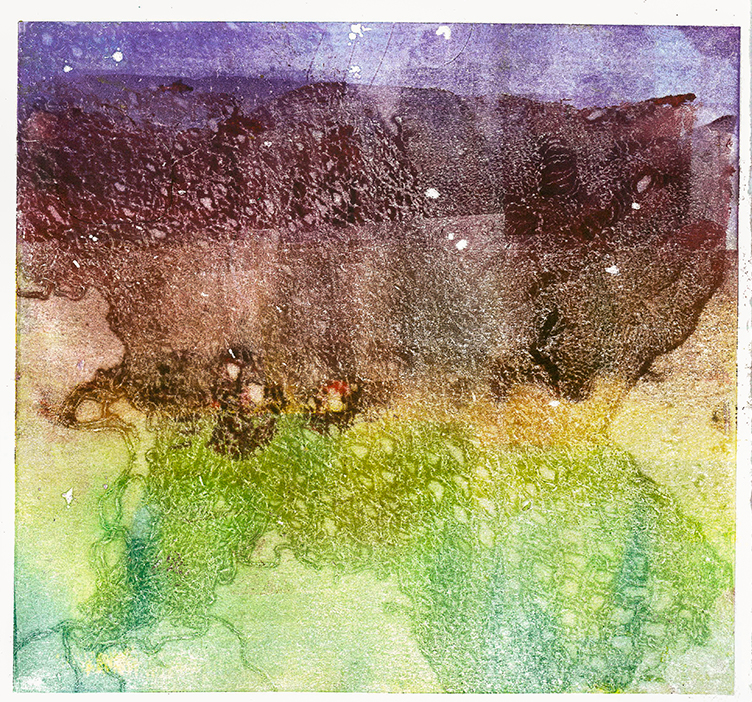
Madeleine Atkinson (7M) created a wonderful experimental monoprint during an Art Workshop with guest artist, Ms Nancy Brown, in Term 1. The delicate shapes and colours evoke a fantasy landscape.
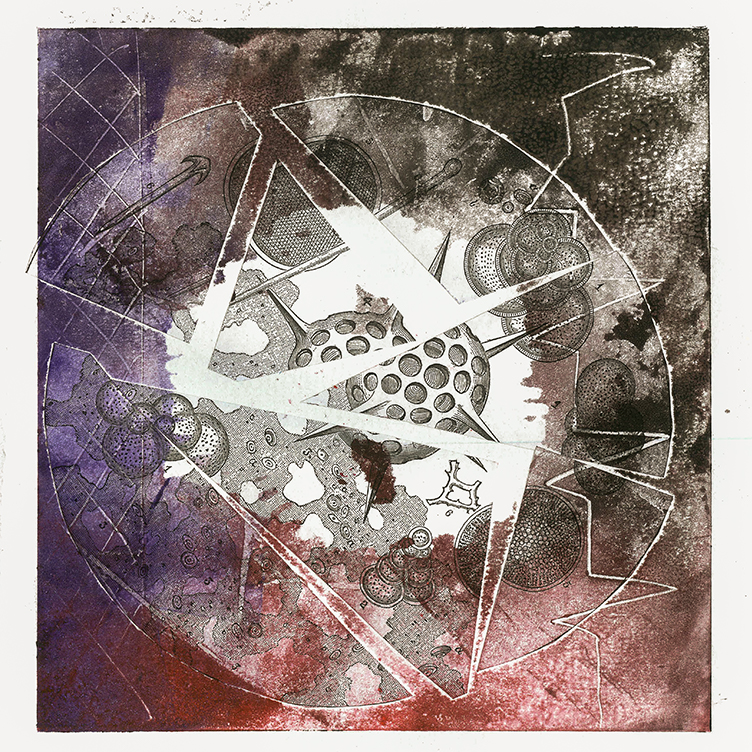
Eliza Canfield (10E) created this experimental monoprint during an Art Workshop conducted by guest artist, Nancy Brown, in Term 1. The colours and choice of image create an eye-catching work of art.
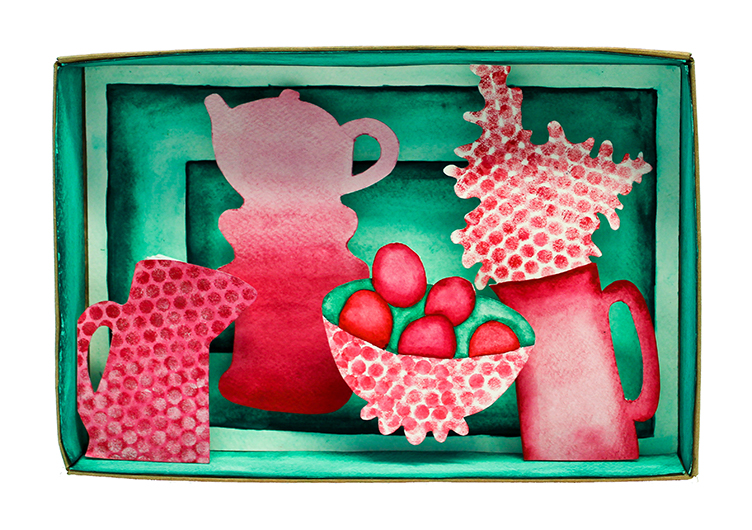
Rachel Zhou’s (9M) colourful collage appropriates a simple scene to depict the concept of ‘Simple Pleasures’.
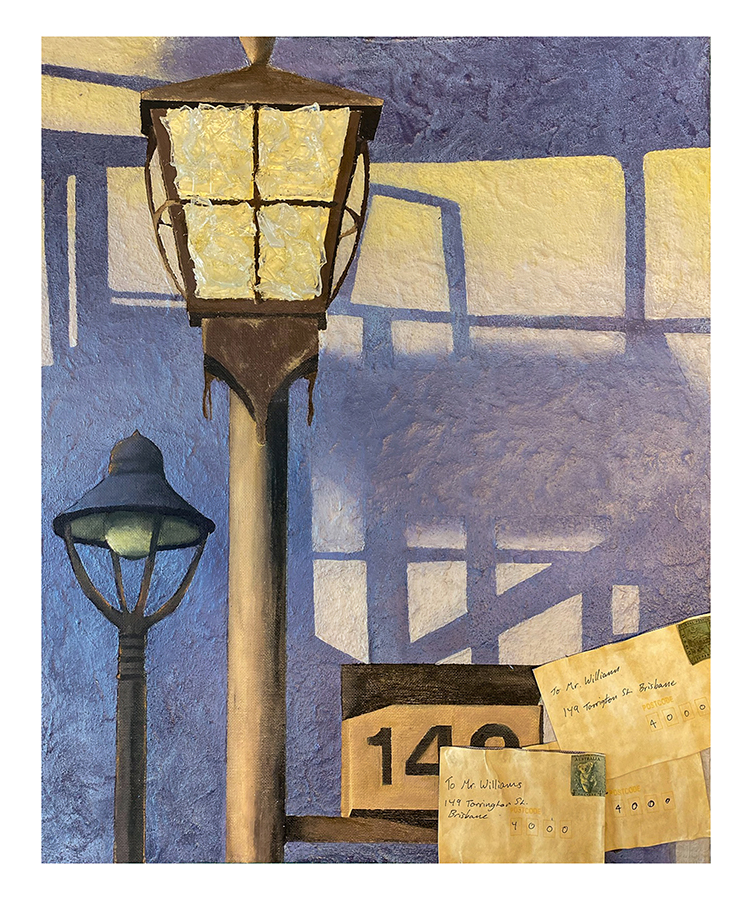
This subtle work by Year 10 student, Iris Brickwood (10G), is another view of the Spring Hill ‘Urban Scape’ and employs soft brushwork and complementary colours.
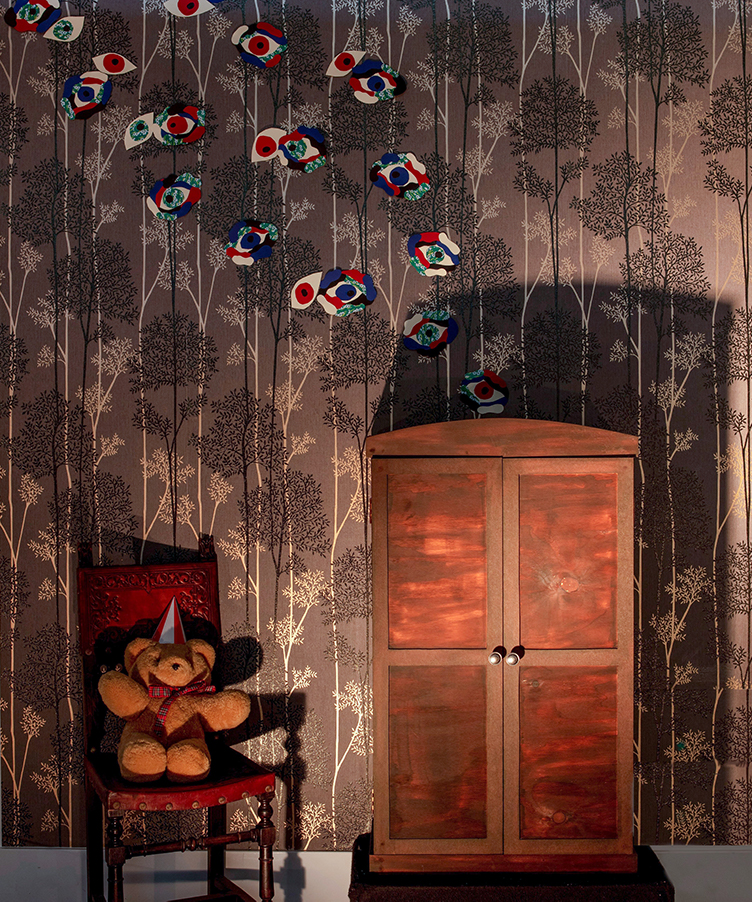
Eloise Mitchell (2021) explored the techniques of assemblage to evoke curiosity and fascinate audiences through composition and choice of symbols in her work, Eye Spy With My Little Eye.
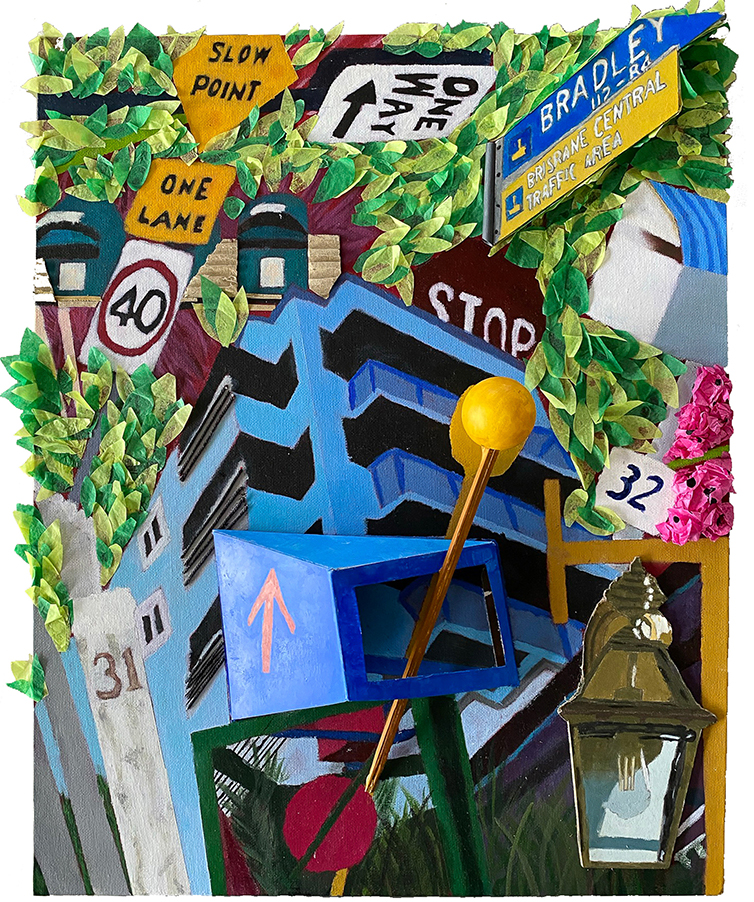
Elizabeth Wong (10H) crafted this artwork after students undertook a photographic excursion in Spring Hill to find inspiration for the concept ‘Motifs of Urban Life’.

Year 12 student, Mink Godfrey-Asseraf (12M), captured the fragility of beetles in this ink drawing. This work was completed during the ‘Art as Lens’ Unit in Year 11, 2021.
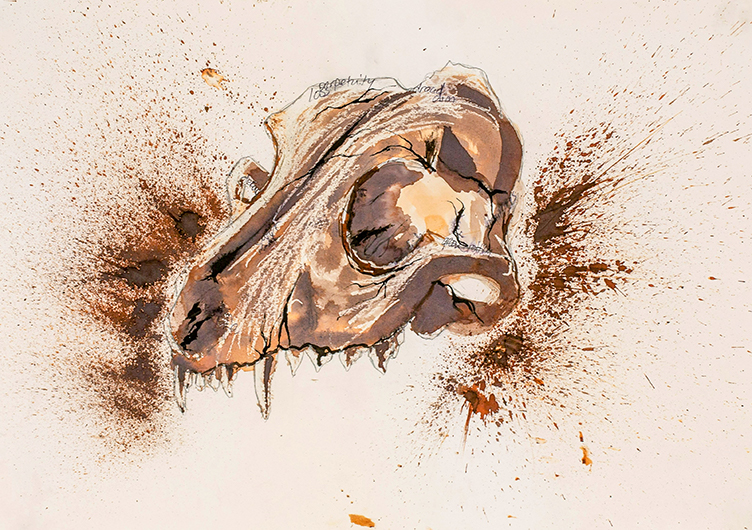
This expressive drawing of a skull, created by Ebony Lee (12E), was part of a suite of experiments undertaken through the first task of Year 11 Art, 2021. A sense of movement was successfully created contrasting with the static nature of the subject.
2021
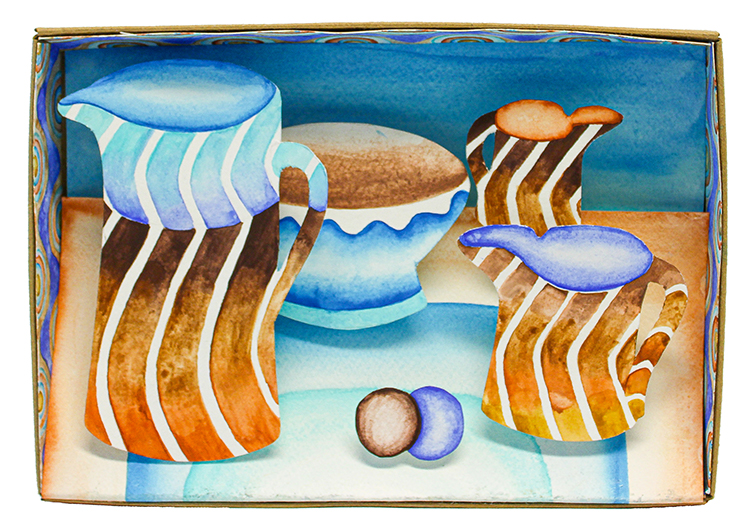
This mixed media construction, Still Life, by Shanae Sirimana (8L) captures a sense of playfulness through its clever use of pattern and colour.
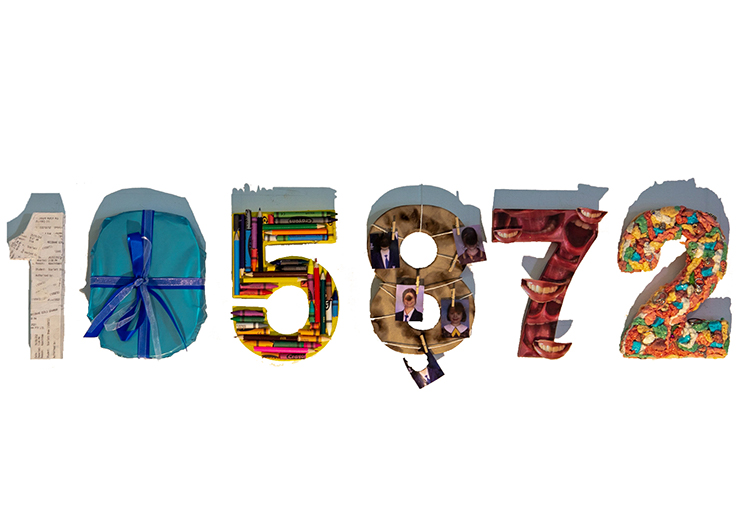
Scarlett Shaw’s (11L) artwork ‘Concealed Identity’ was inspired by each student having a number to represent themselves within the School.

Scout Sommerfeld’s (9L) skilful organic charcoal drawing successfully responds to the Concept ‘curiosities’ through the focus of ‘clues’.
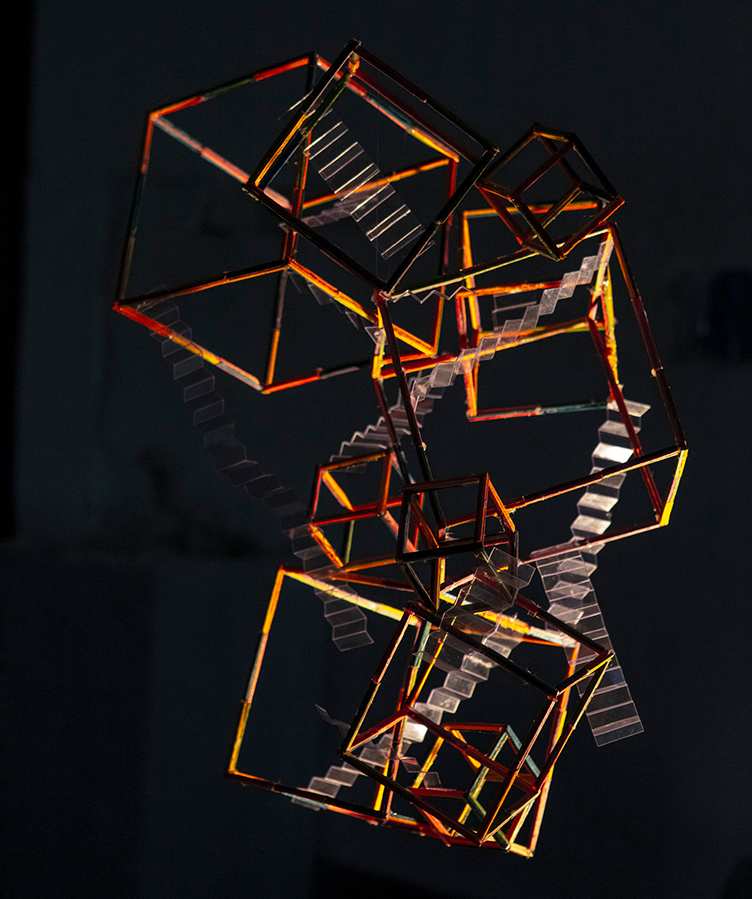
In this experiment from the Art as Code unit, Elise Truong (11B), uses repetition and pattern to successfully demonstrate the characteristics of the Formal Context.
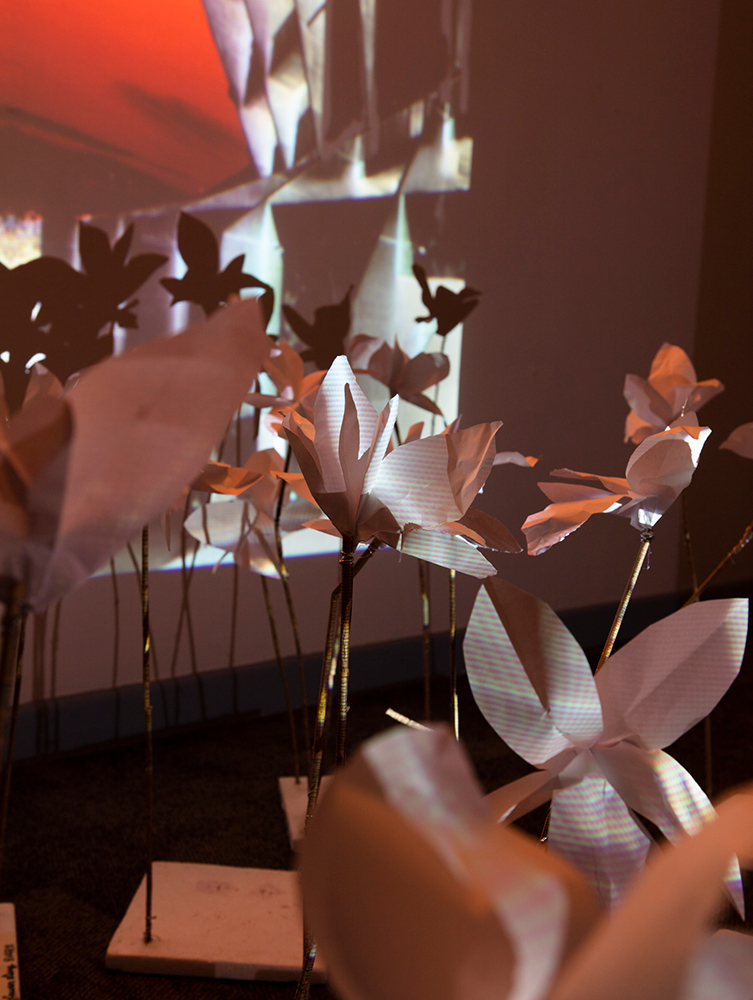
Danielle Foster-McGinn’s (11B) installation, Impressionable, responds to ‘Art as Code’ through the flowers in a field that is decoded as the School community. The cultural context of school and industrialised life is demonstrated through the formal context of the flower field being consumed by the projection.
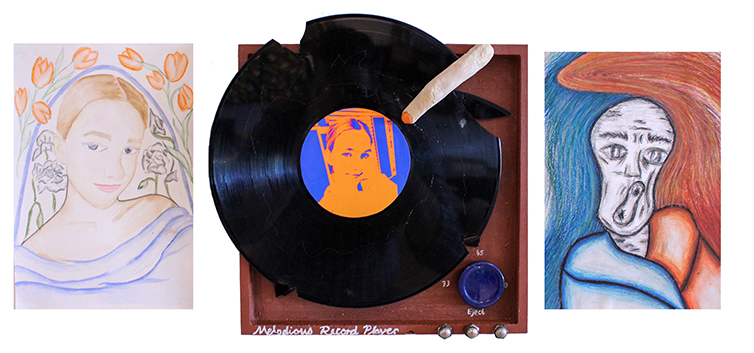
Through the exploration of twentieth-century Art Movements, Avalon Blundell (10E), has revealed different facets of her personality using a variety of mixed media for her piece, titled ‘More than a Pretty Face’.
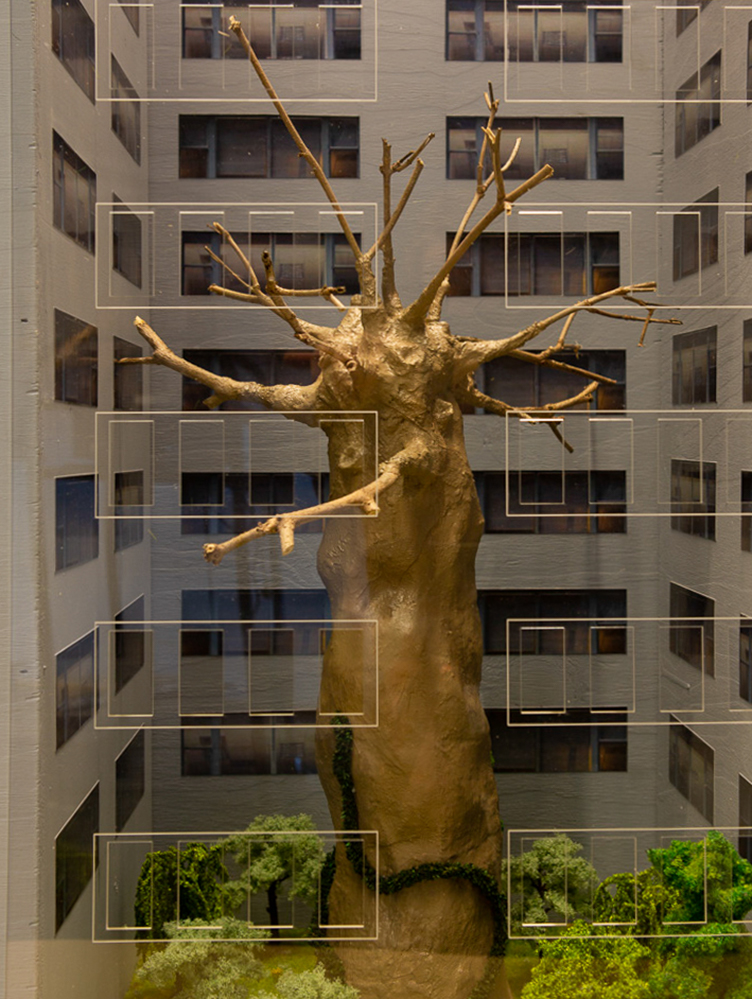
Alexandra Keeley (12E) presented a warped perspective and scale called ‘Closing in’ in response to the unit concept ‘Art as Alternate’. The audience is drawn to the off-scale buildings, and crowded, miniature forms of nature in comparison, prompting thought and discussion of her evolved focus of industrial expansion into the natural environment.
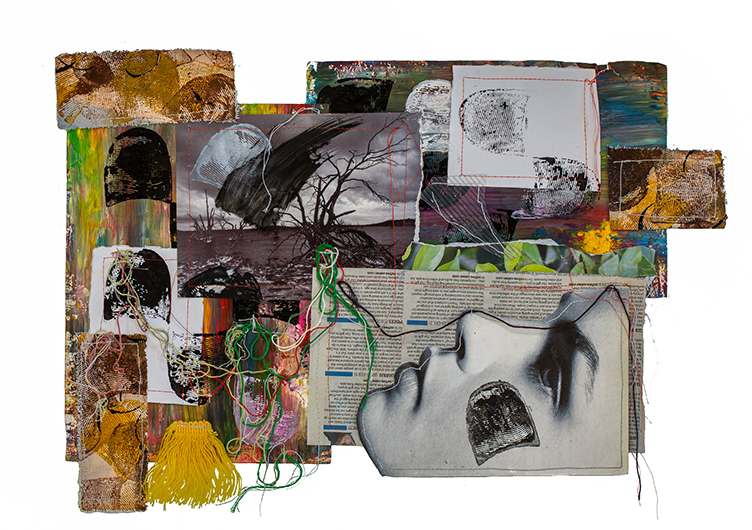
Amelia Smith (11O) employed a sensitive combination of collage and drawing to create an eye-catching piece of work for her Year 11 ‘Art as Lens’ portfolio.
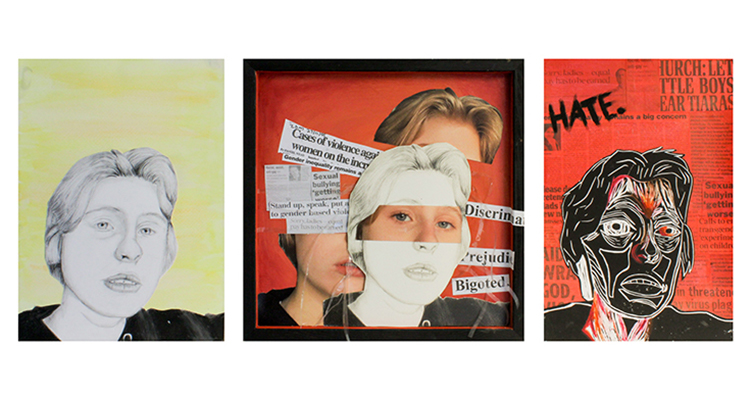
Claudia Heath (10E) has investigated the concept of ‘more than just a pretty face’ for her artwork. She skilfully captured three different aspects of her personality by using mixed media and construction to create a self-portrait series with three different art movements.
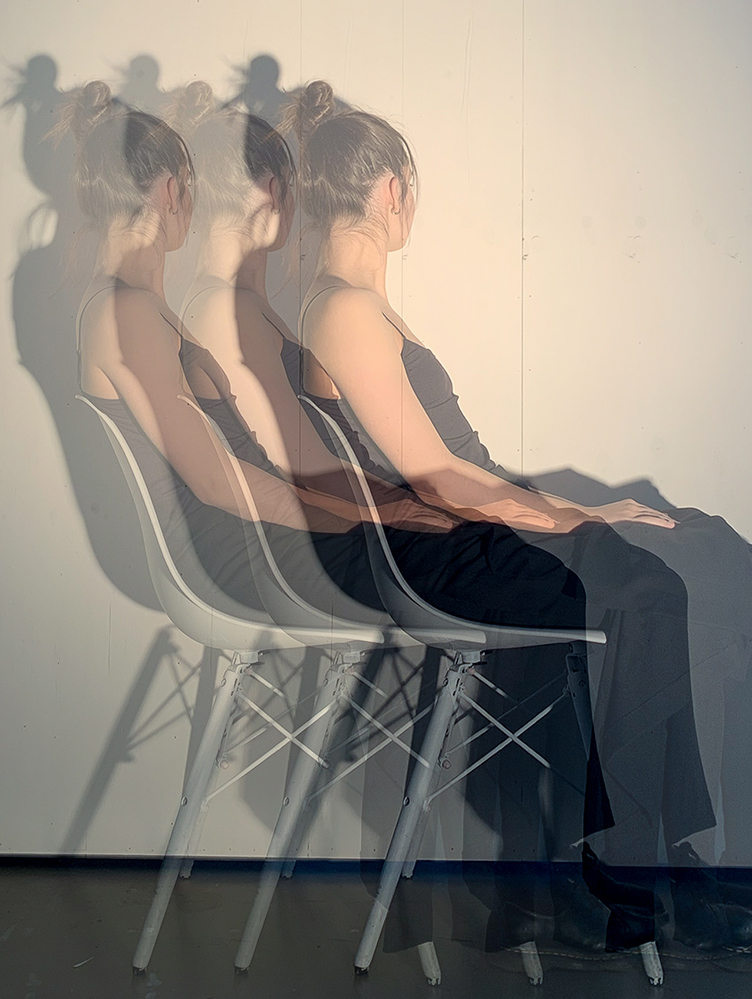
Year 12 student Trinity Huf (12B) investigated the concept ‘Art as Alternate’ through an imaginative installation containing photographs printed on transparent plastic material. The photos stand alone as beautiful images.
‘The Waiting Room evolves my focus—Evolutionary Conformity—by portraying the continuity of life as a symbol of how conforming to societal norms entraps one in a metaphorical waiting room.’ Trinity Huf, 12B
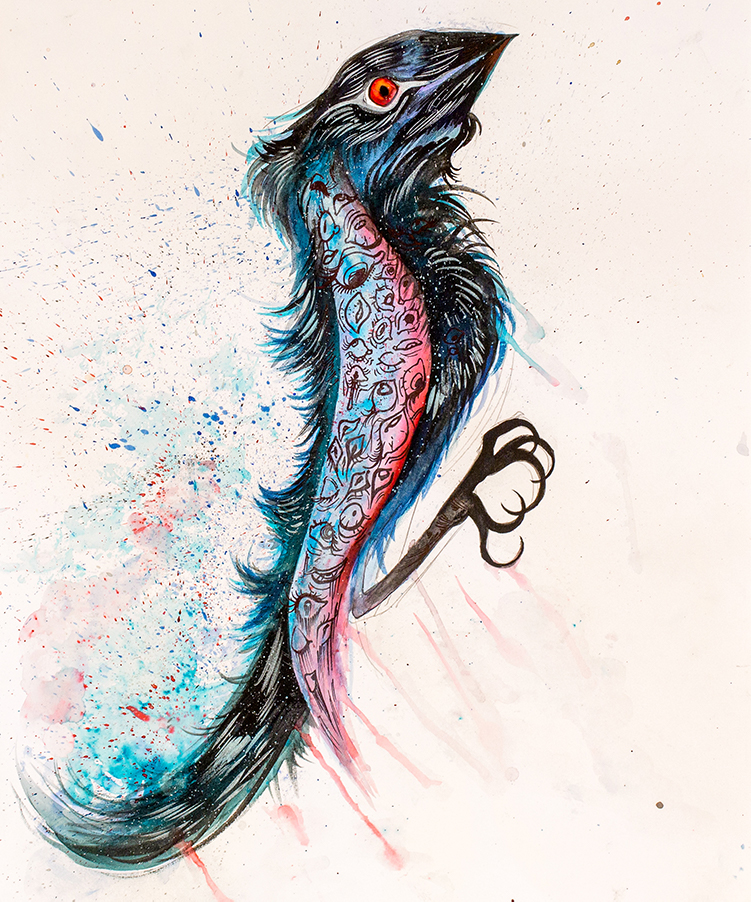
As part of the Year 11 Unit, Art as Lens, students were asked to observe and interpret the world with fresh and imaginative eyes. Keira Ryan (11E) has created a delicate water colour and mixed media work that reveals her creative eye for colours, shape and form.
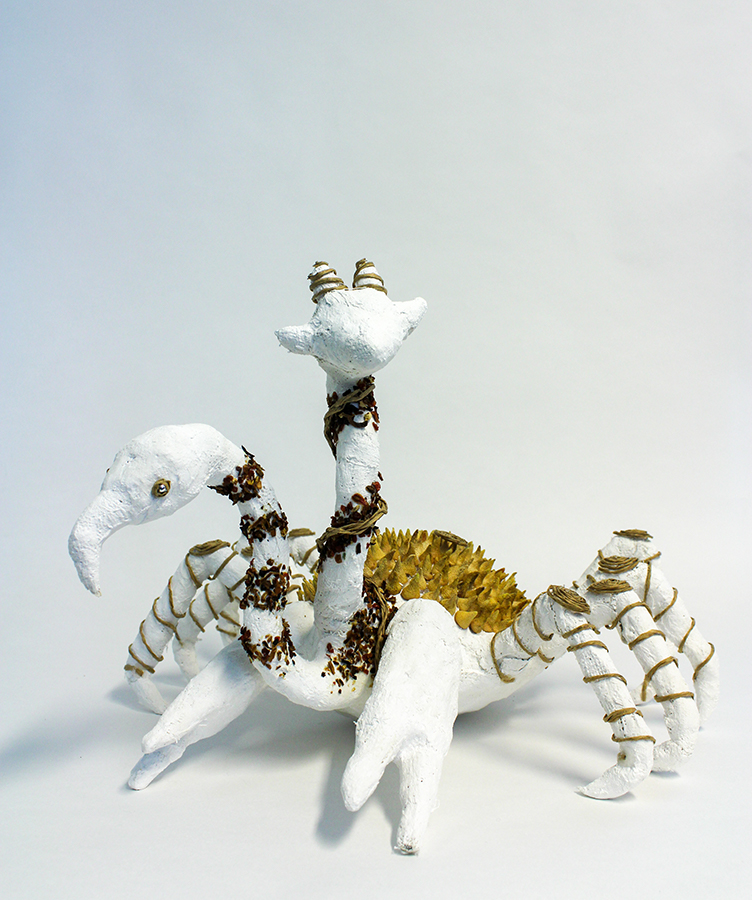
Year 8 student, Rachel Zhou (8M), combined several different species to create her plaster creature in Term 2 on the concept of hybridity. Her artwork features a turtle shell with crab claws and spider legs, and the creature has both a giraffe and flamingo head.
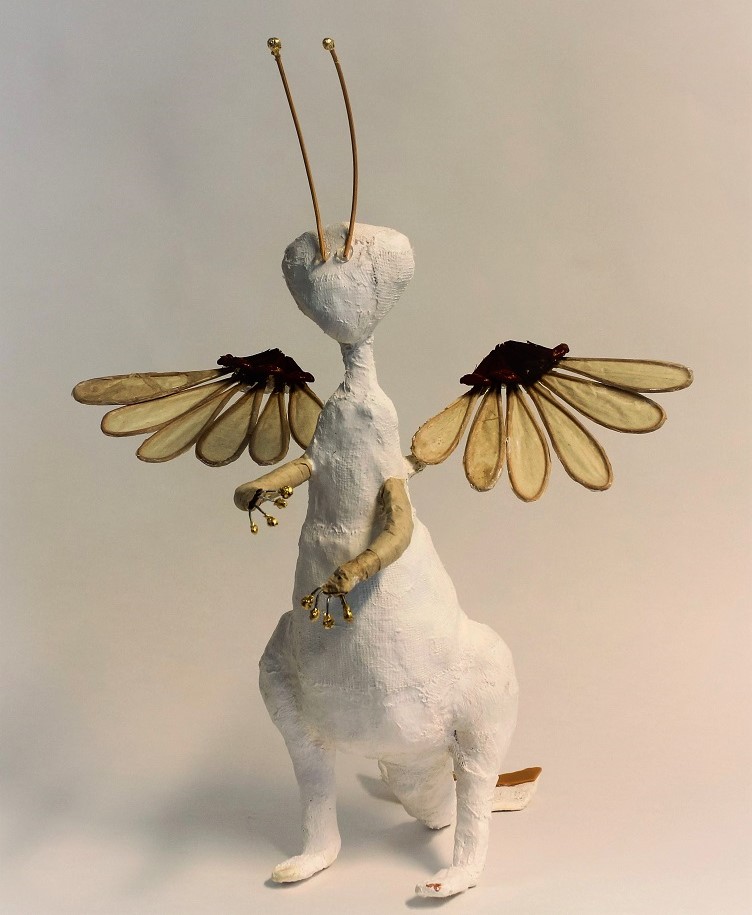
Built from plaster bandage over a wire armature and extended with selective mixed media elements, Ava Tran’s (8G) Creature combines several reference images to create a quiet and delicate character.
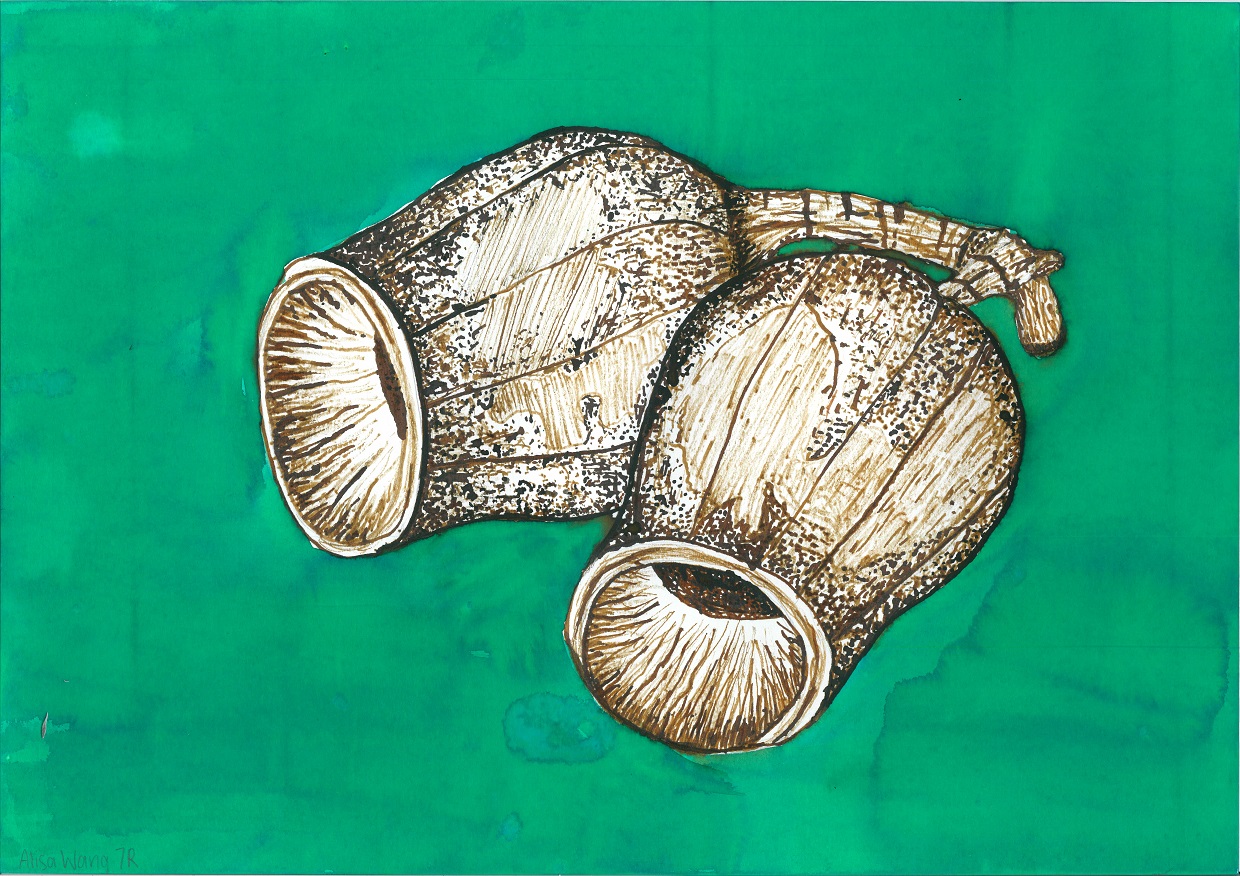
Developed with close observation of both form and texture, this seedpod drawing by Alisa Wang (7R) confidently fills the space of the page and works inventively with media and technique to reproduce the detail and nuance of surface pattern.
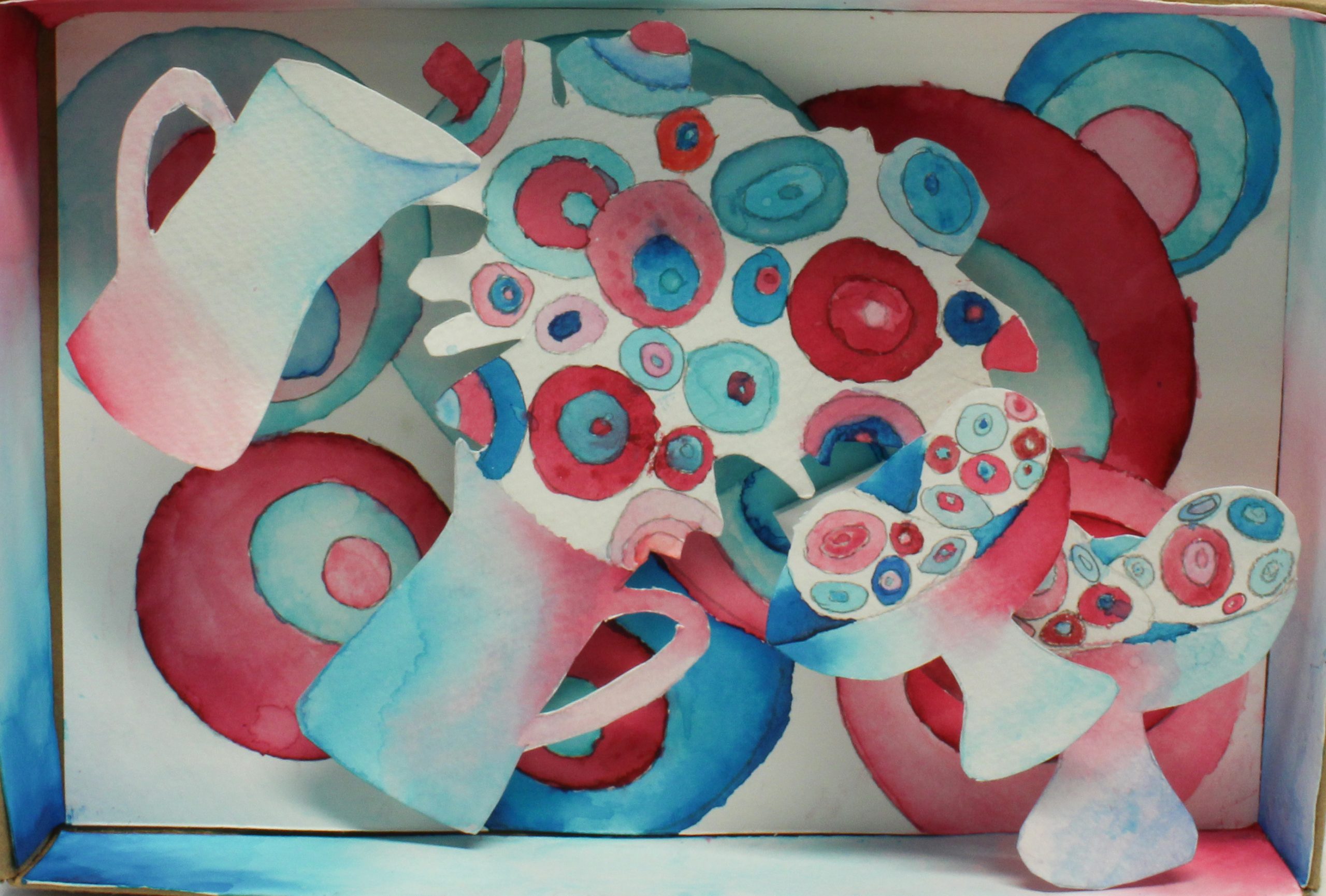
Year 8 student, Olivia King (8R), uses repeated circular motifs, crisp watercolour graduations and lively compositional organisation to create a sense of light-hearted movement and visual play in this Still Life relief titled Circle Party.
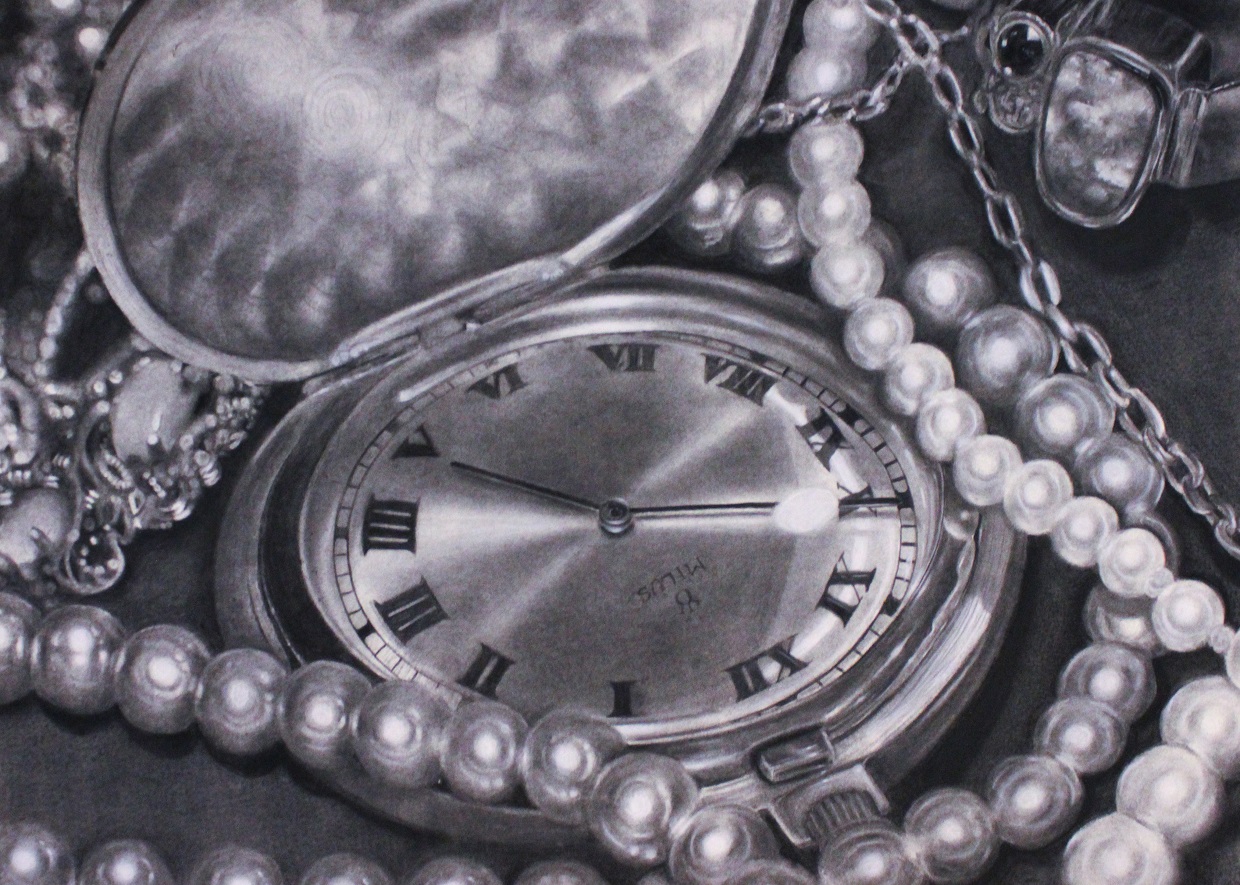
Skillfully capturing the luminosity of all surfaces, this large-scale charcoal drawing by Asha Stewart (9G) uses subject and composition to reference the curiosities of time and the history of family objects.
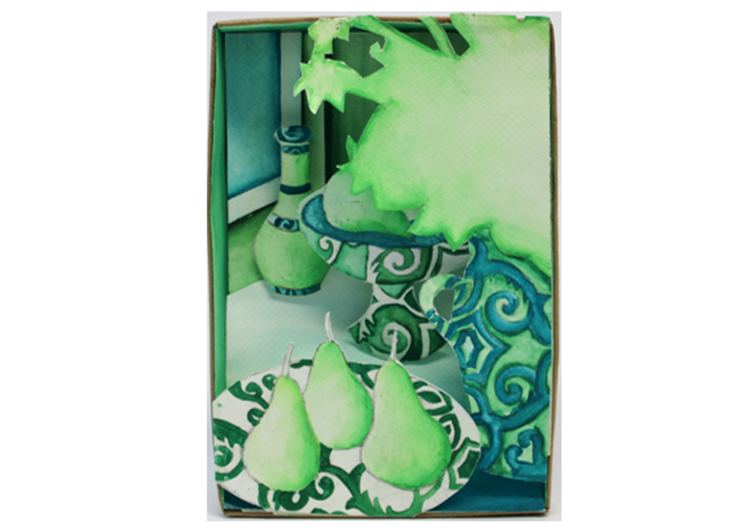
Year 8 student, Jenna Hilditch (8G), uses framing and the diminishing scale of objects to create a focal point and enhance the sense of spatial depth in the shallow relief of this Still Life composition titled Grandma’s Present.
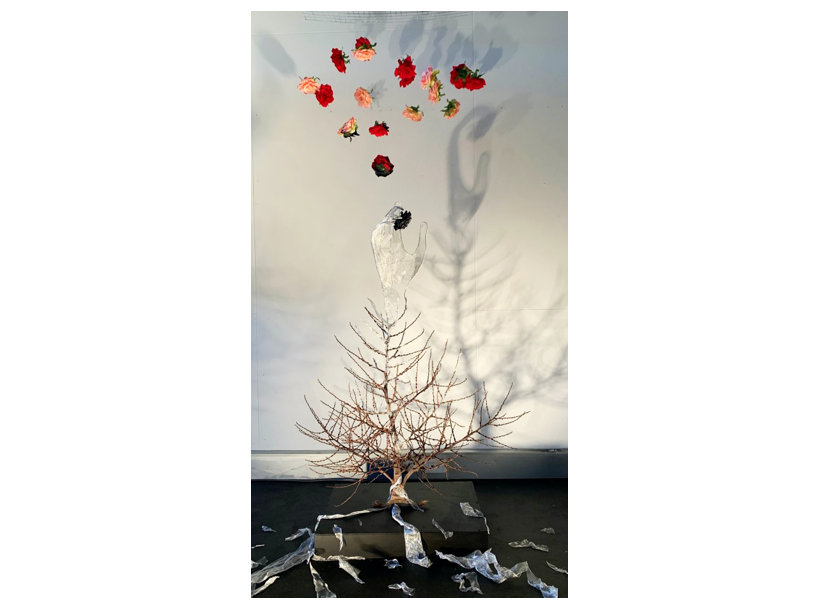
This mixed-media installation, Reaching Beyond, by Jessica Phillips (12G), explores the relationship between environmental damage and artificially generated human aspirations. It does this by using the form of the hand rising beyond the natural reach of the branching tree, grasping for the bright colours and forms of elusive desires, heedless of consequence.

Commenting on climate change, this large-scale installation and projection work titled Alternate Time, by Francesca Arcibal (12O), warns that the current implications of climate change are just the ‘tip of the iceberg’.
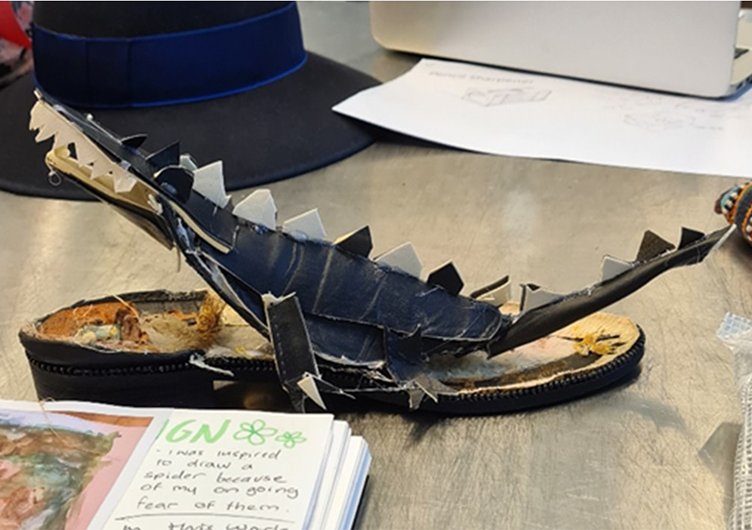
Investigating the concept and process of deconstruction and reconstruction, Danielle Foster-McGinn (11B) deconstructs the leather of a shoe, returning it to animal form.
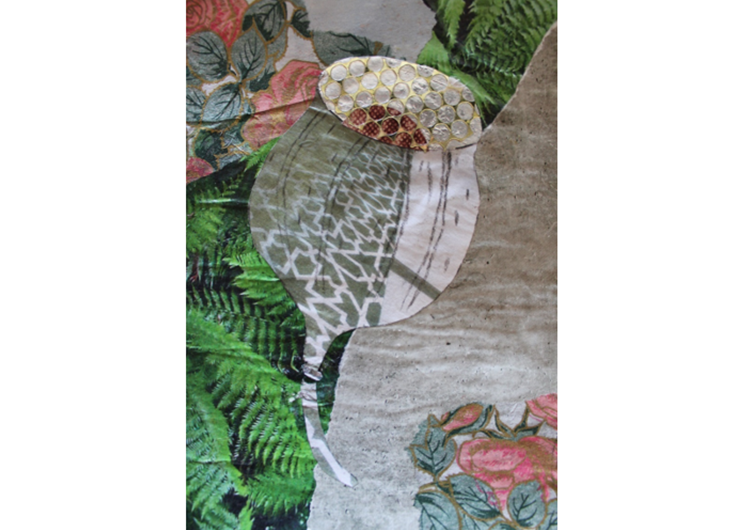
This delicate seedpod collage by Savannah Hignett (7M) is an extension of a drawing study and relief print work that draws on the imagery of selected materials to evoke the connection of the pod with cycles of natural life and growth.
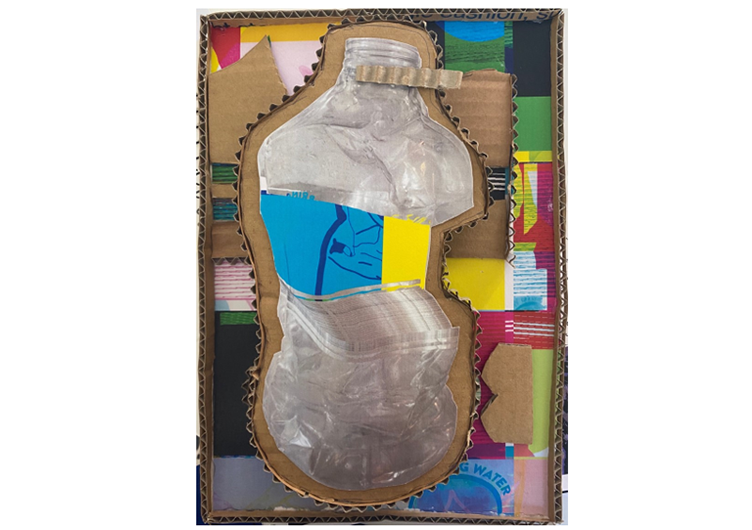
Developed as part of an experimental folio, this work by Lucy Noble (12M) takes a playful mixed-media approach to investigate design in the formal context.

Simple but well observed, this seedpod drawing by Sophie Hutchinson (7M) uses mark-making and the qualities of her ink media to develop a sensitive response to the form and detail of her subject.
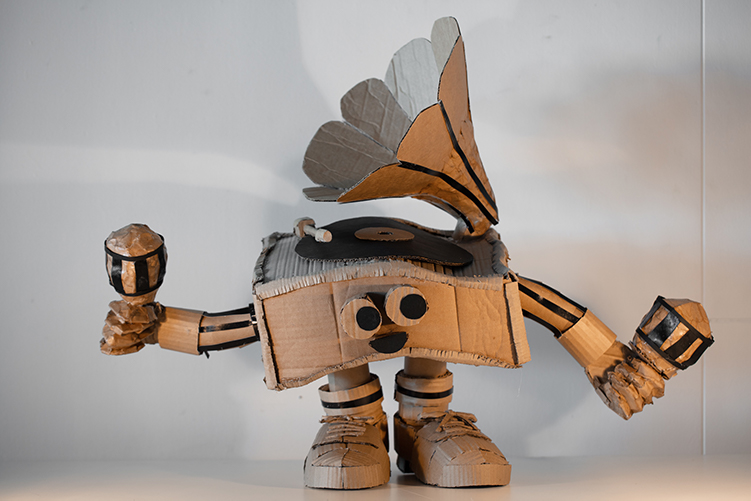
This cardboard sculpture, Record Dance, made by Carmen O’Connell (10E) at the end of 2020, combines a quirky sense of humour together with skilled problem-solving to create a lively character with a sense of movement.
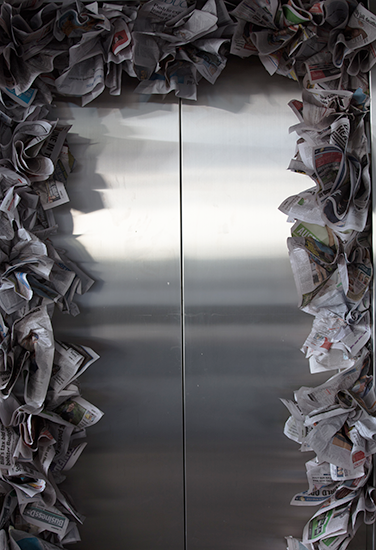
Developed as part of a non-assessed art challenge, Secret Garden was one of a series of Year 9 installation works that exploited the material qualities of a single-found material. The series created an experience for viewers within the space of the CLC building.
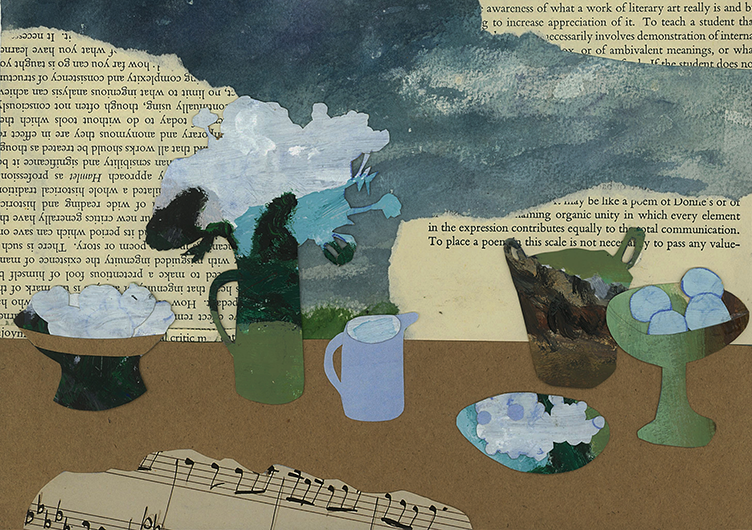
Appropriating the shapes of objects from a Margaret Olley Still Life, Jenna Park (8B), has used carefully considered combinations of collage materials in her work, Moonlight Melody, to create a new composition with a contemplative mood.

Developed last year in response to the COVID-19 experience, Isabella Pak’s (11O) photo appropriation of Grace Cossington Smith’s painting, The Sock Knitter (1915), acknowledges the COVID lockdown in the face of a different world war.

This still-life study drawn by Farrah Gresham (8W), captures the character of the leafy subject with bold confident lines.
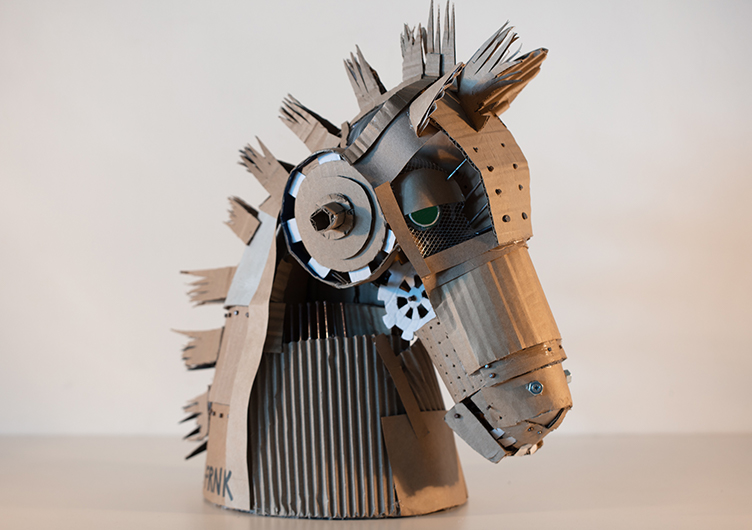
This well observed and creatively constructed cardboard sculpture, Frank 173-2, made last year by Amishi Ahlawat (10L), successfully exploits knowledge of the form and a feeling for the visual and physical qualities of chosen materials.
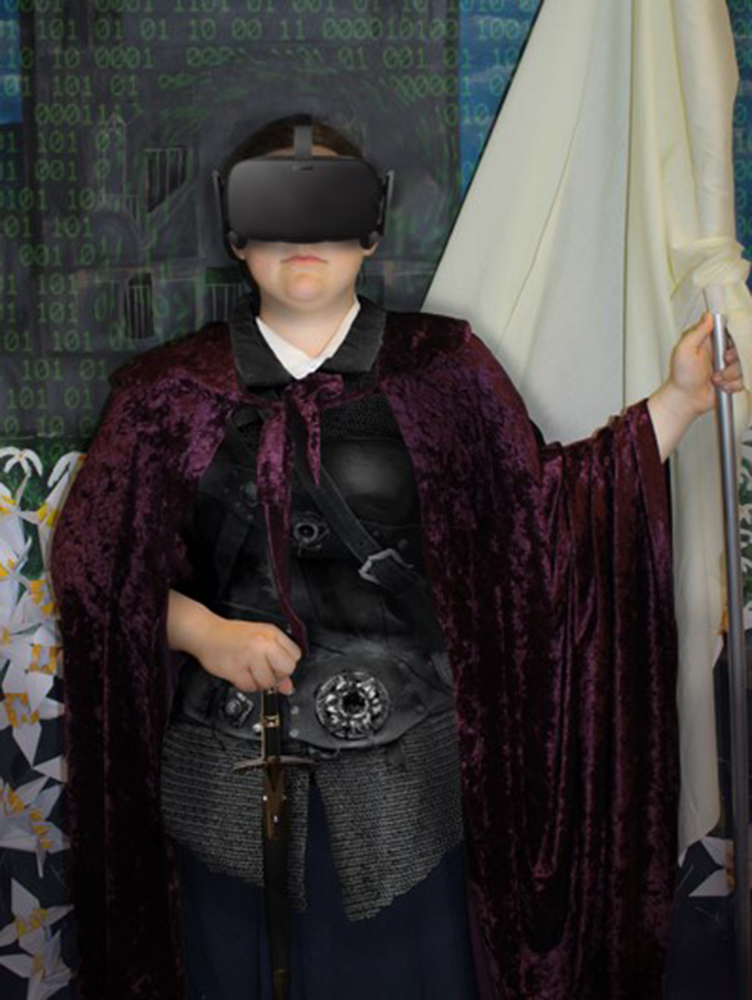
Ebony Lee’s (11E) work Digital Freedom plays on the well-known painting of Joan of Arc by Albert Lynch to represent the new fantasy of freedom through virtual technologies.
This work is part of a new exhibition of Photo Appropriation works produced by Year 10 2020 students and are displayed in the School’s Barbara Fielding Room.
2020
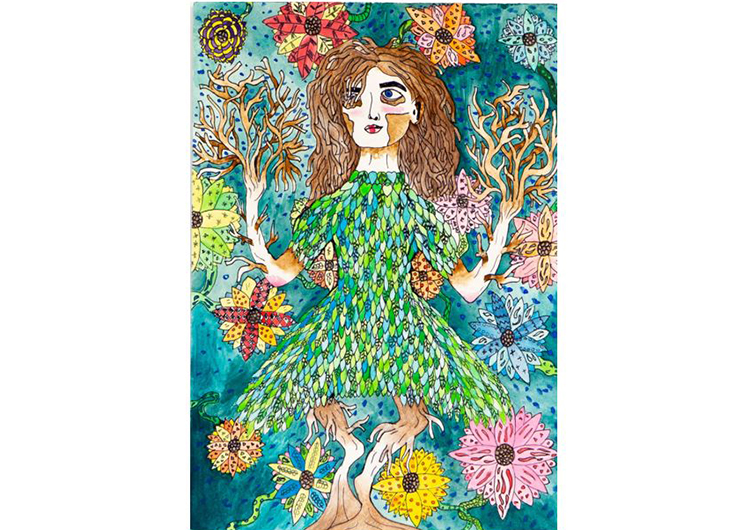
Responding to the work of Australian artist, Del Kathryn Barton, Daisy Sheahan (10W), embeds her subject within imagery drawn from the natural world, referencing the effort of growth and the flowering of human spirit.
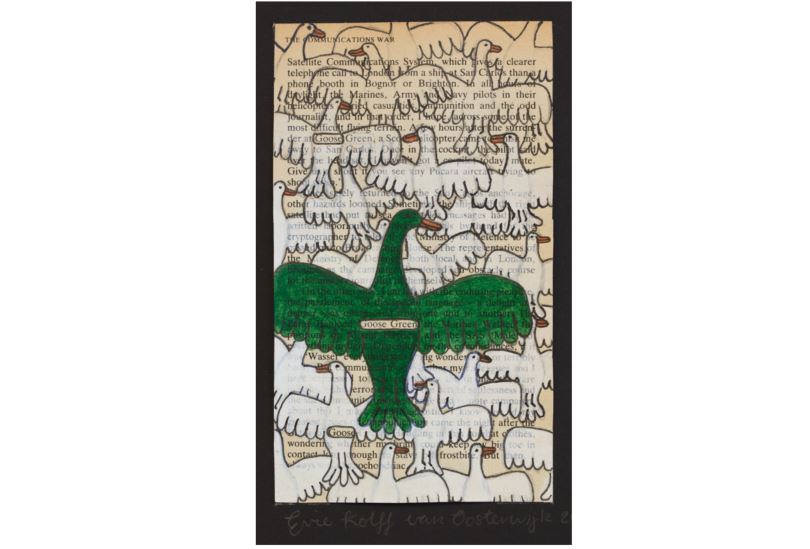
In this altered book page, Evie Kolff van Oosterwijk (8M) up-cycled a page from a recycled book with this neatly designed image in response to selected words from the text.
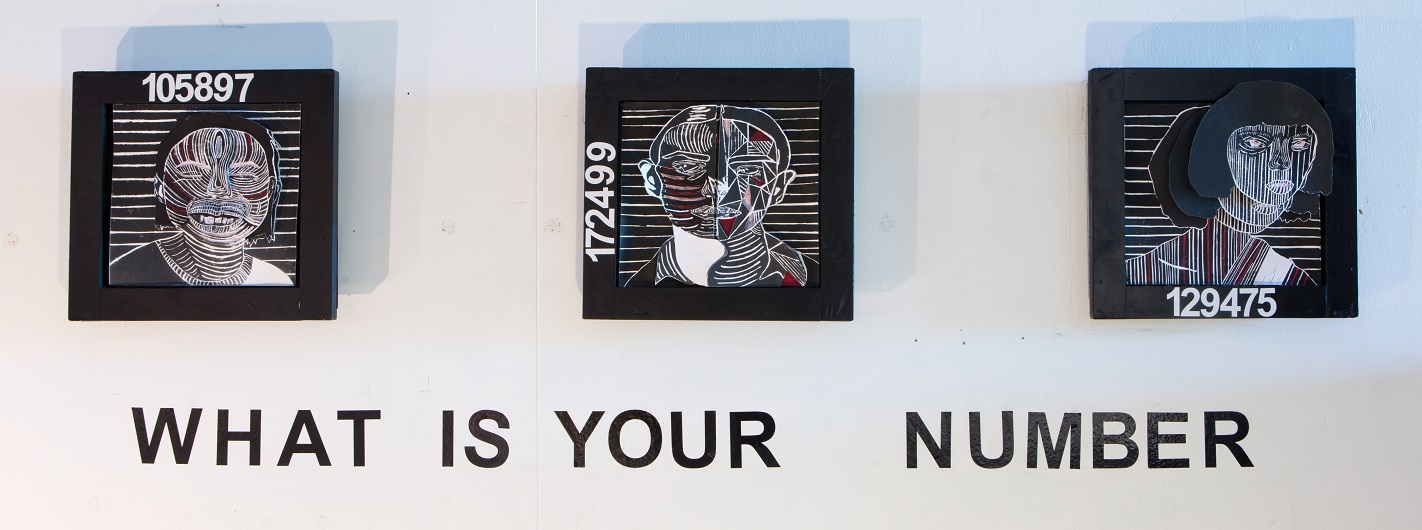
The fractured construction and three-dimensional layers of the print imagery comprising each of the faces in this installation work by Trinity Huf (11B), reflect on the irony of the use of numbers as markers of individual identity.
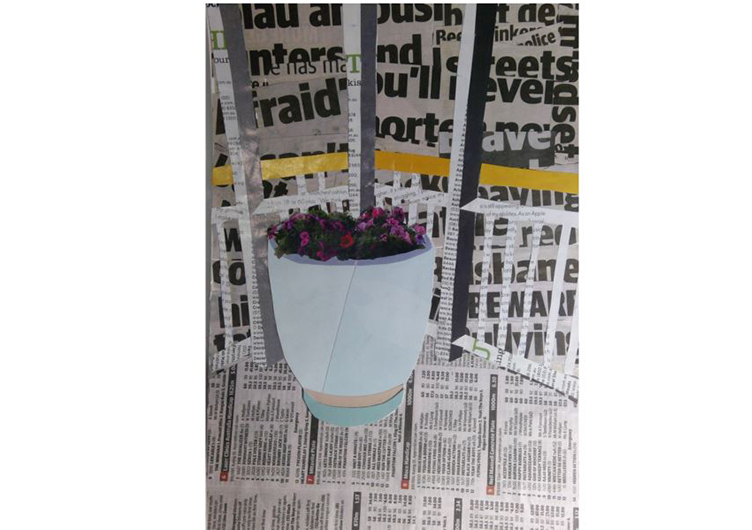
This collage by Lucy Vaughan (9O) effectively contrasts the refuge of home and the calm of this small verandah corner with the storm of world issues raging outside.
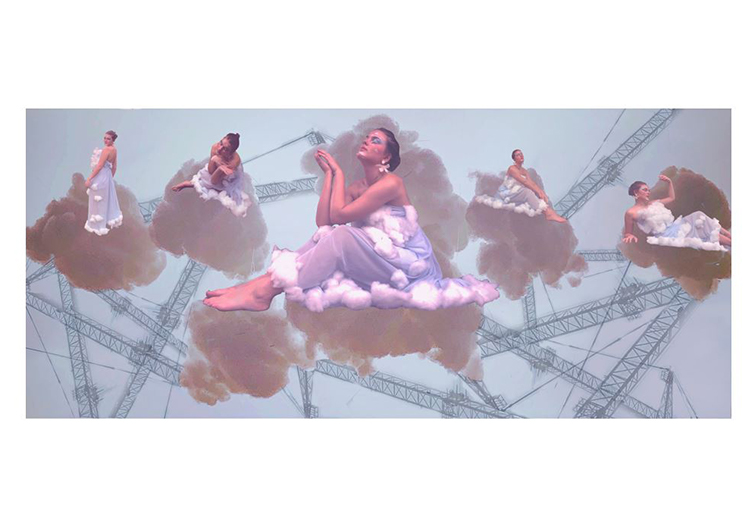
Projected across an entire wall in a darkened room, accompanied with a ‘Manifestation Meditation’ complete with diurnal rhythms, this work by Ruby Norris (12O) takes a tongue in cheek perspective on the artificial means used to construct transcendence from our busy lives.
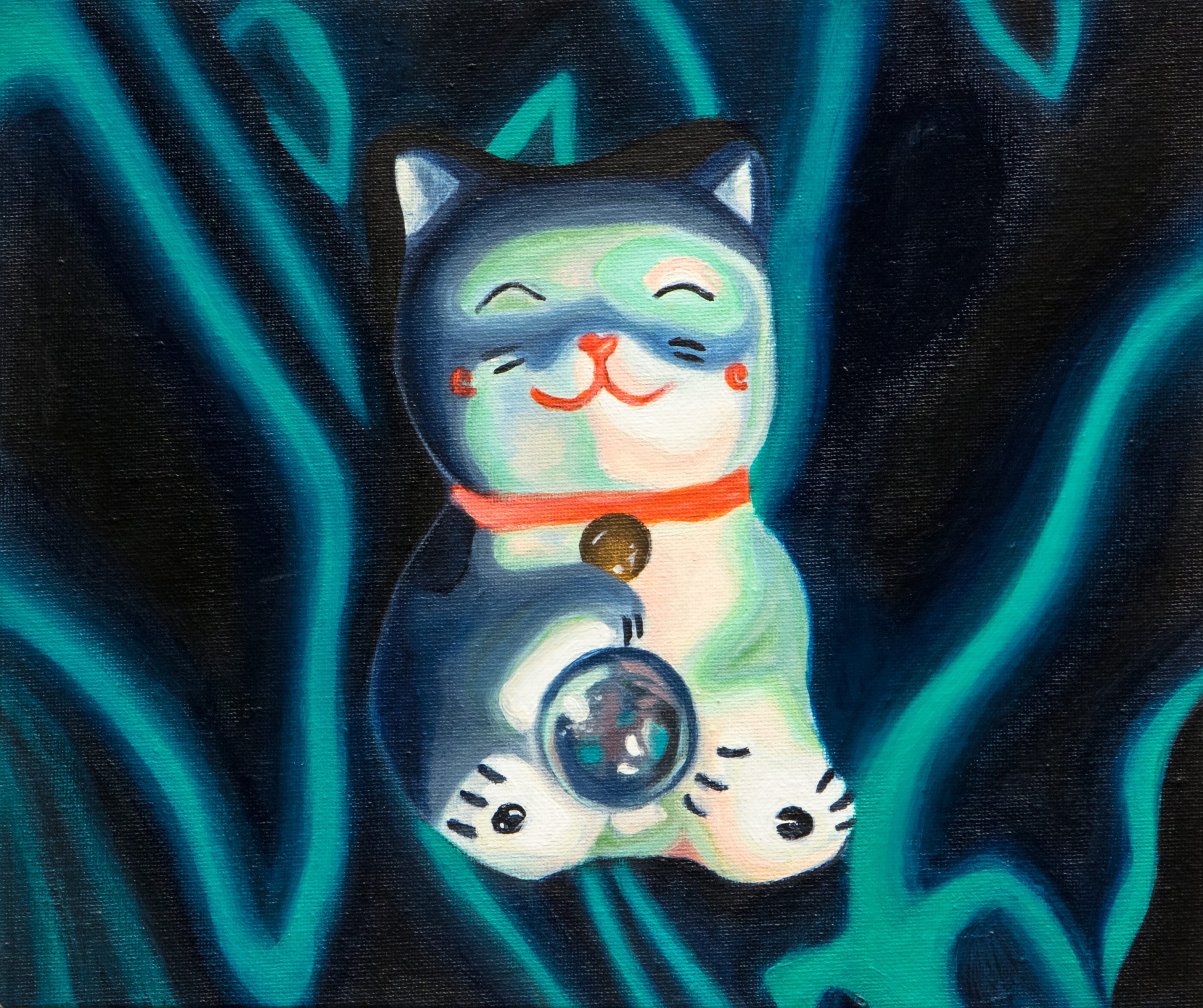
Selecting a personally meaningful object as a subject for her painting, Maddie Miettinen (8B) applied her knowledge of paint techniques and colour harmonies to create this joyful and celebratory image, Precious, developed from her own photographic composition.
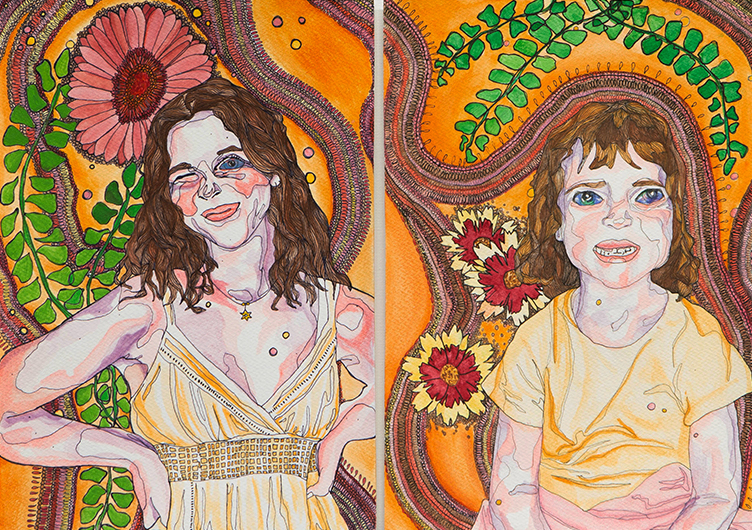
After investigating the work of Australian artist Del Kathryn Barton, Millie Smith (10O), was inspired to develop this double portrait which represents the emotional connection between the two figures.
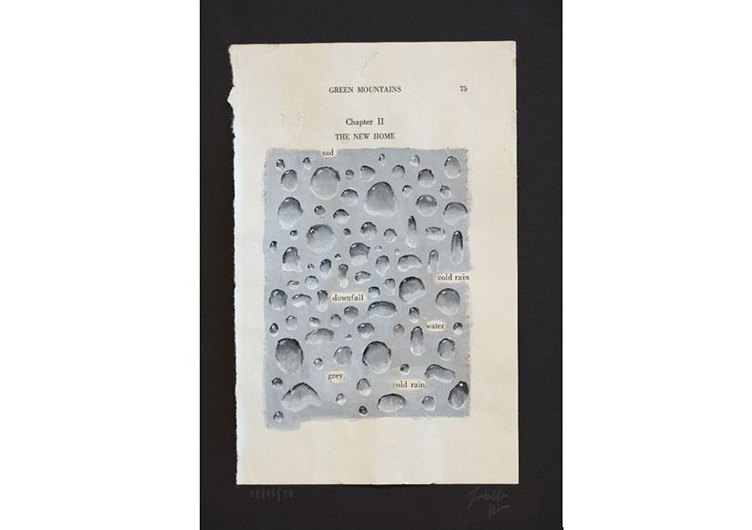
Altered book page by Isabella Ho (8E)
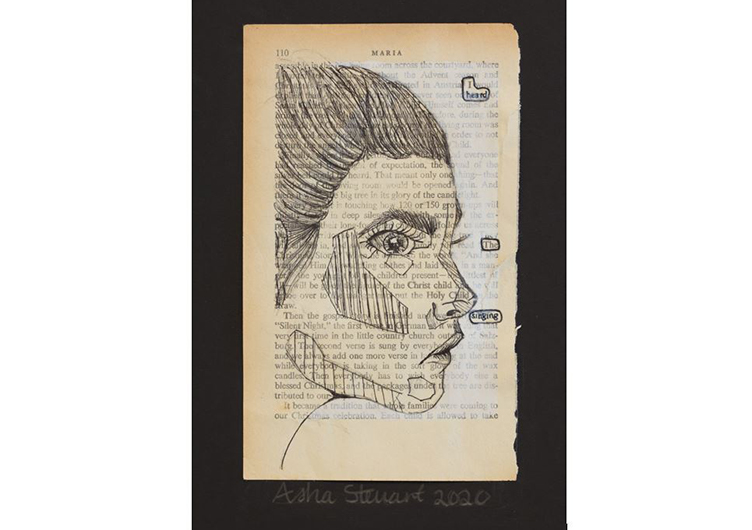
Altered book page by Asha Stewart (8G)
These two altered book pages by Isabella Ho (8E) and Asha Stewart (8G), were developed in response to the work of artist, Tom Phillips. In making these works, each student took a page from a book and constructed a poem of words found from within the original text. The poem was then extended and complimented with an image demonstrating each student’s choice of media and representational style.
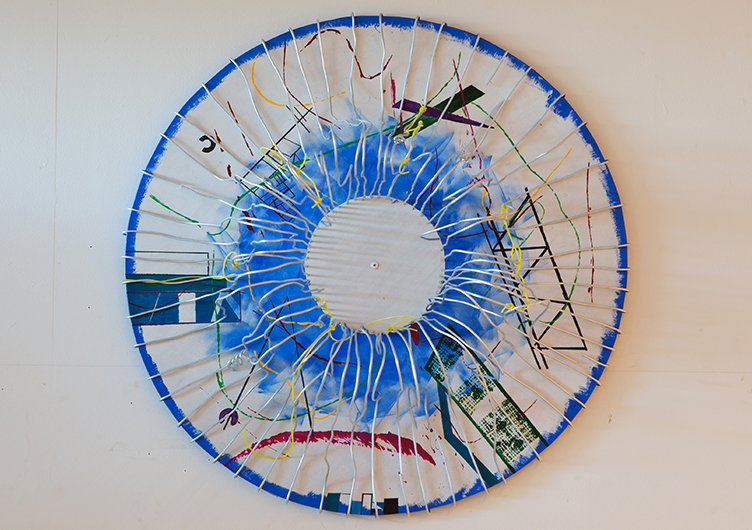
Living Static by Alexandra Keeley (11E) was developed in response to her investigation of the abstracted works of Kandinsky, and the use of elements and principles of visual language in expression. Alexandra’s work represents the daily experience of moving into and out of the structures of school life.
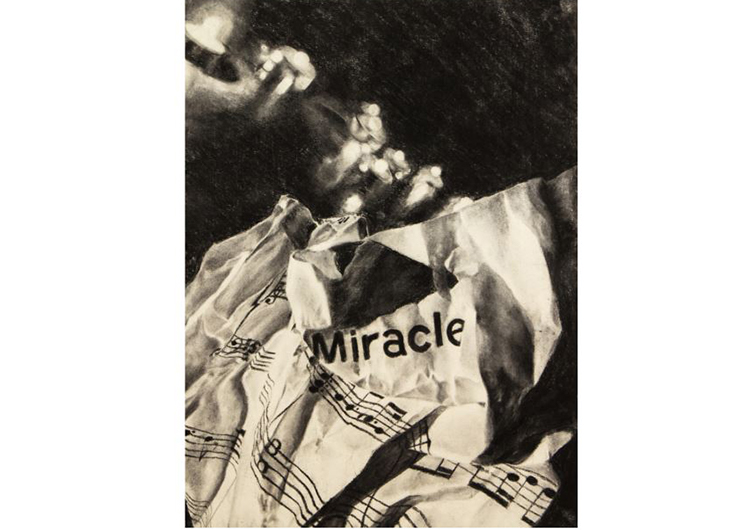
Shown as a point of light in darkness, the crumpled sheet music with its composition in progress is used as a representation of hope and curiosity in the search for understanding and expression. Devan Zhao (9L) uses the rich darks and lights of her charcoal media, Progress, to extend her theme of light and hope within darkness.
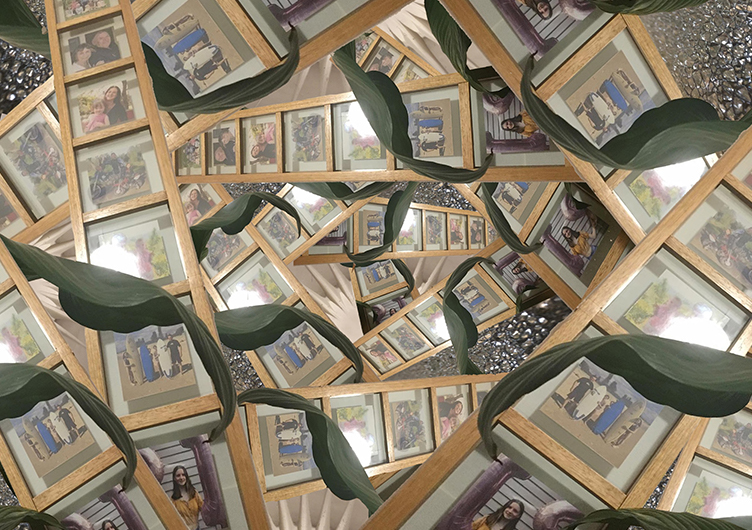
While participating in home learning last term, Year 9 Visual Art students developed a series of compositional collages to reflect the theme ‘A Room at the Heart of my Home’. In this work, Caitlin Davies (9W) represents the function of her living space as a repository of personal and family histories.

Working from her drawing studies of a seed pod, Year 7 student Mia Neubecker (7O) simplified and stylised her image, developing it as a relief printing plate constructed of found materials. After printing, her works were further extended with the use of mixed media components, creating a series presented as a concertina book.
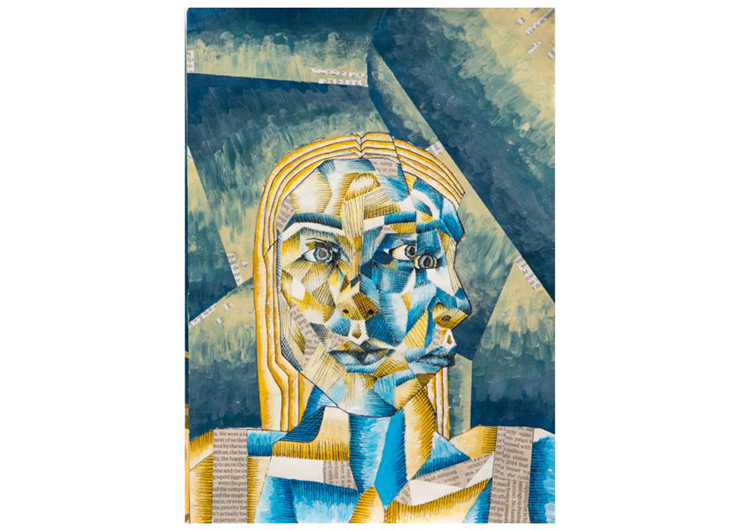
Developed in response to a study of 20th century art movements, this self-portrait by Sienna Crosisca (10M), uses the visual forms of Cubism to express her contemporary experience of life and identity.
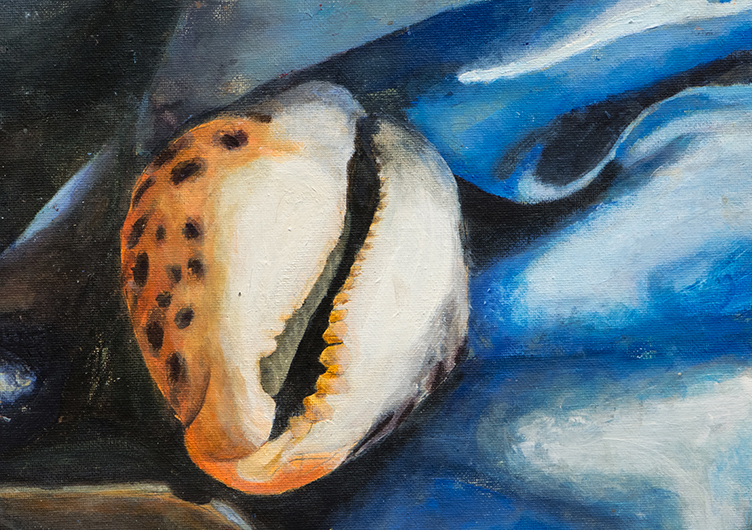
First composed as a photograph, delicately framing the subject with wave-like folds of fabric, and then developed with careful colour harmony and soft graduation techniques, this painting by Lara Koekoek (8L) shows wonderful observation and sensitivity for the ‘preciousness’ of her subject.
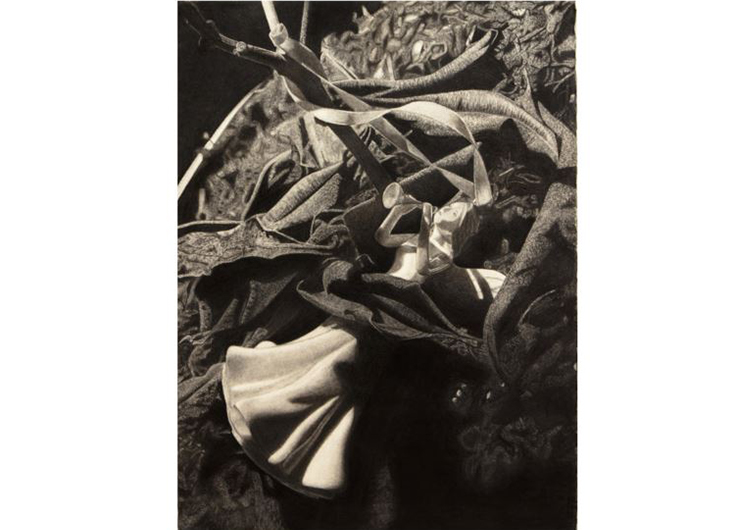
Developed from a photograph carefully framed and constructed by the student, this large scale charcoal drawing by Sherry Jiang (9M), develops her theme Relentless Melodies with creative attention to the observational detail of light, form, tone and texture.

Last term while learning from home, Year 10 students engaged in a series of self-portrait tasks reflecting on the work of contemporary Australian artists.
Responding to Tim Storriers’ work the Histrionic Wayfarer, Visual Art student Kiera Ryan (10E) first constructed and photographed a self-portrait figure using clothing and objects associated with her period of home learning. The posture and design of this figure was given further animation in a drawing exploiting the liquid qualities of her selected media.
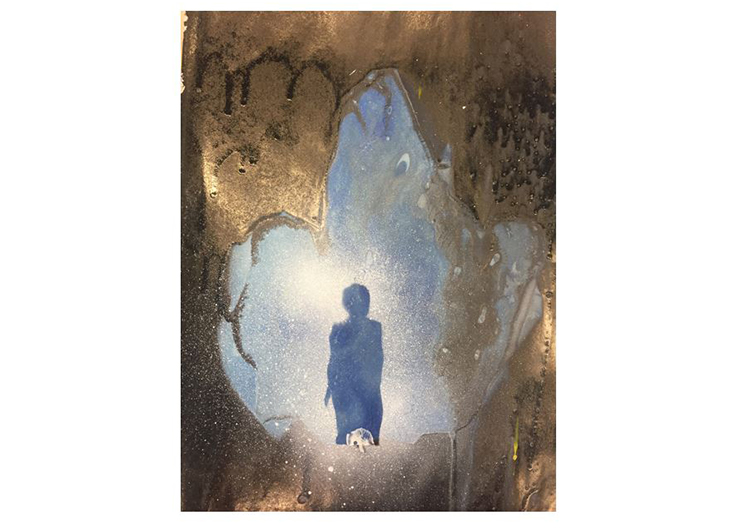
Part of a series of experimental works created in the process of developing a finished artwork, this image, by Lola Thew (12R), of a human on the threshold of new experience retains a sense of a poignant moment.
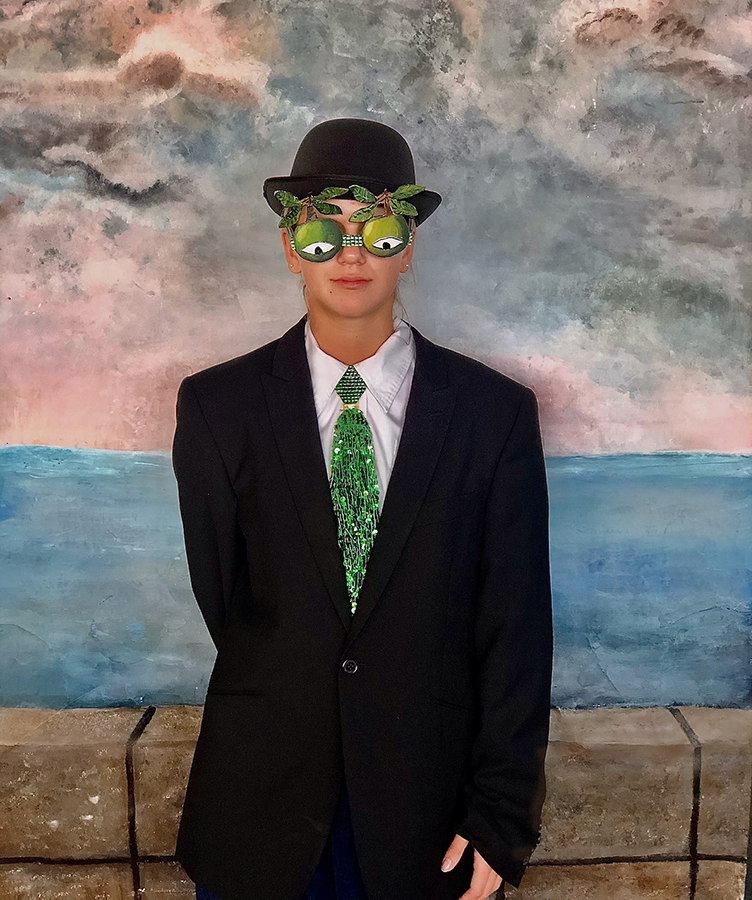
Showing a wry sense of humour, Son of Elton, by Lucjia Noble (11M), is a photographic appropriation of René Magritte’s surrealist painting, Son of Man, made in 1964.
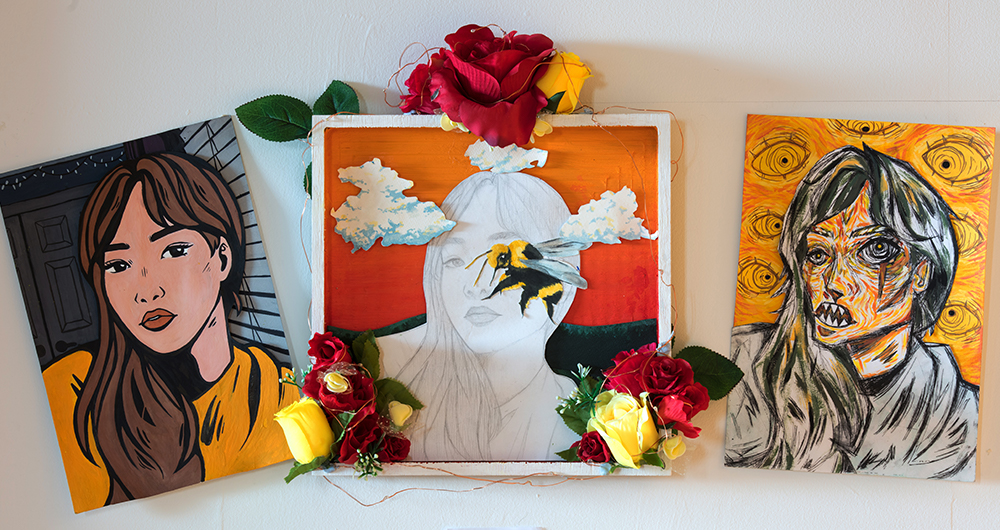
In this week’s Artwork of the Week, Jessica Do (11B), confidently appropriates the ideas and visual forms of three different representational styles to show facets of her own personal and contemporary context.
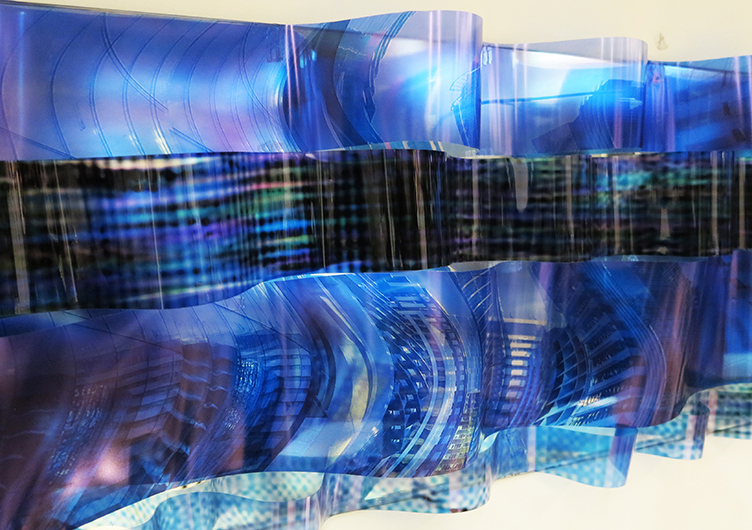
Constructed from printed acetate over a mirrored surface, this work by Lucinda Bell (12G), builds on her observation of the warped images of city buildings captured in the mirror glass of Eagle Street buildings.
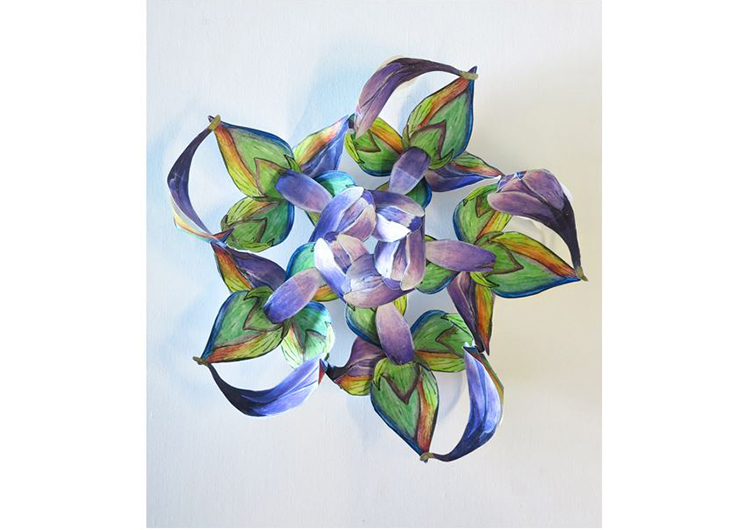
In this multi stage work, Eliza Canfield (8E), used watercolour to develop two images of forms from nature. Her images were then printed in multiple, cut outs and developed into individual three dimensional forms complementing the natural form of the original. Using a grid of concentric circles with a five point radius, Eliza experimented with ways to combine her individual forms to build the three dimensional pattern and movement of her mandala.

Confidently executed with bold strong lines by Grace Gillies (8H), this drawing is one in a suite of quick ‘warm-up’ drawings undertaken by Year 8 students in the lead-up to their ‘Still Life’ painting task later this term.
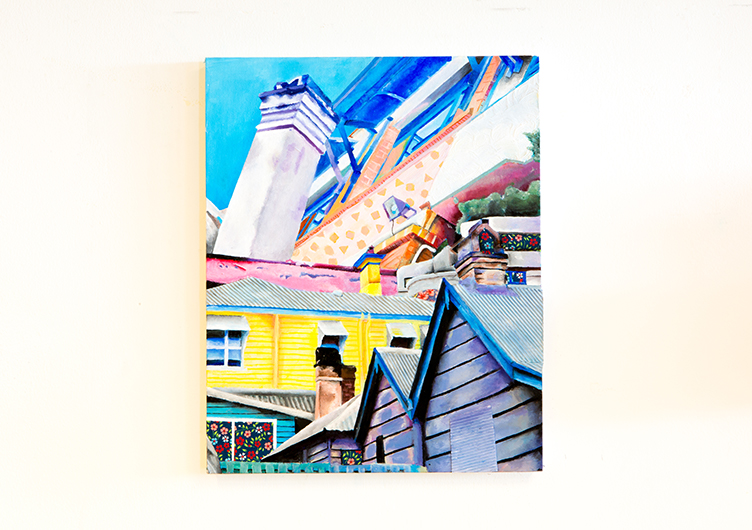
Combining impressions of the local Spring Hill area, Maxine Gamer’s (10G) mixed media work, ‘Brought to Life’, shows the layers of life and experience informing the neighbourhood. From the new tower blocks overshadowing original homes to bright domestic decoration, the artist shows us the energy and richness of our inner-city suburb.


